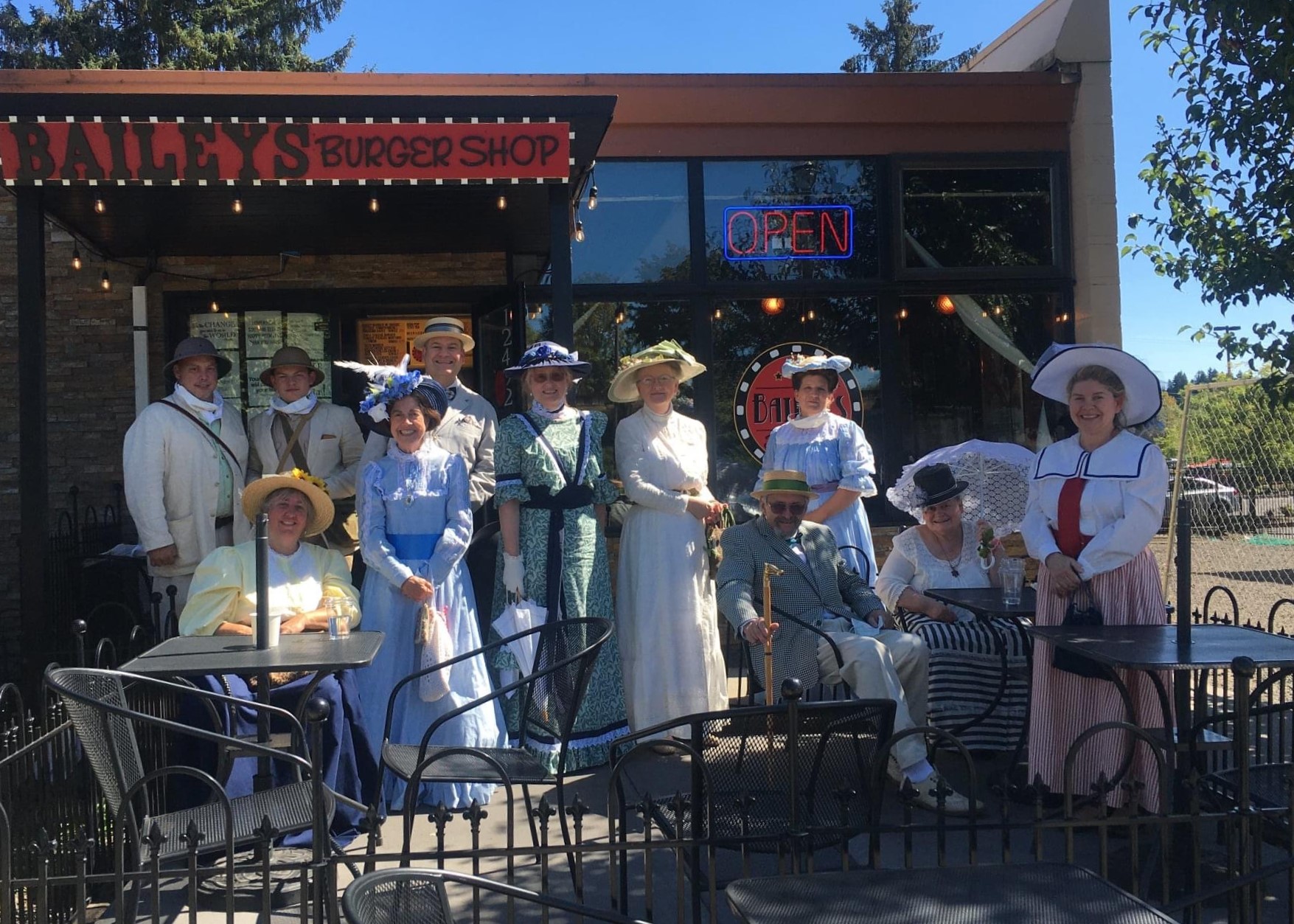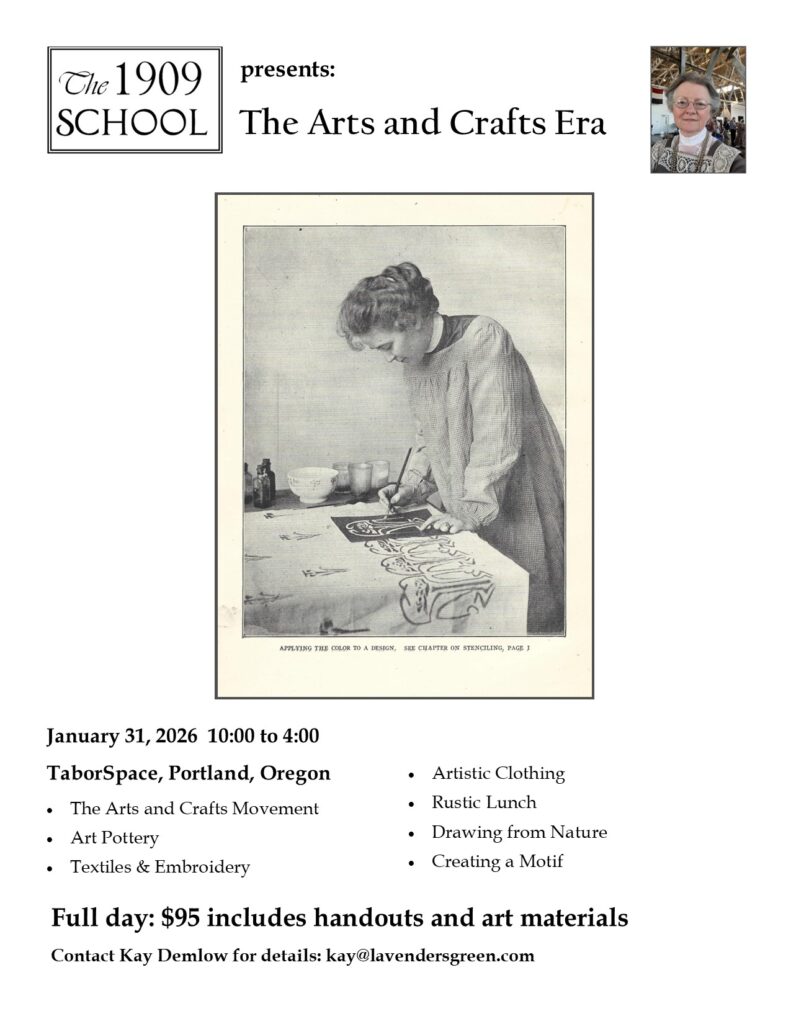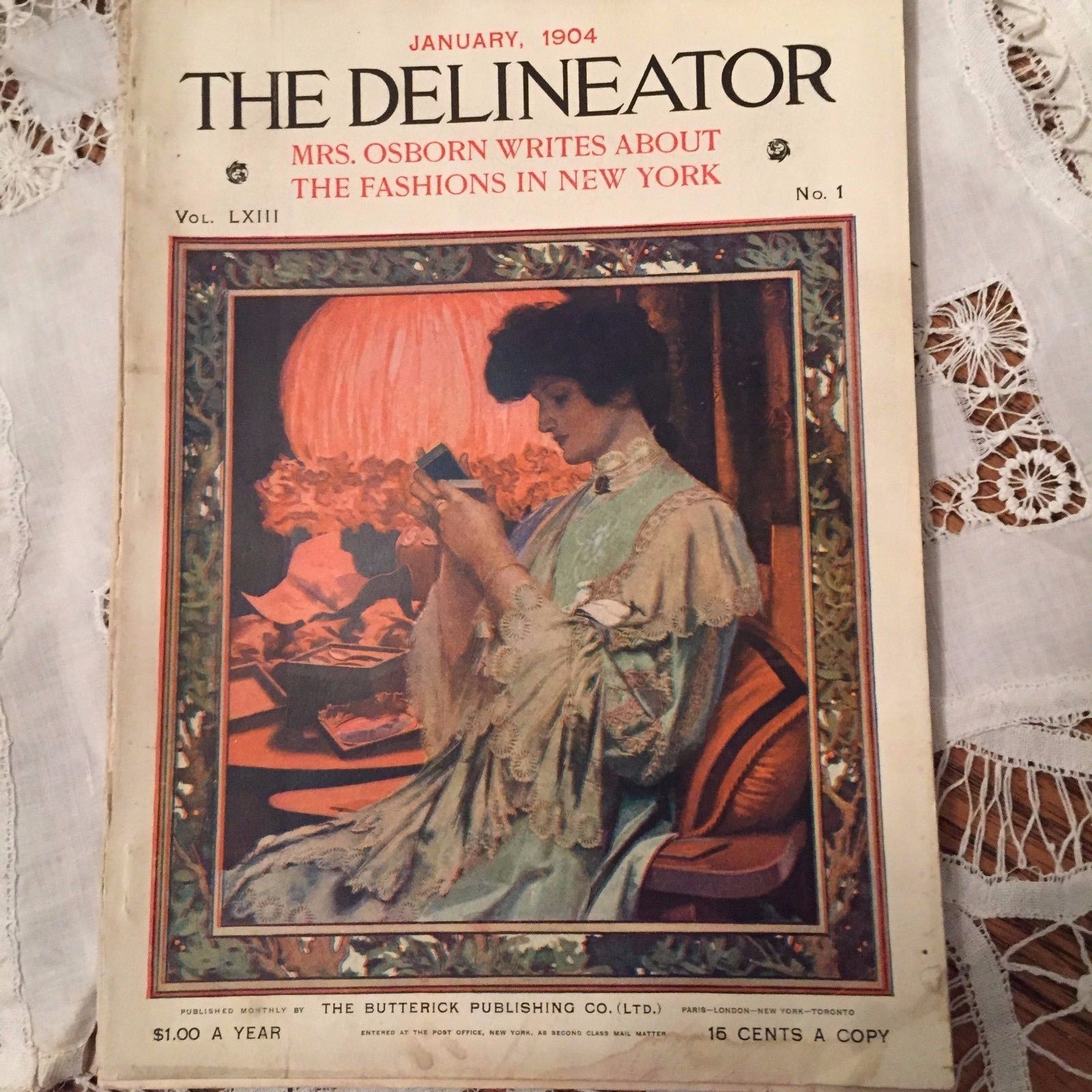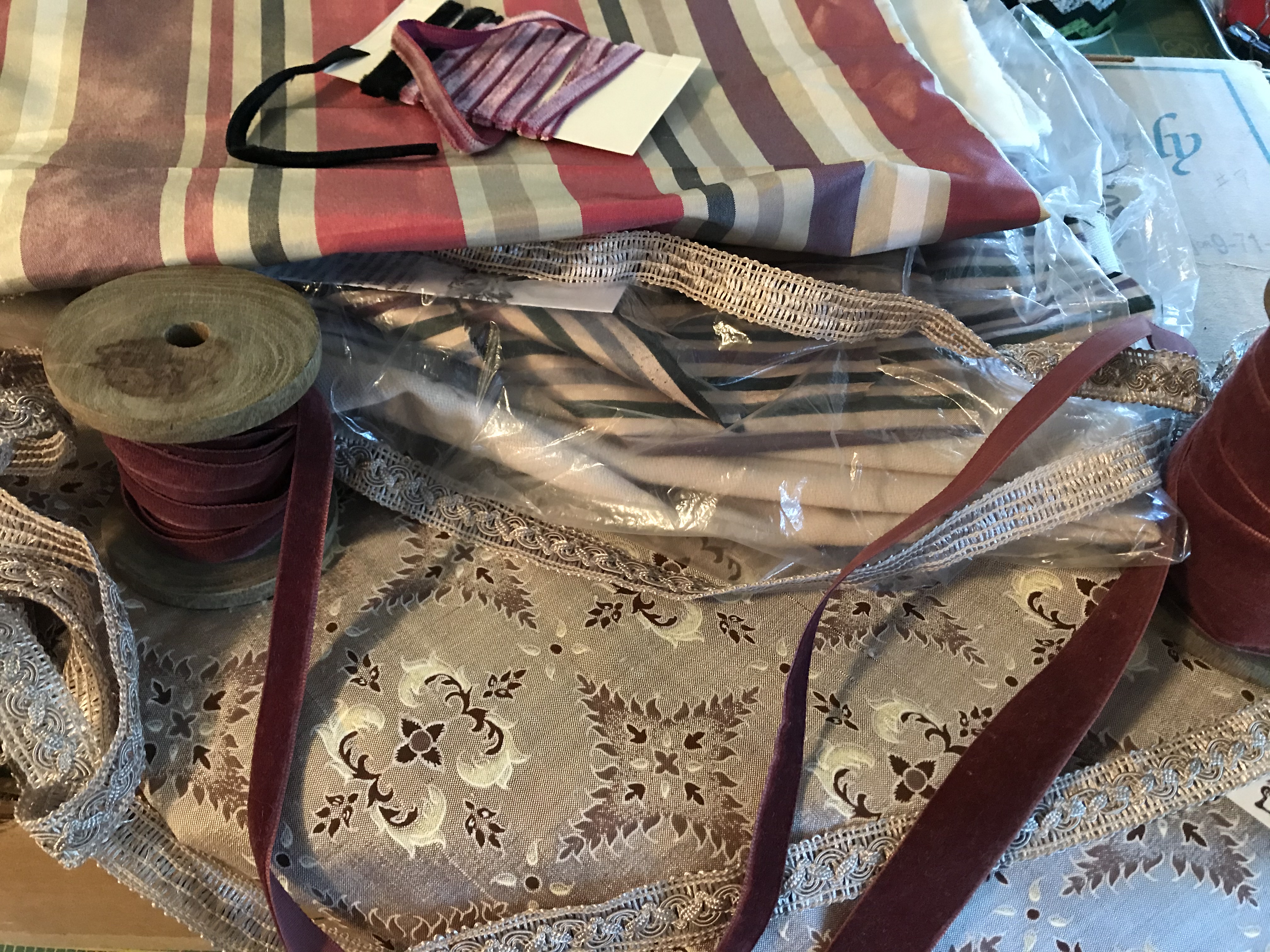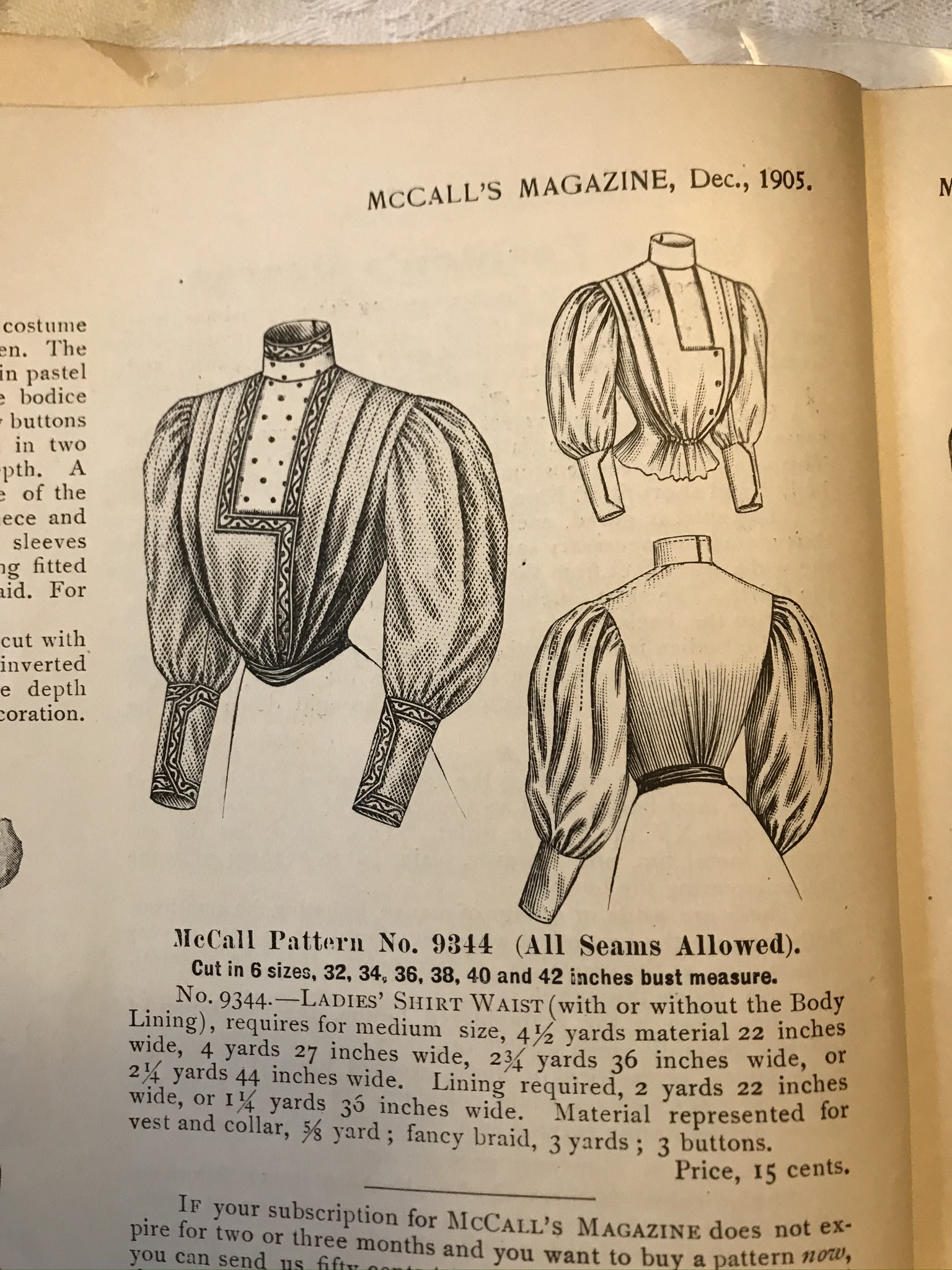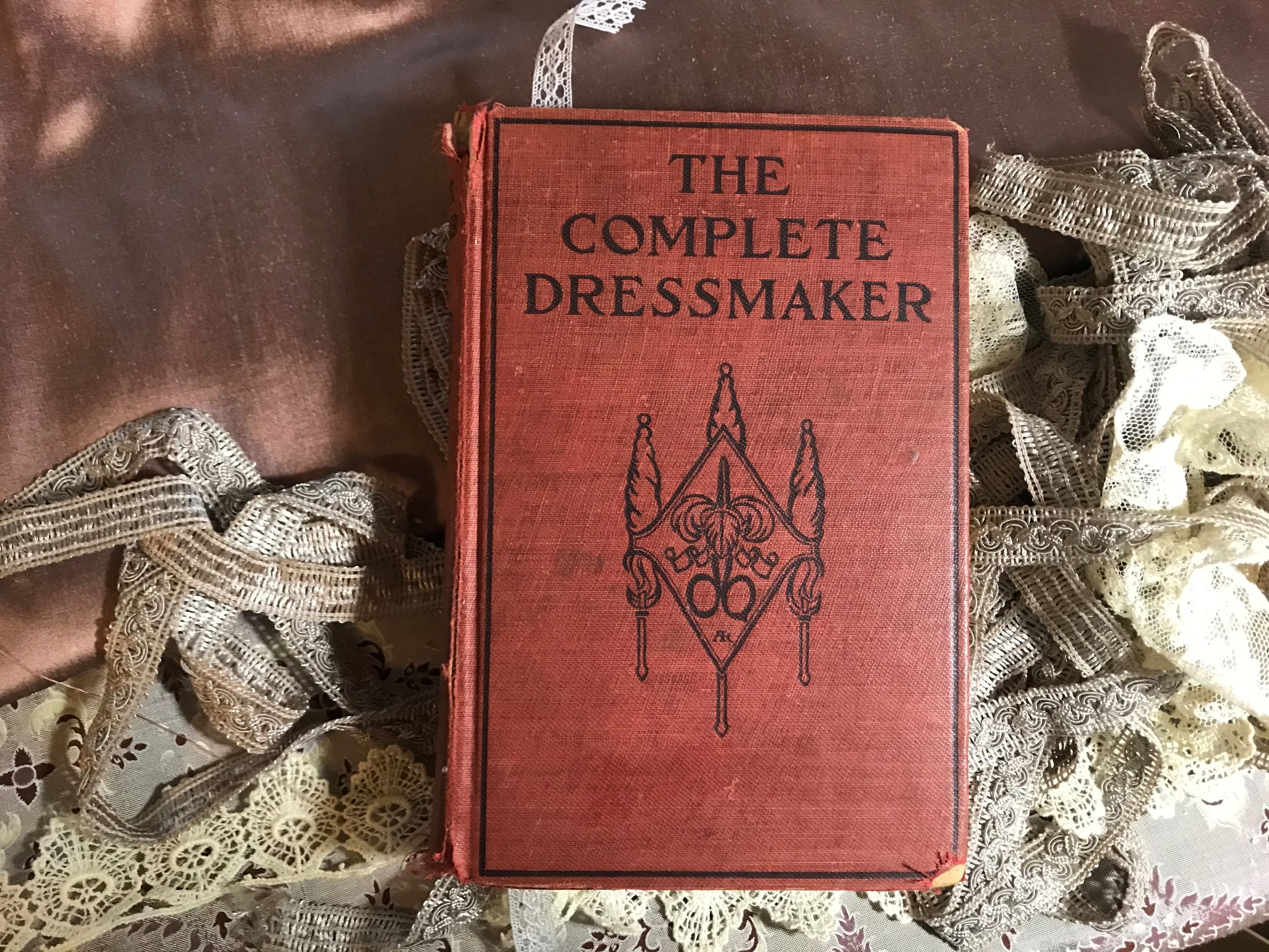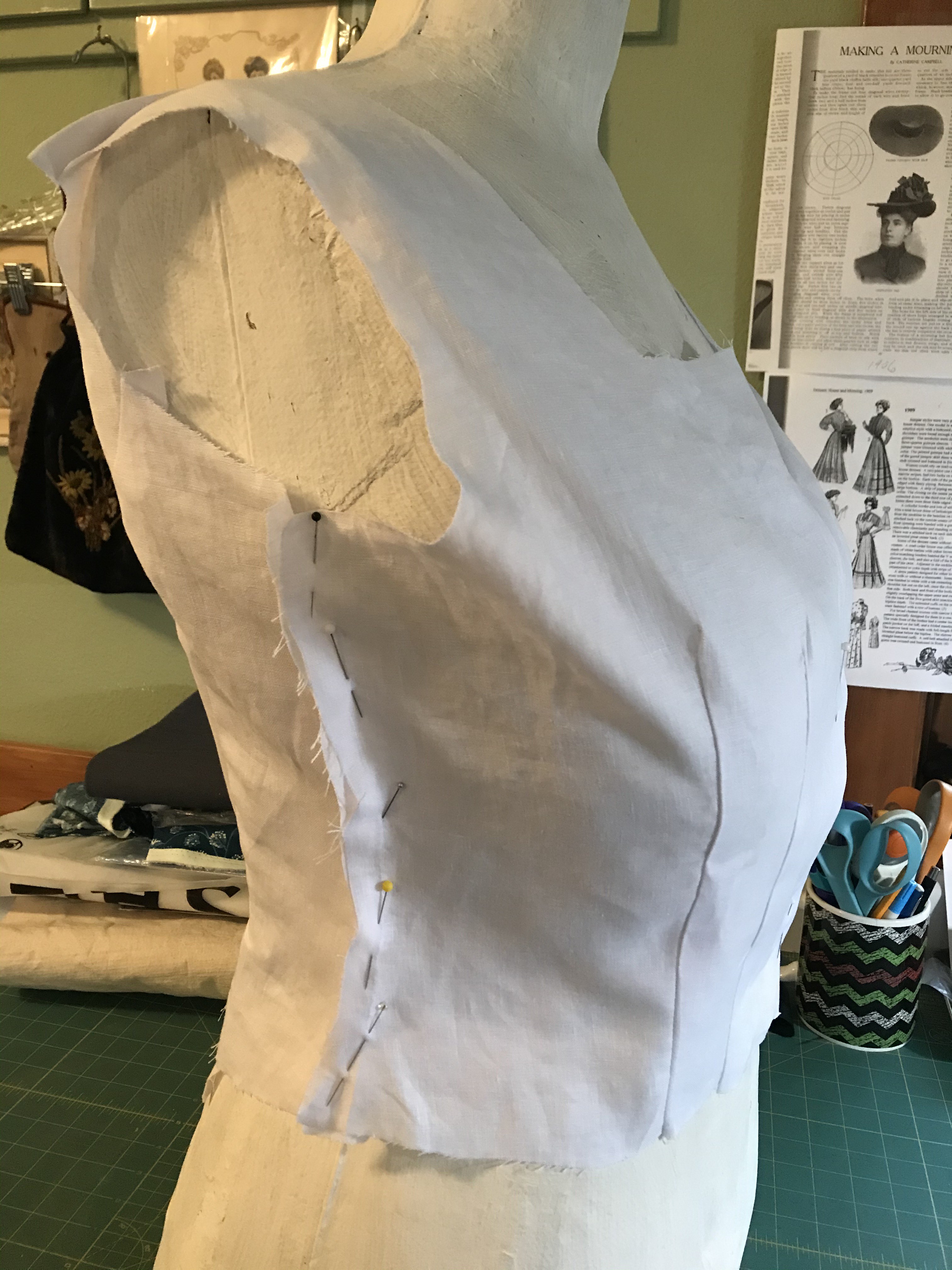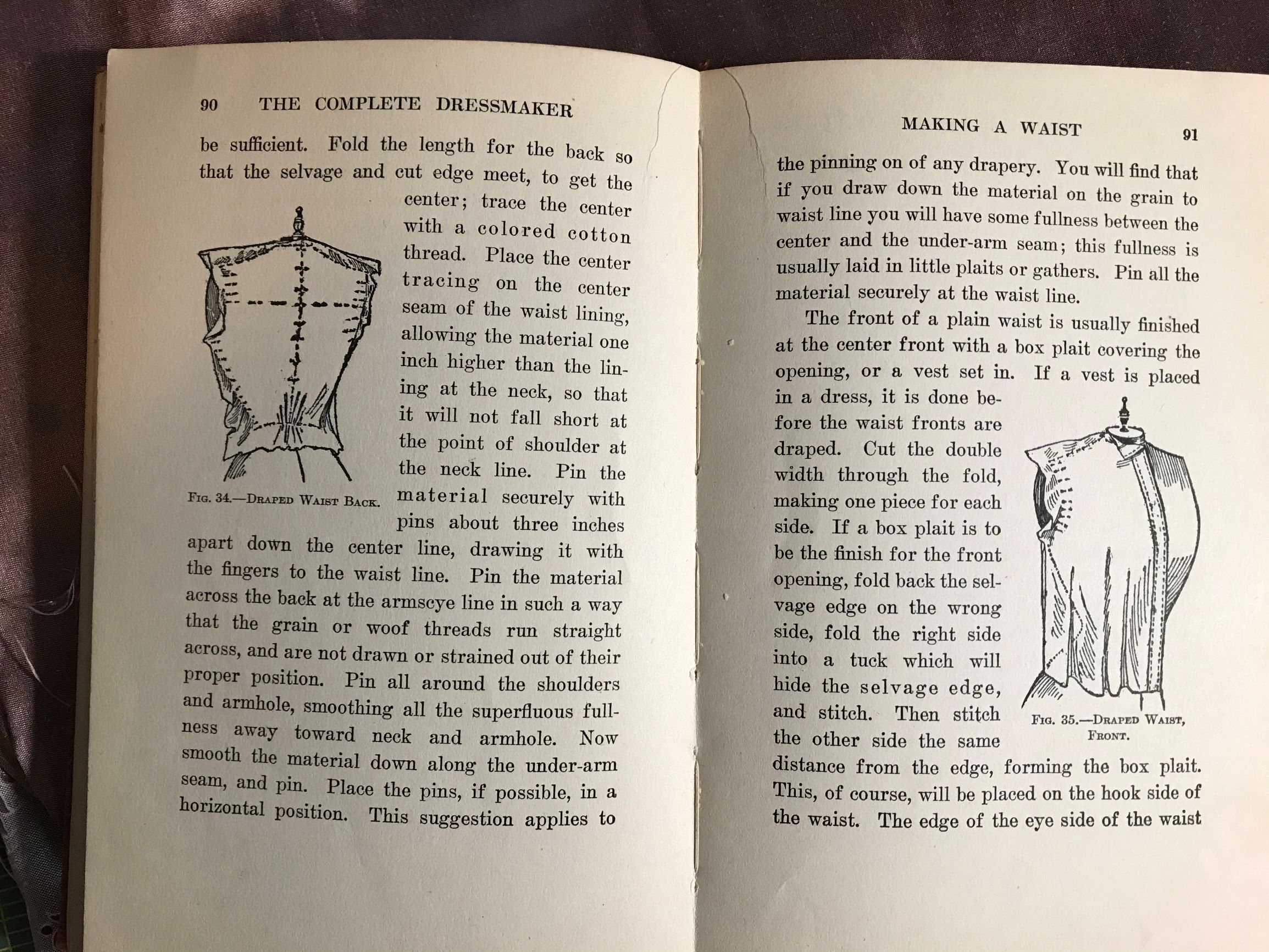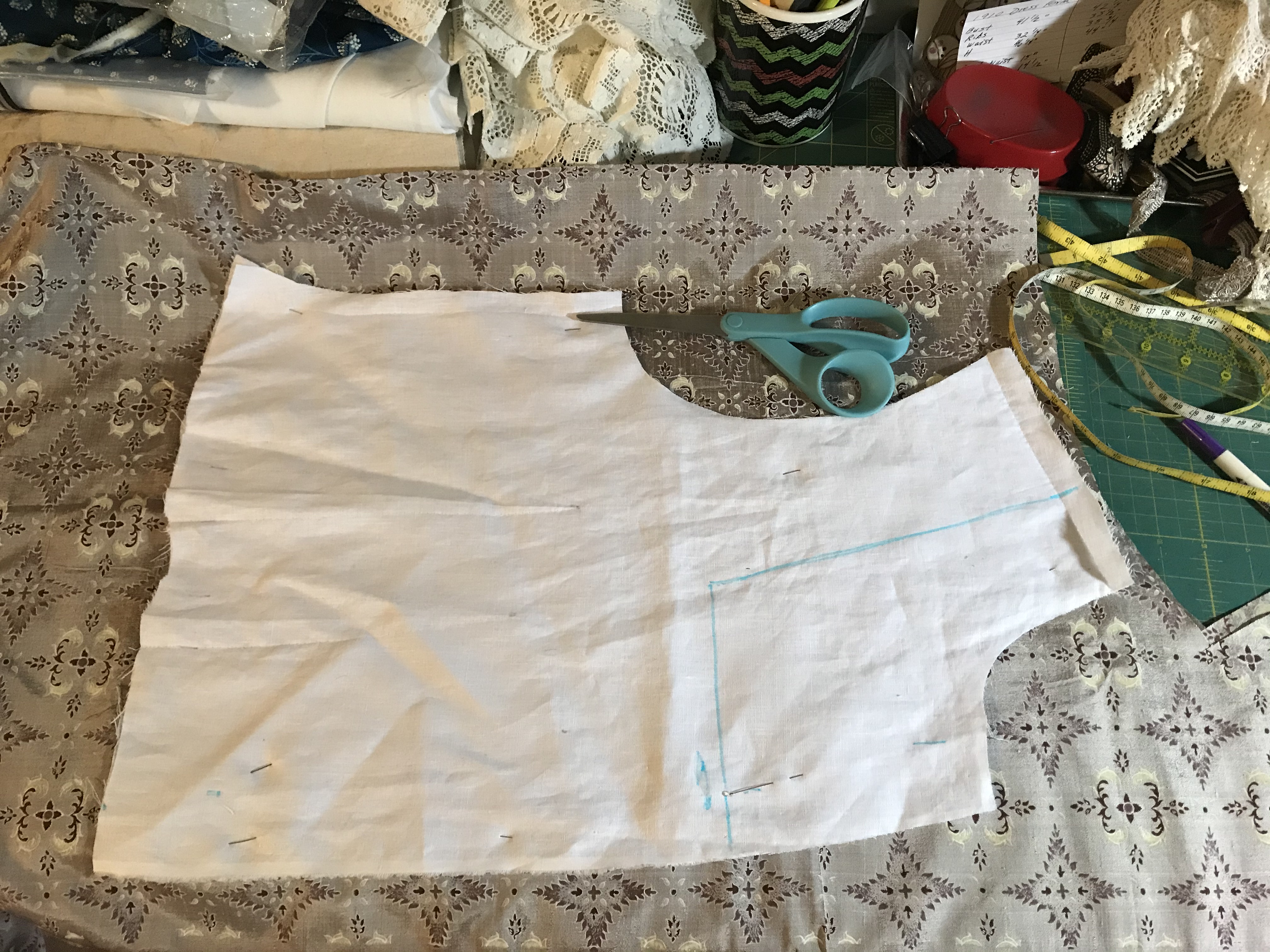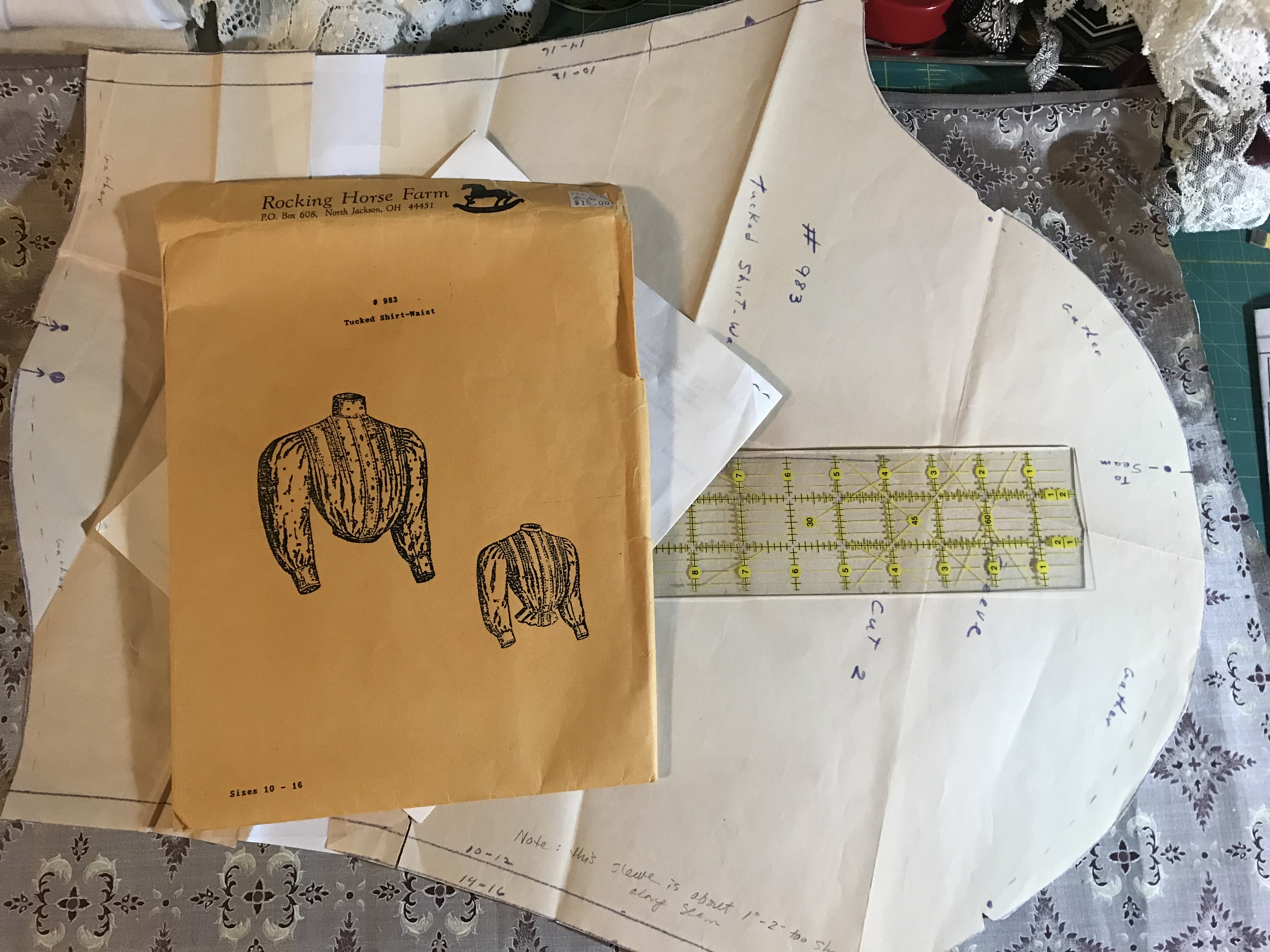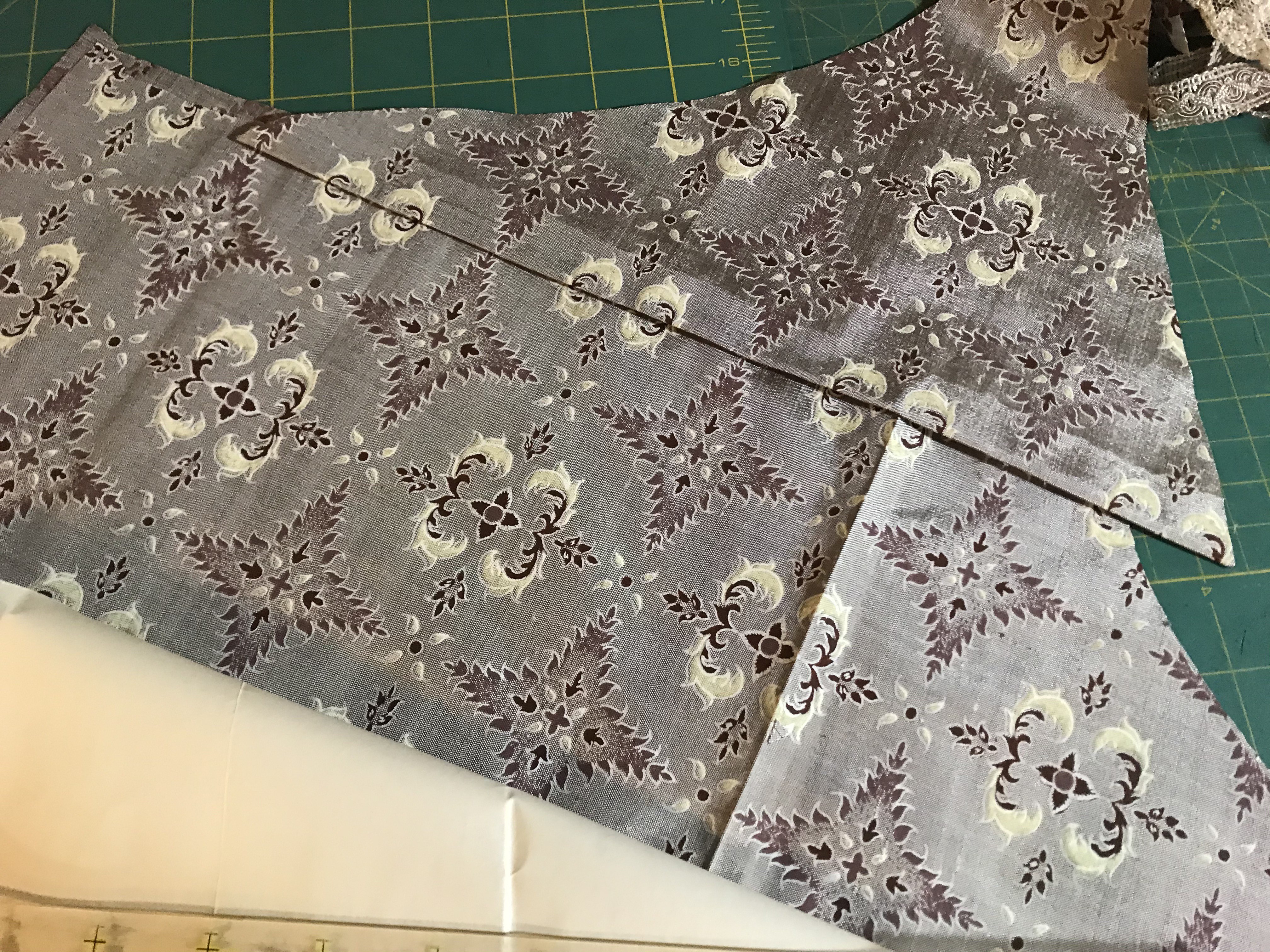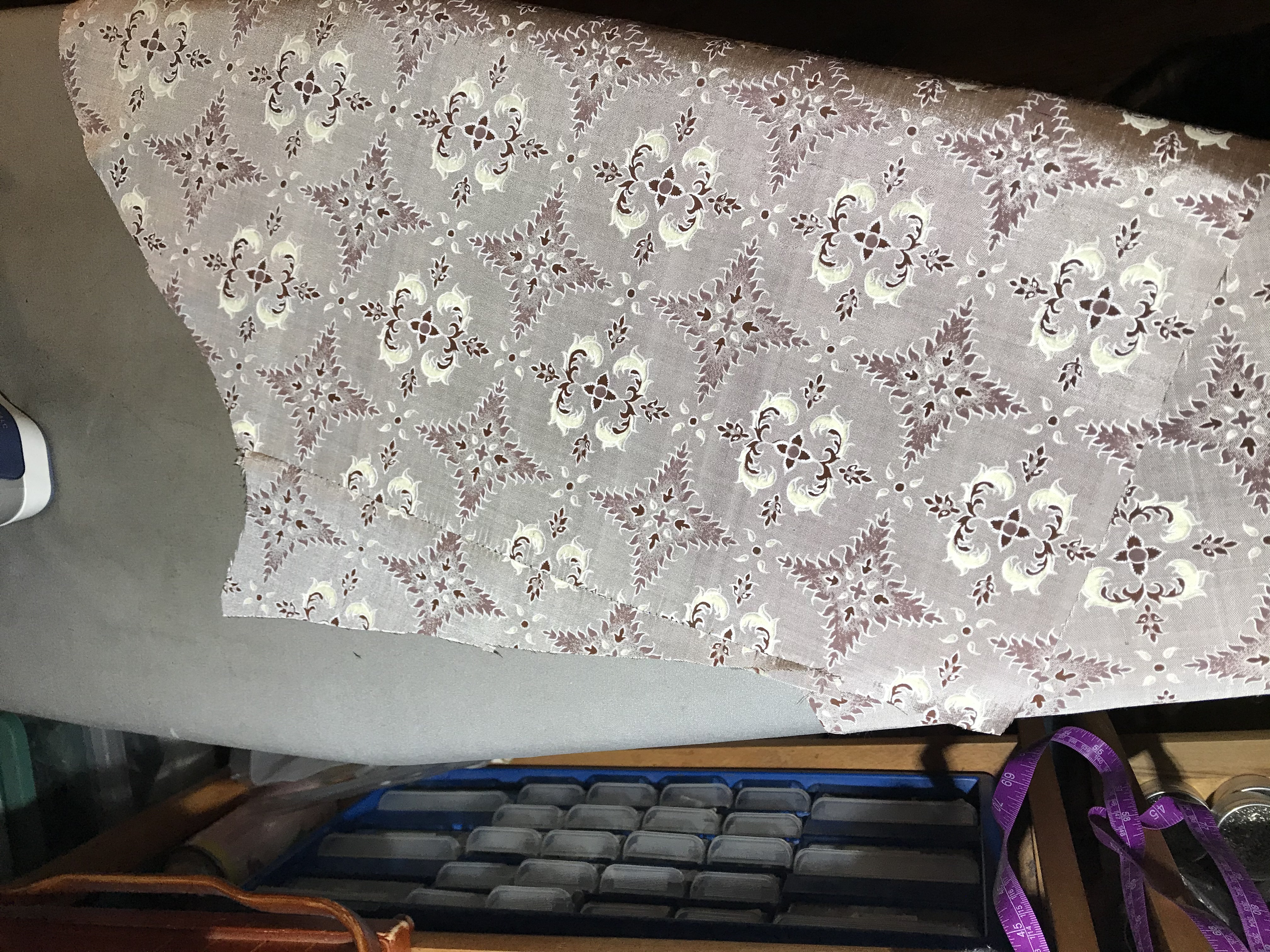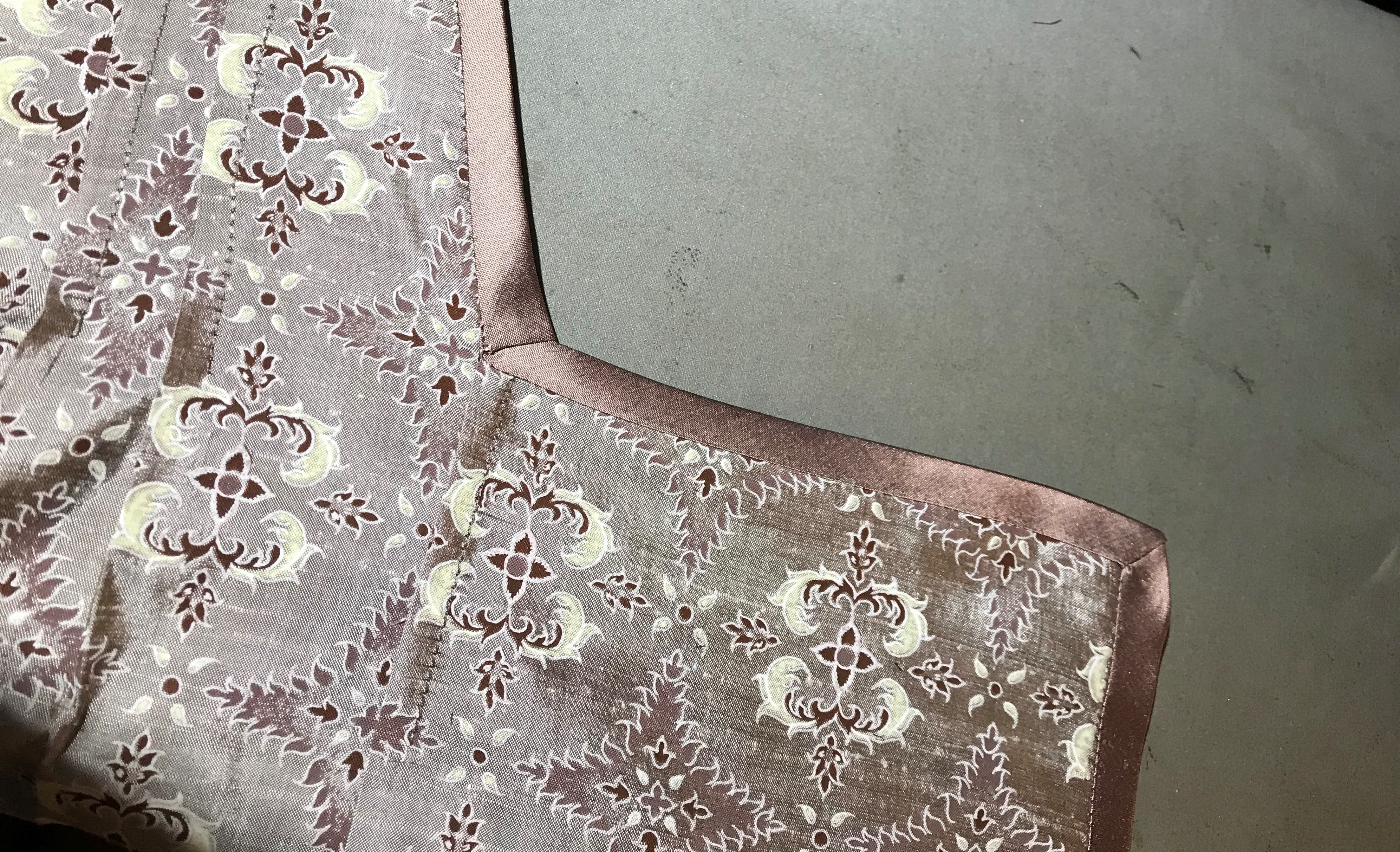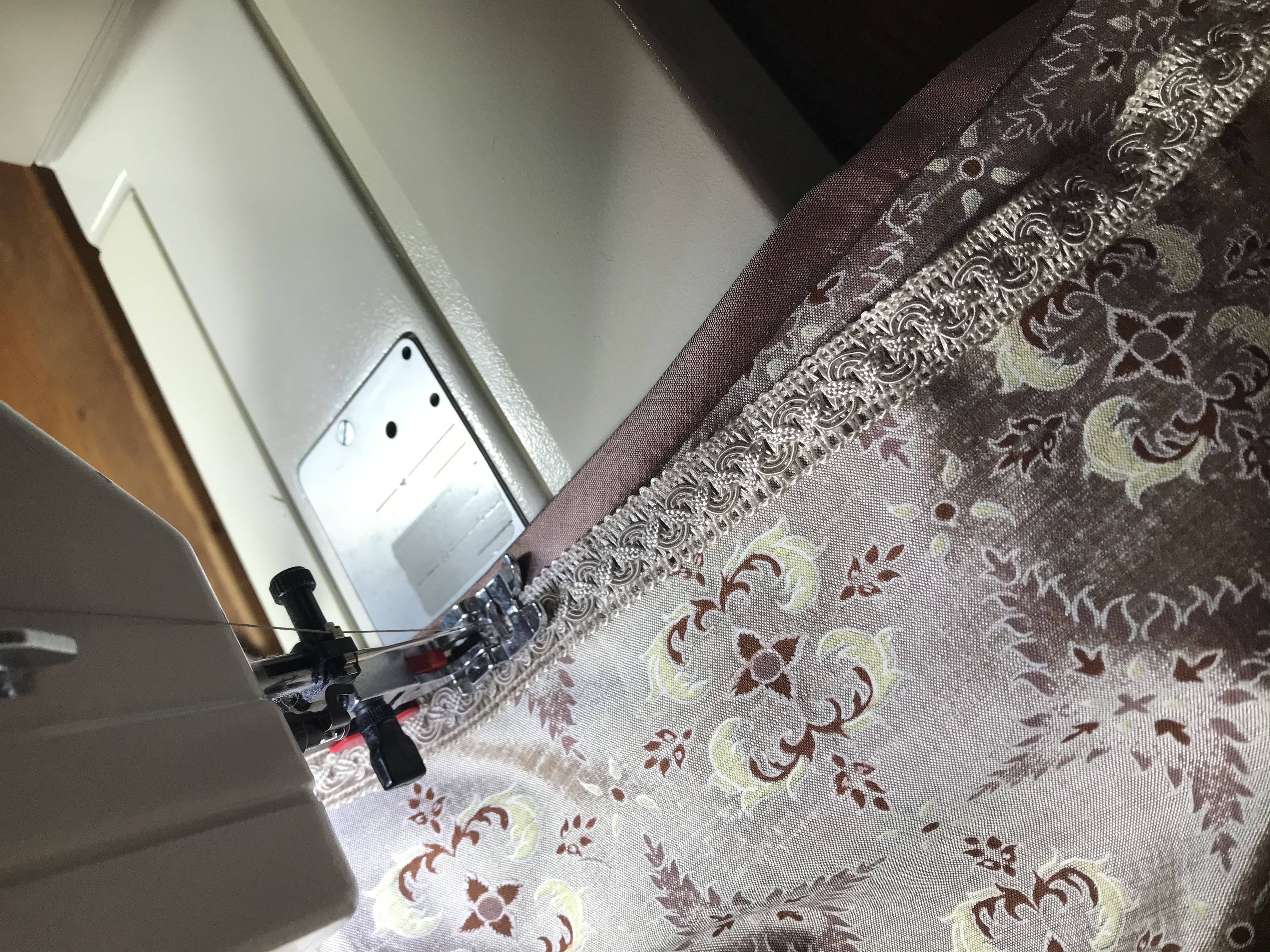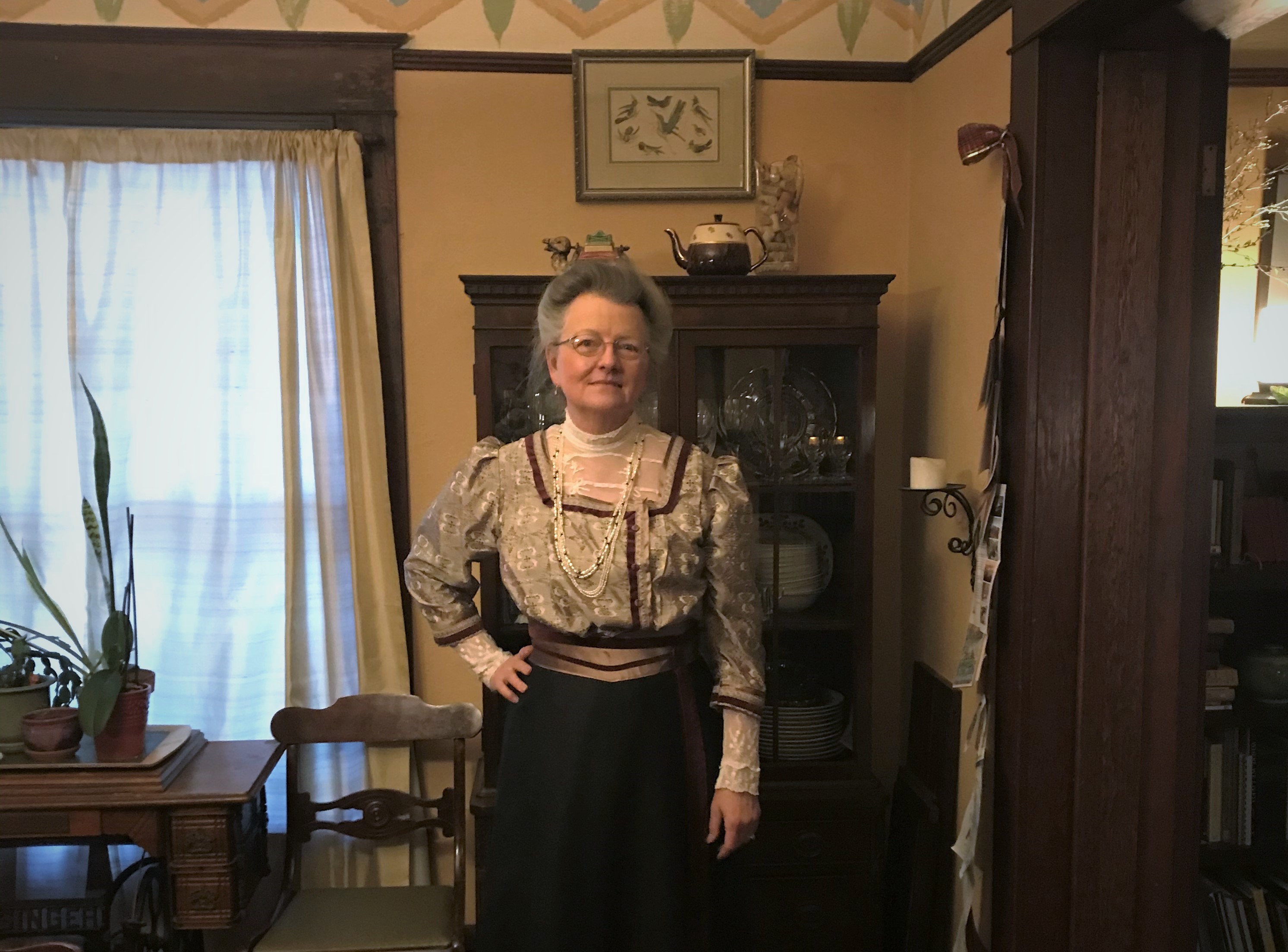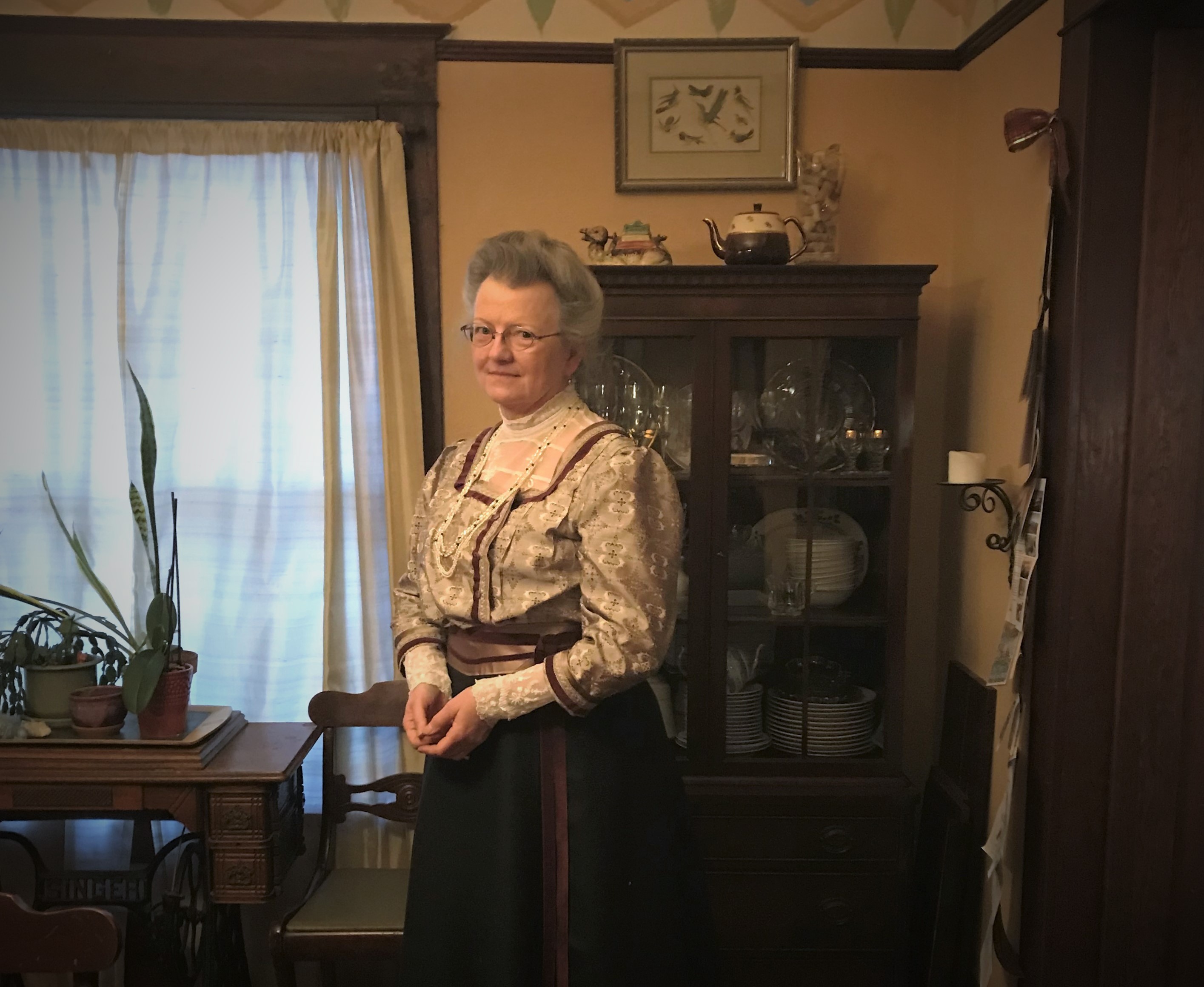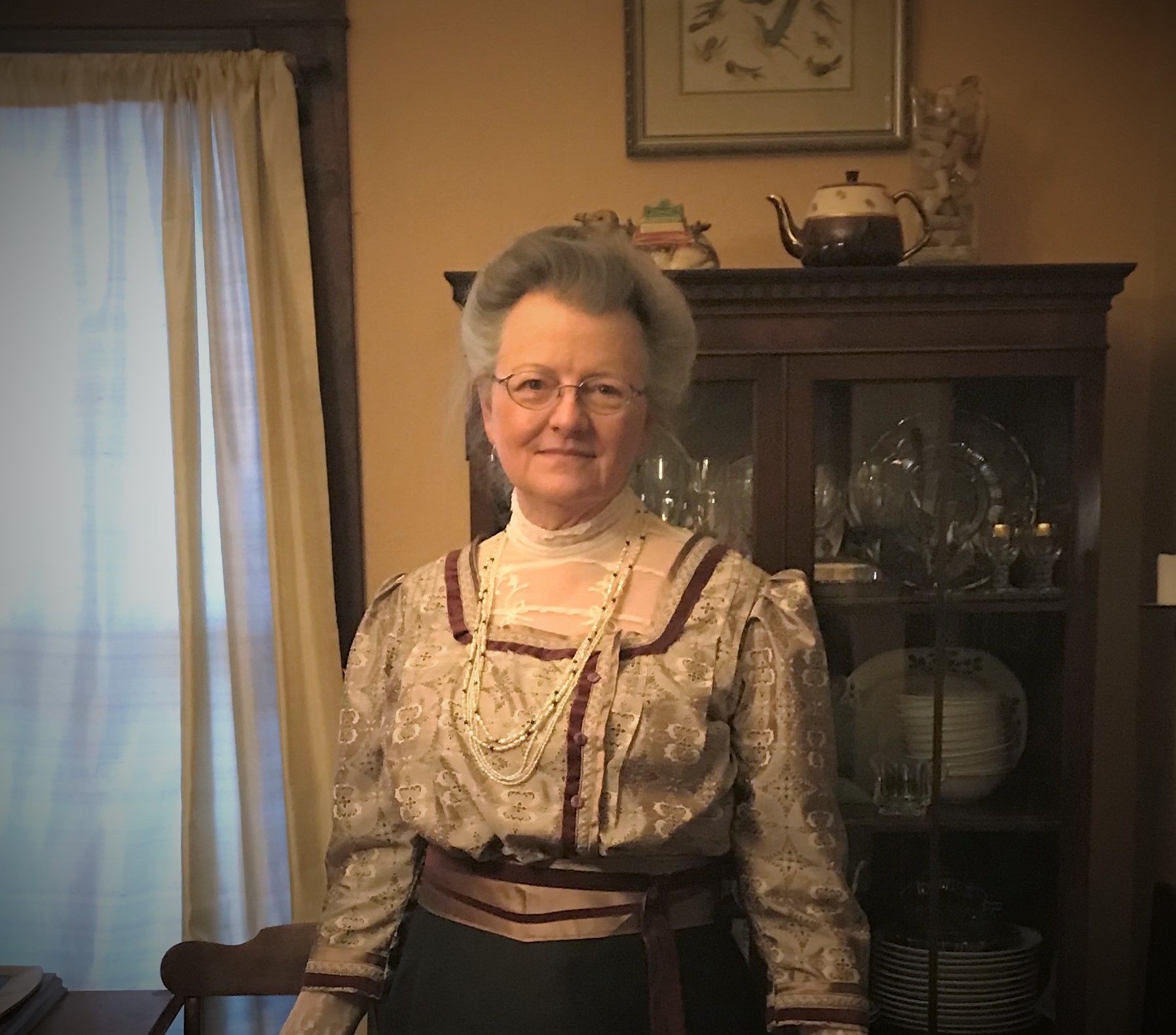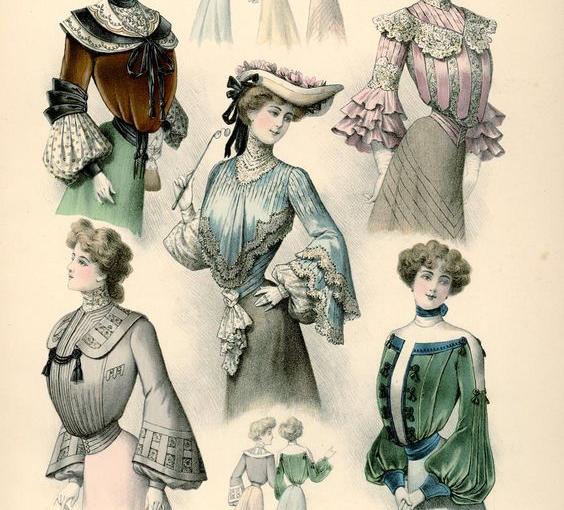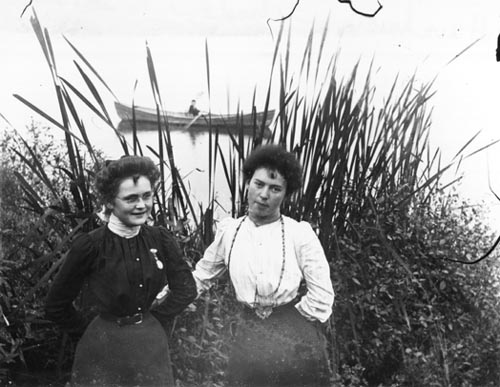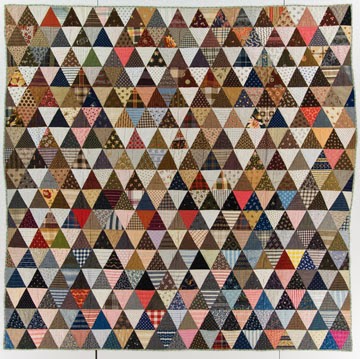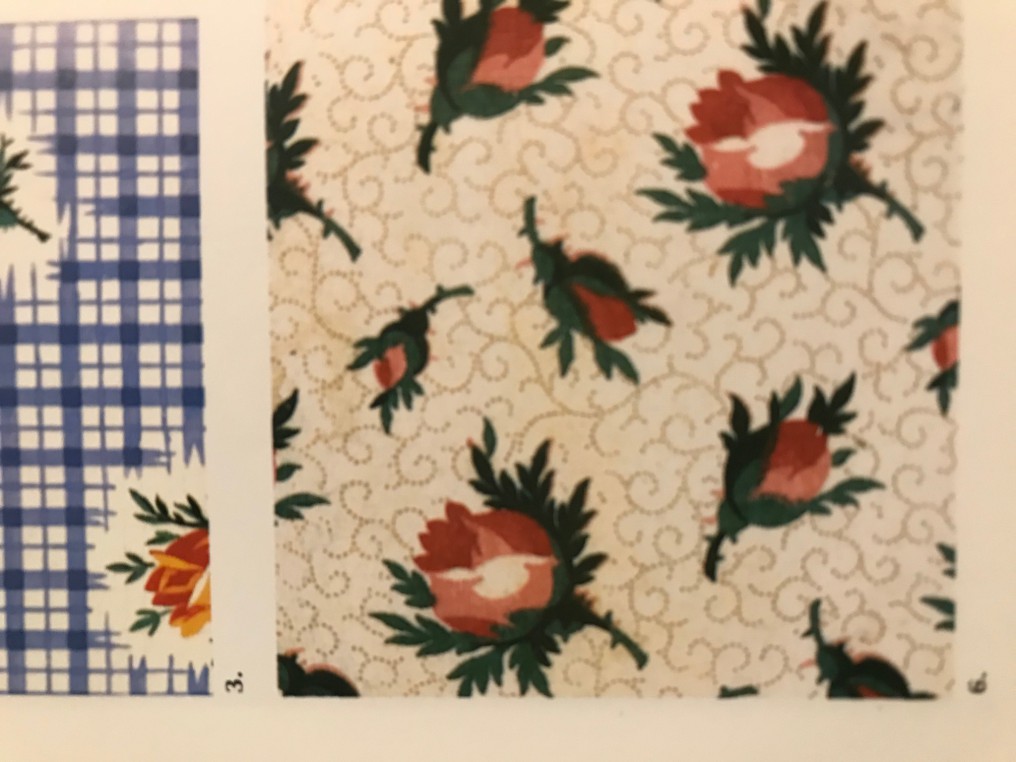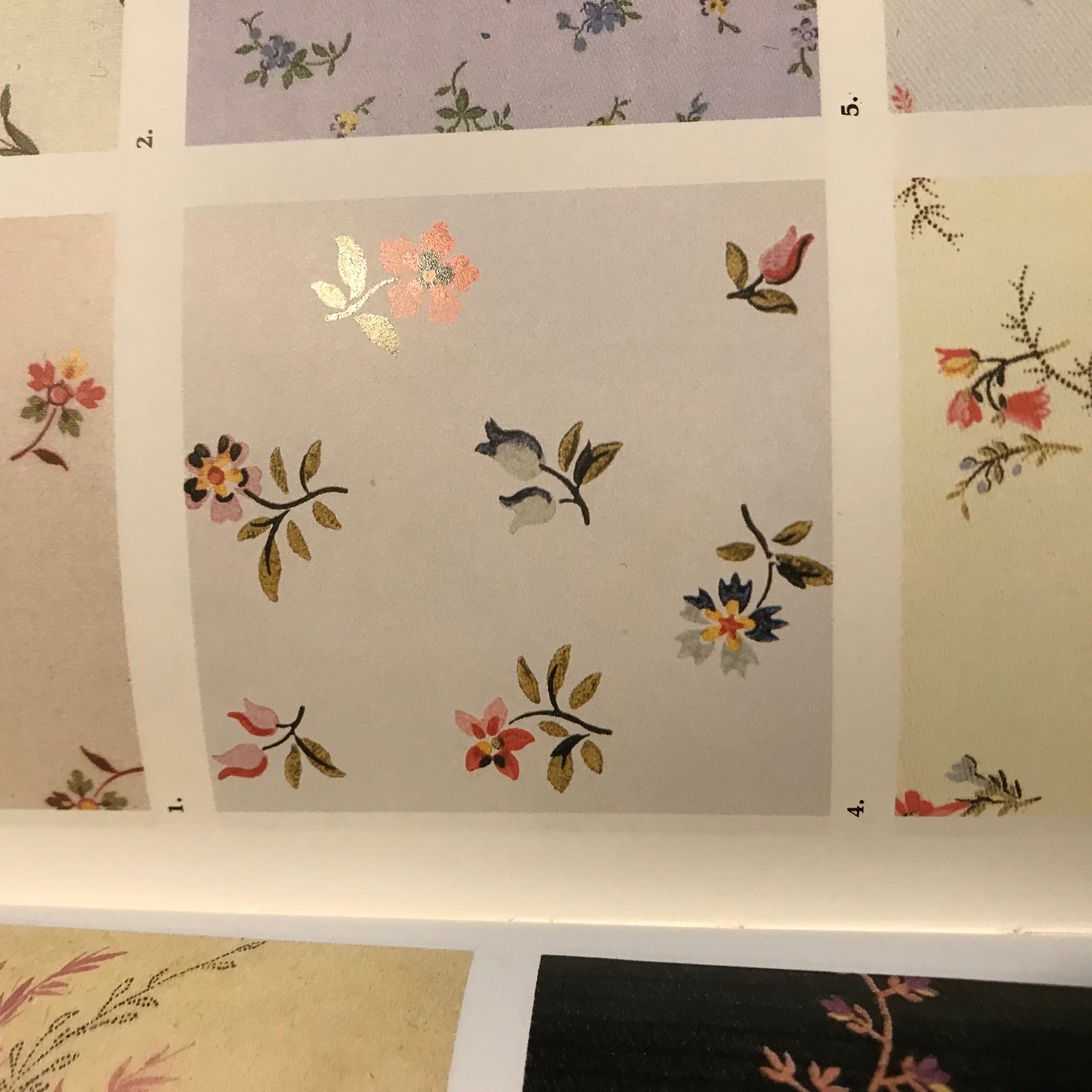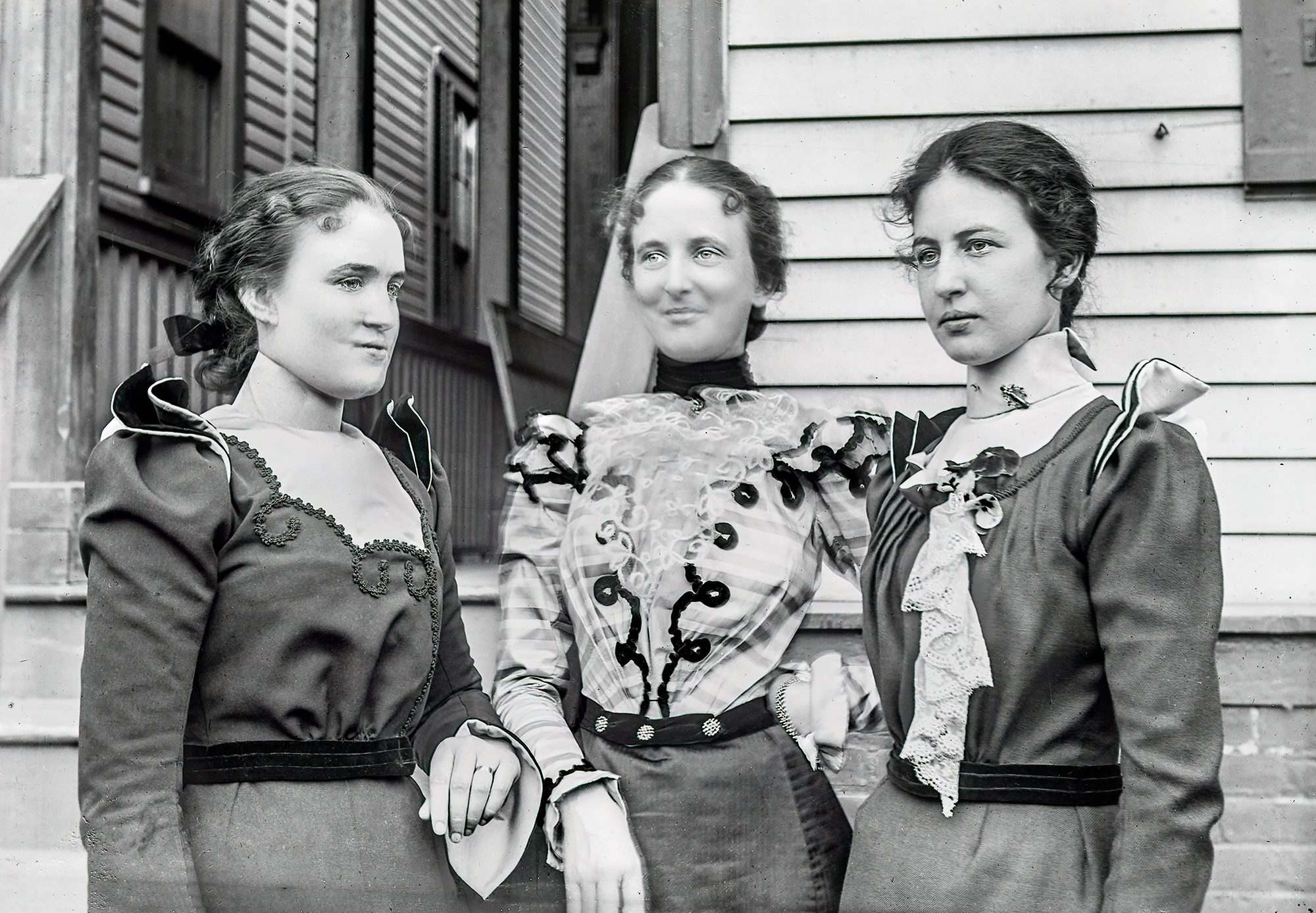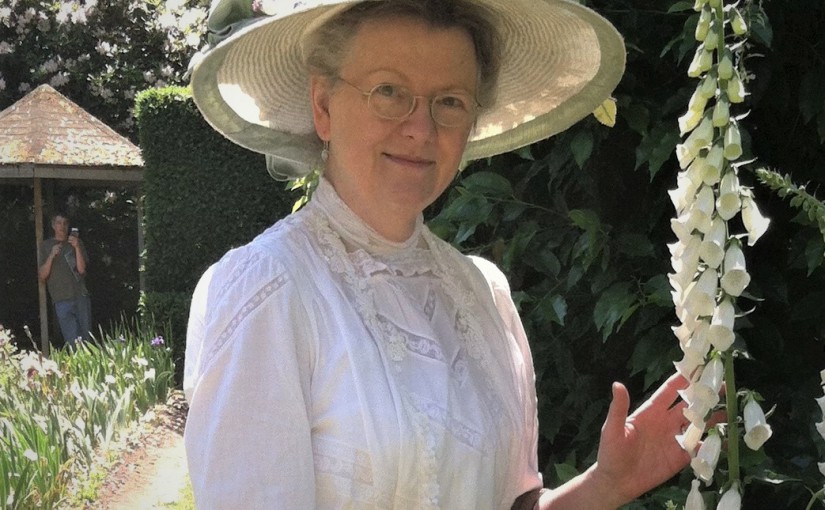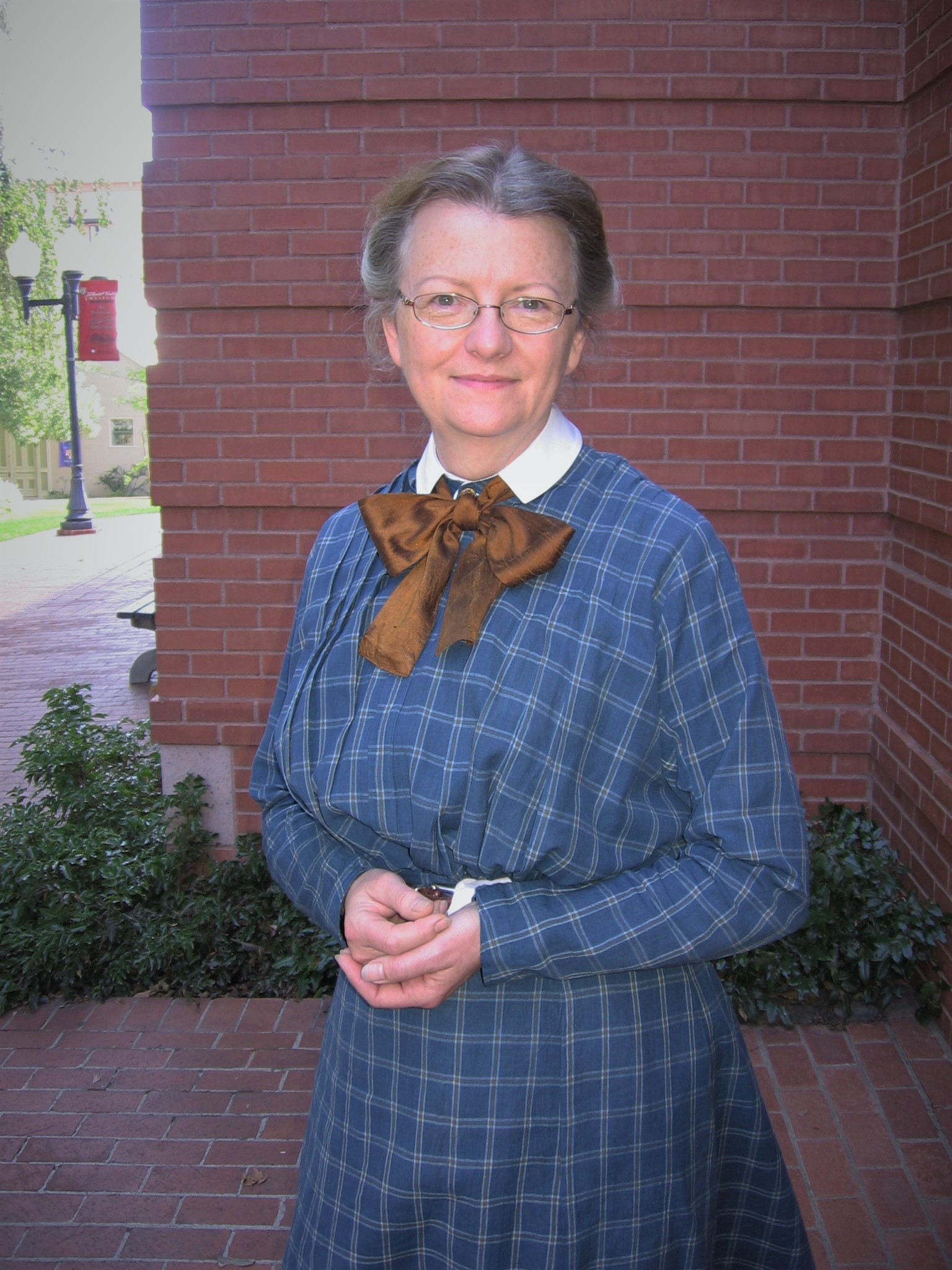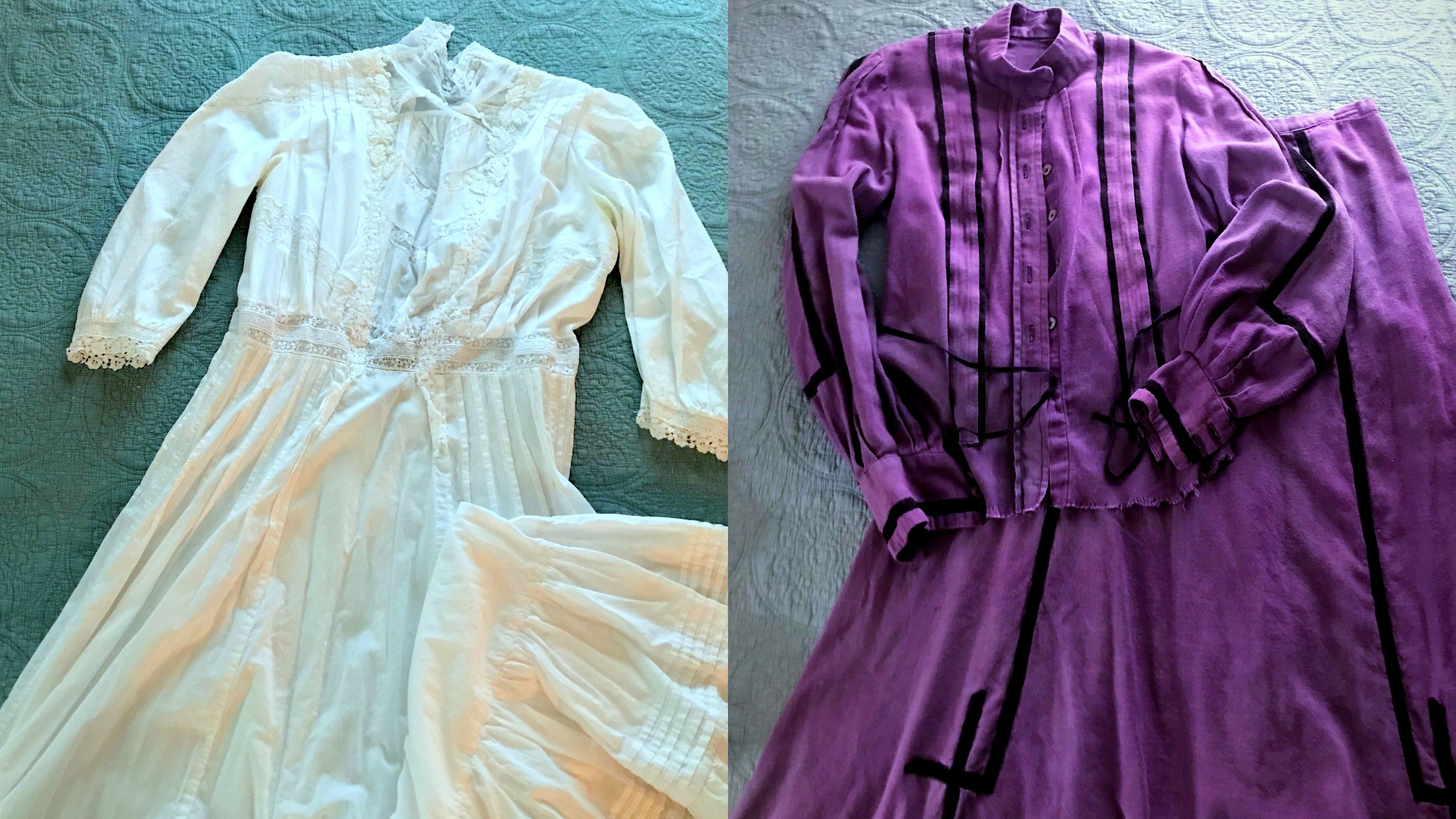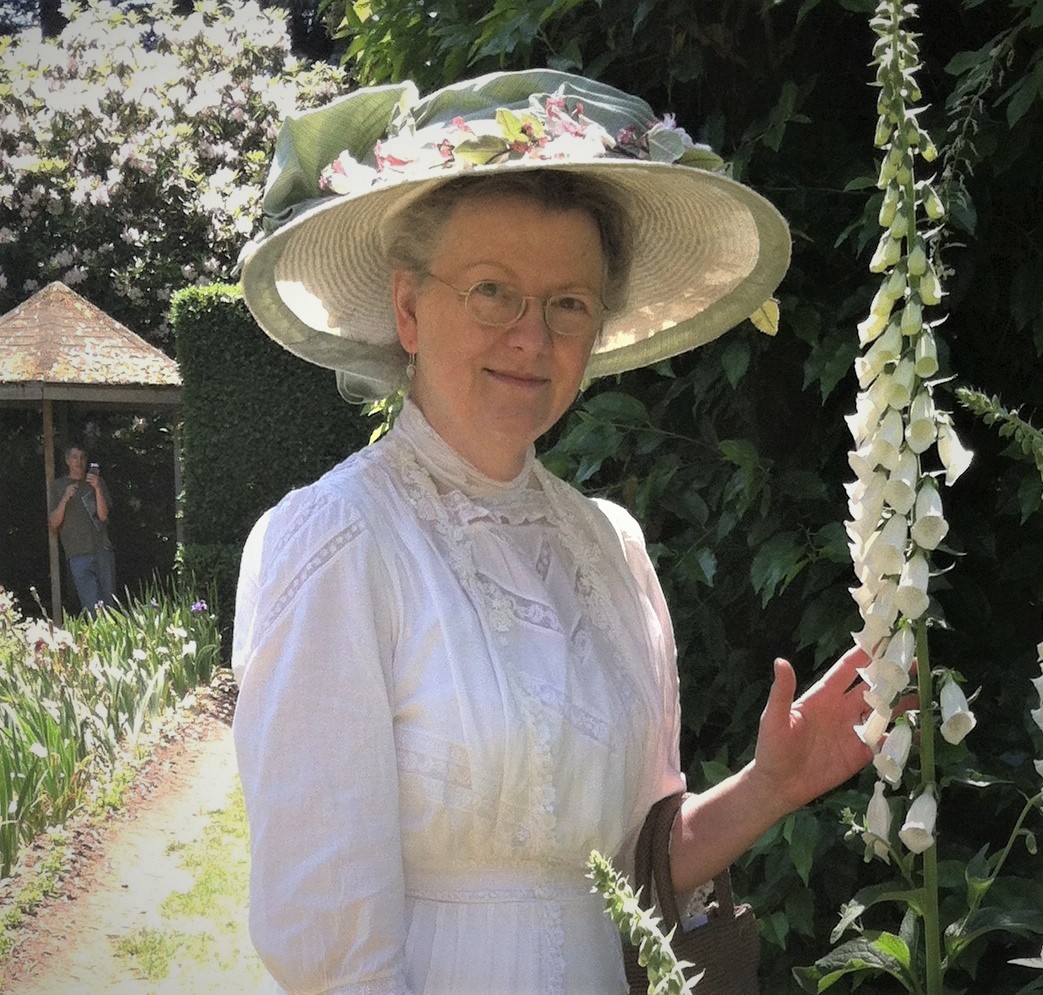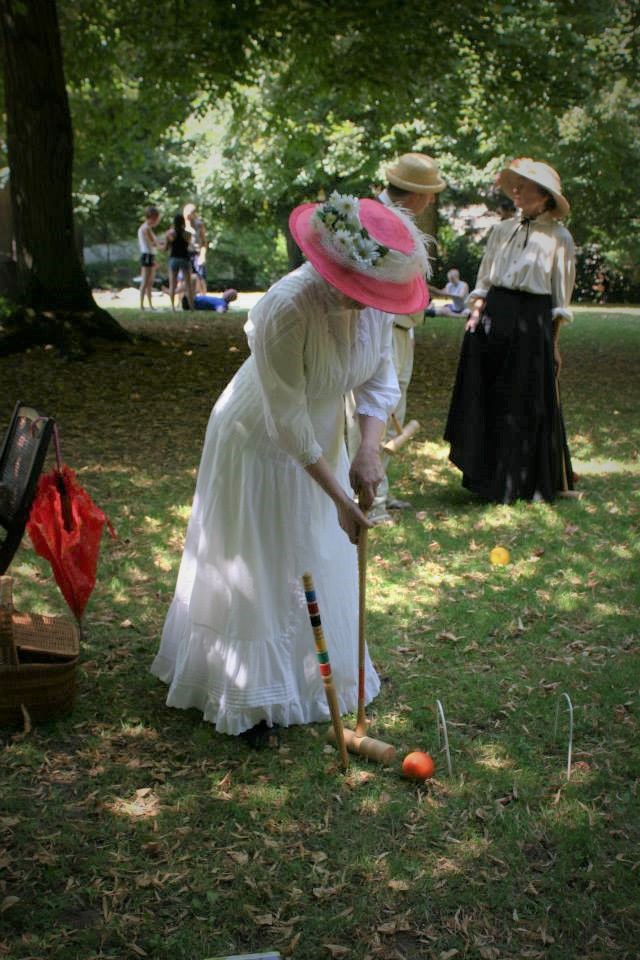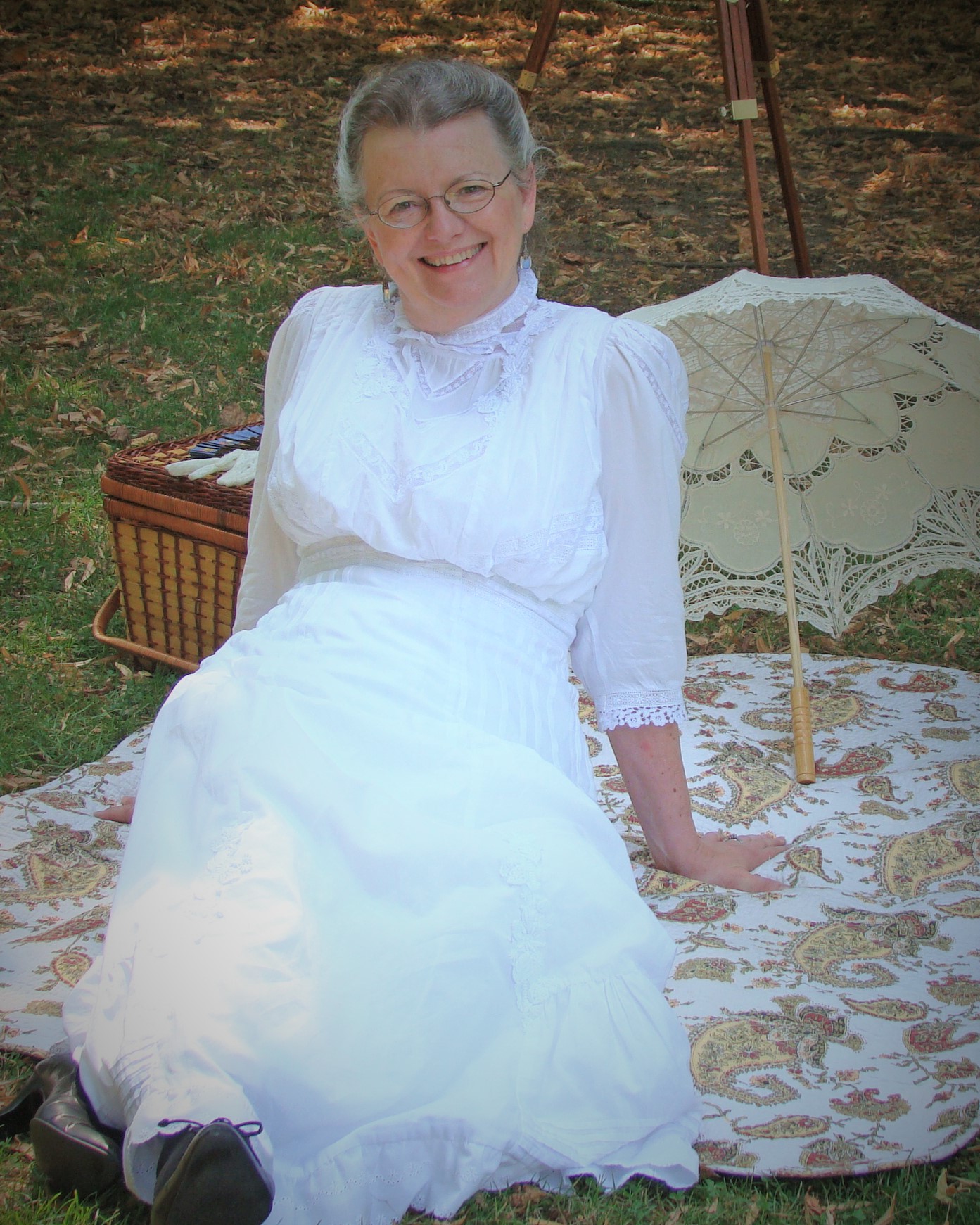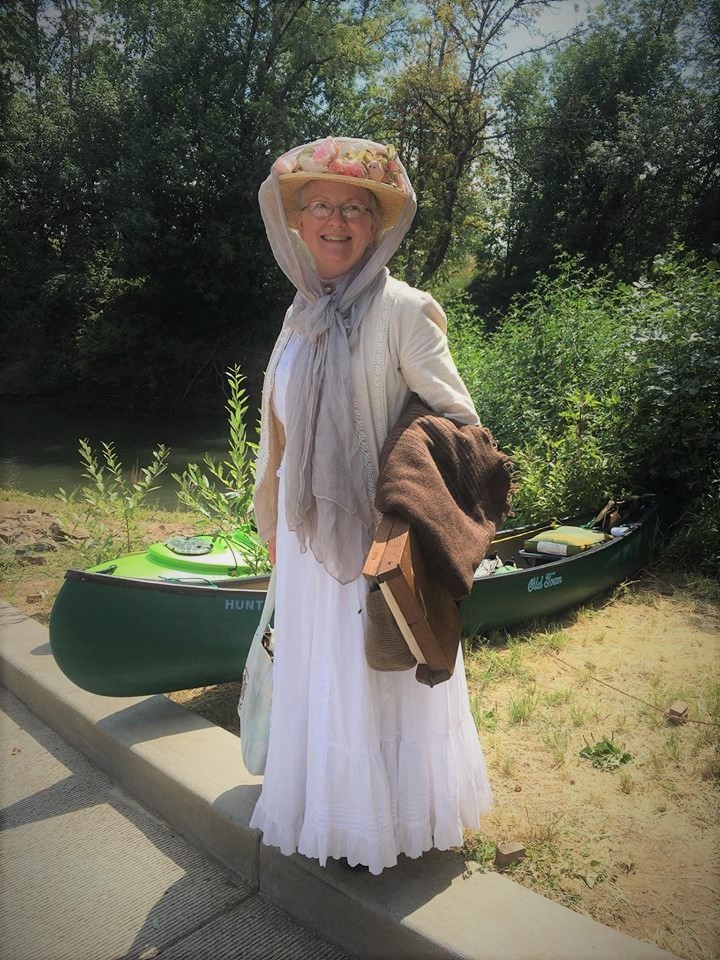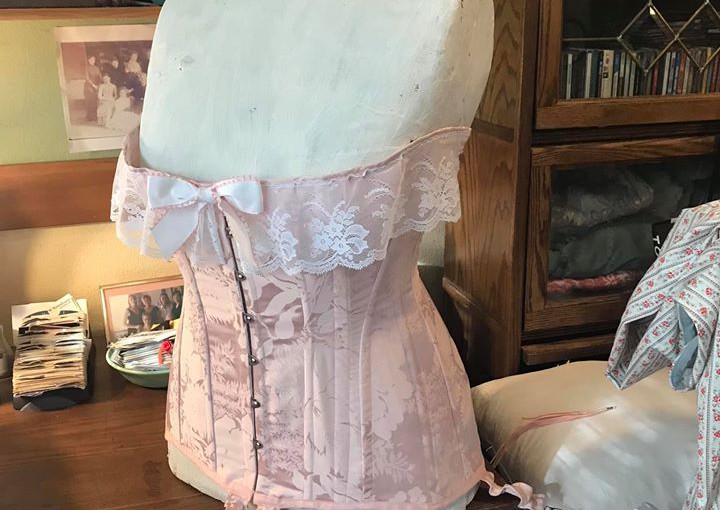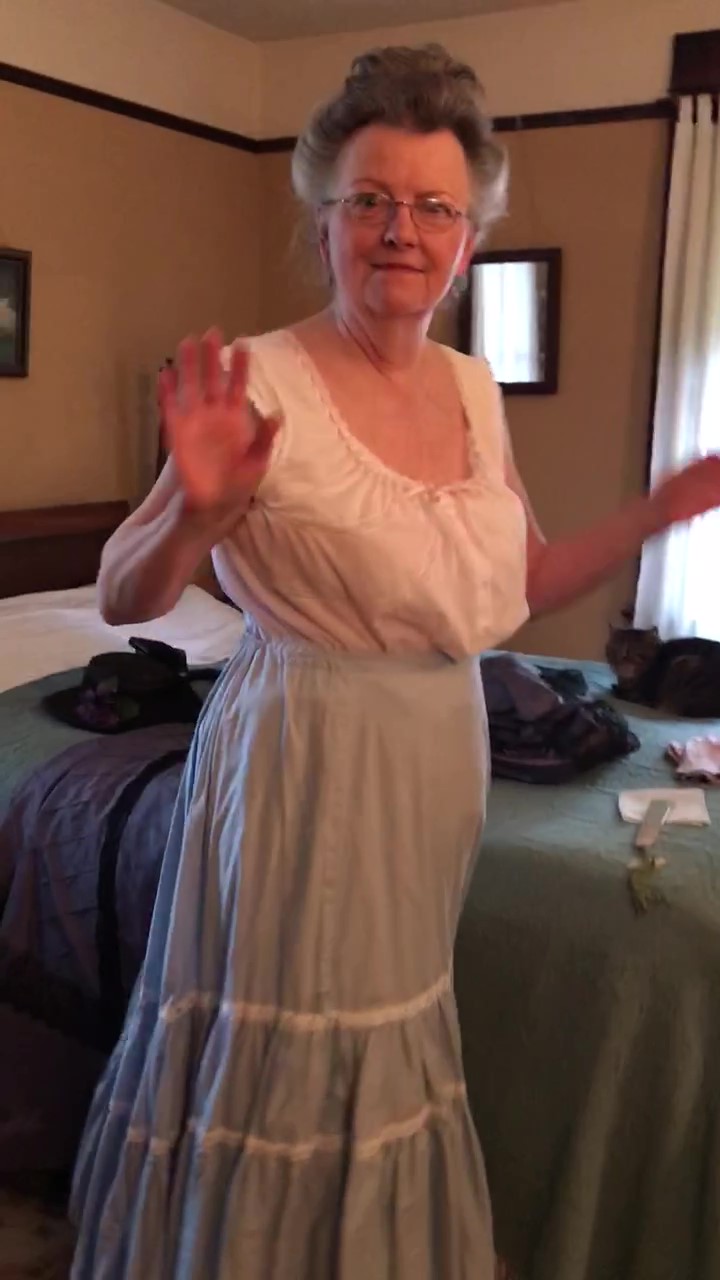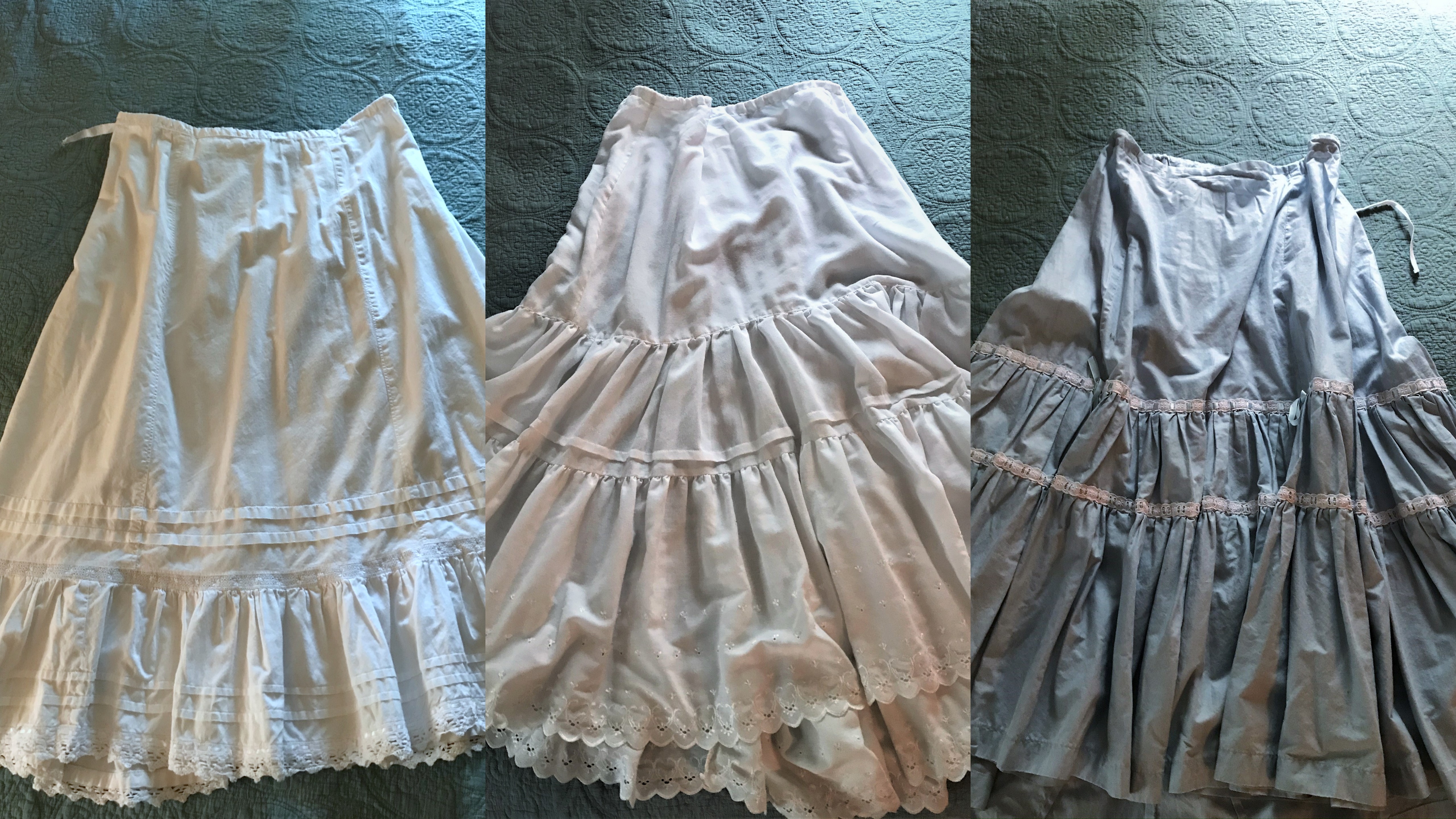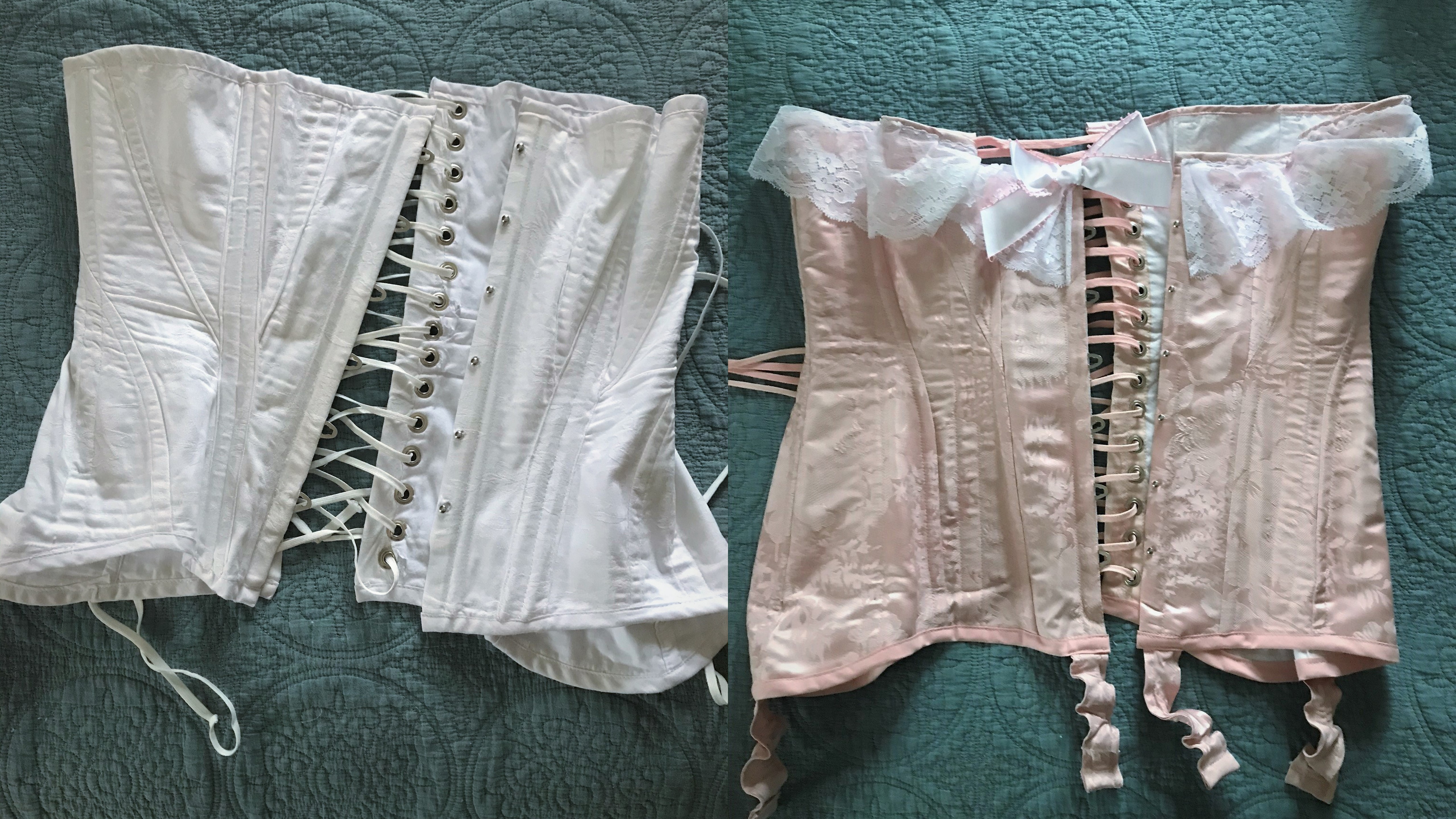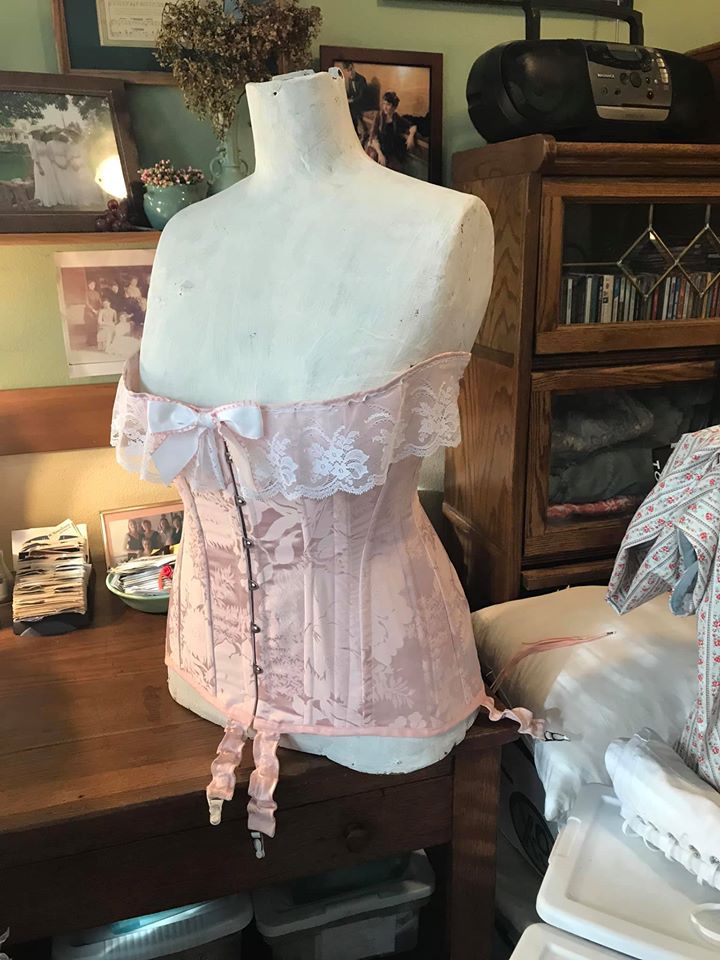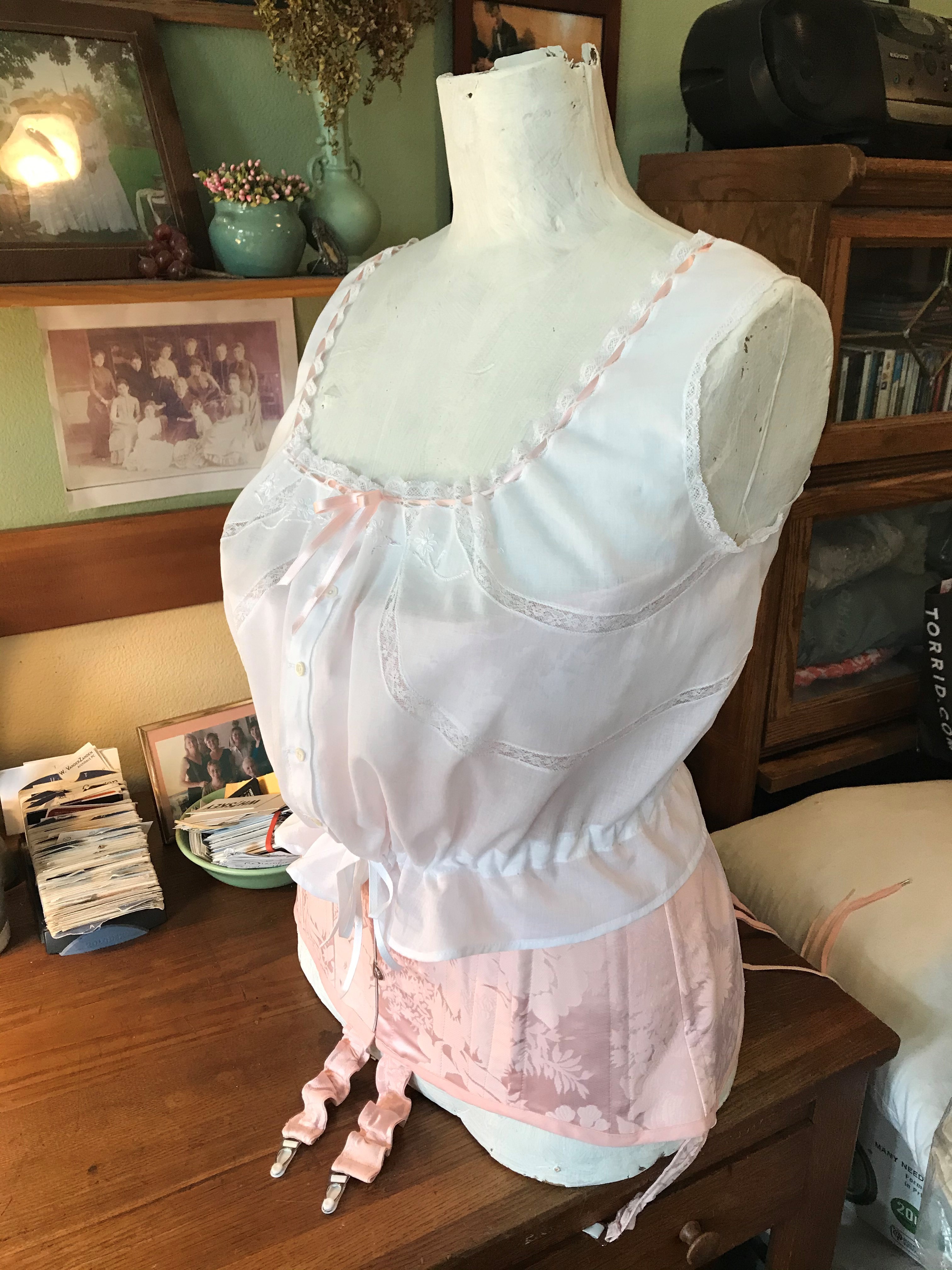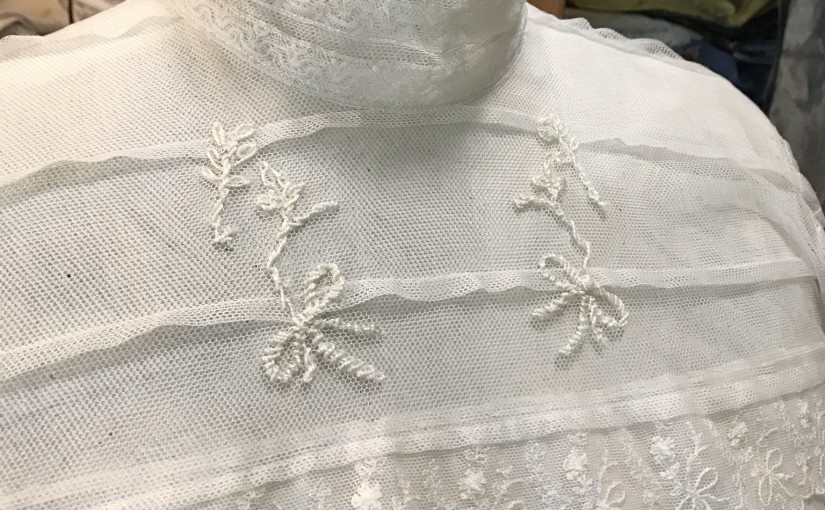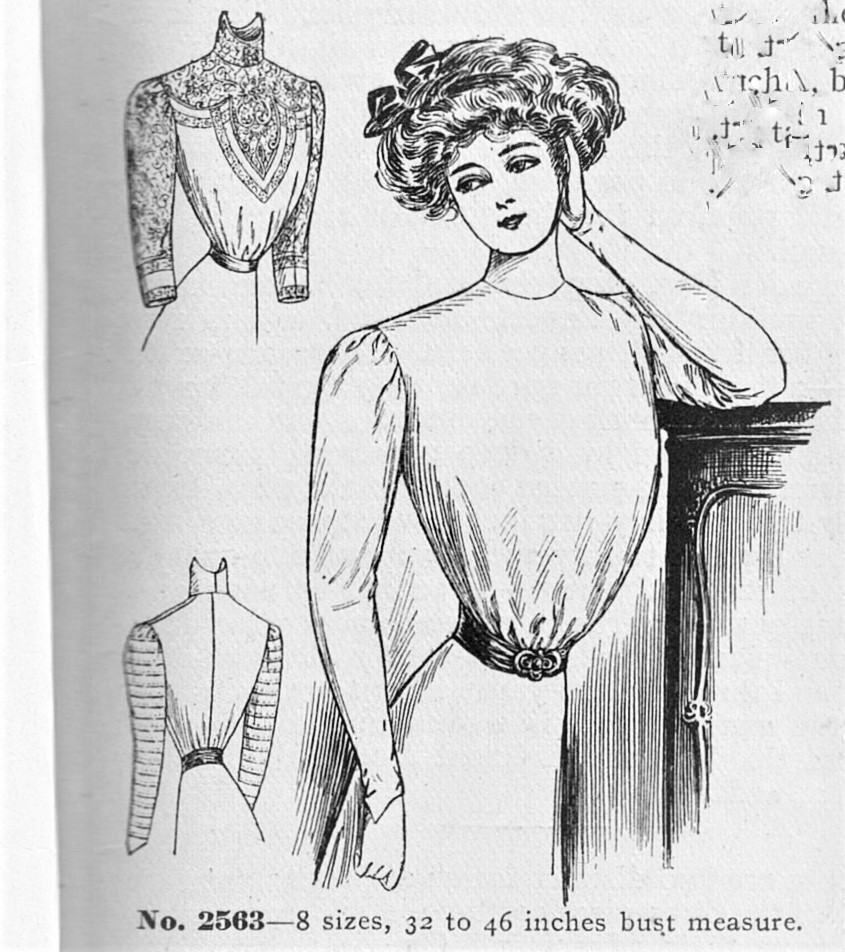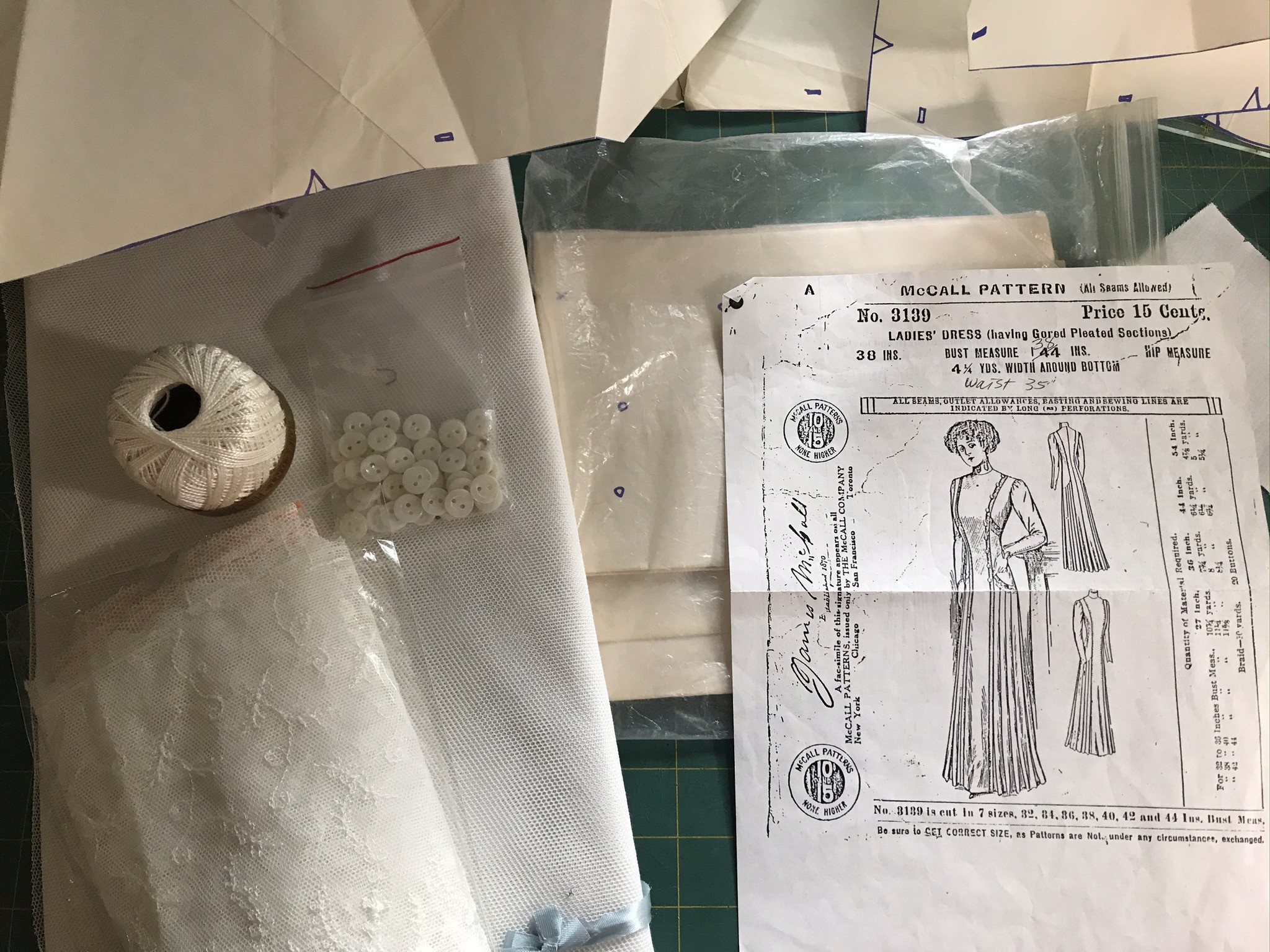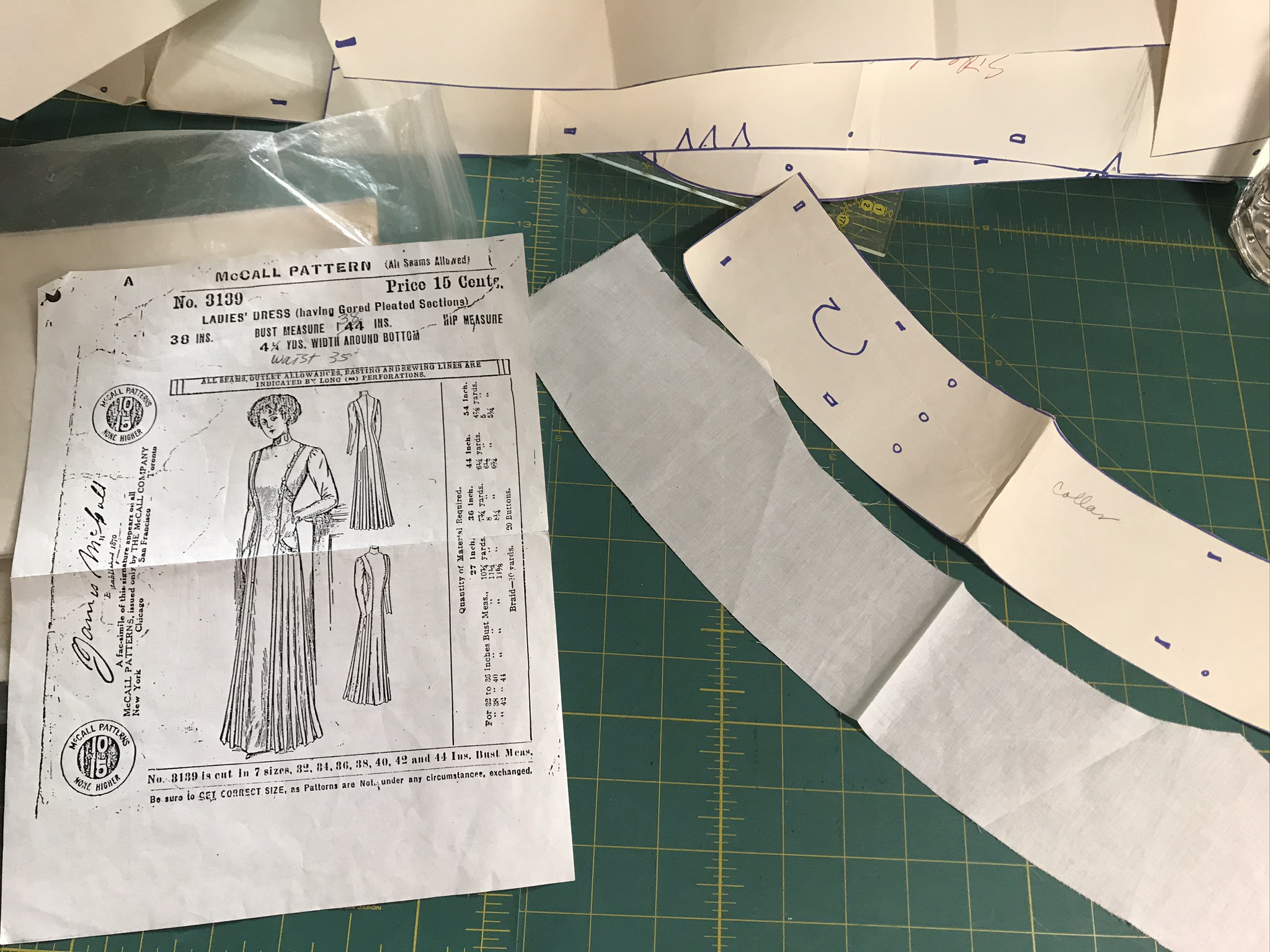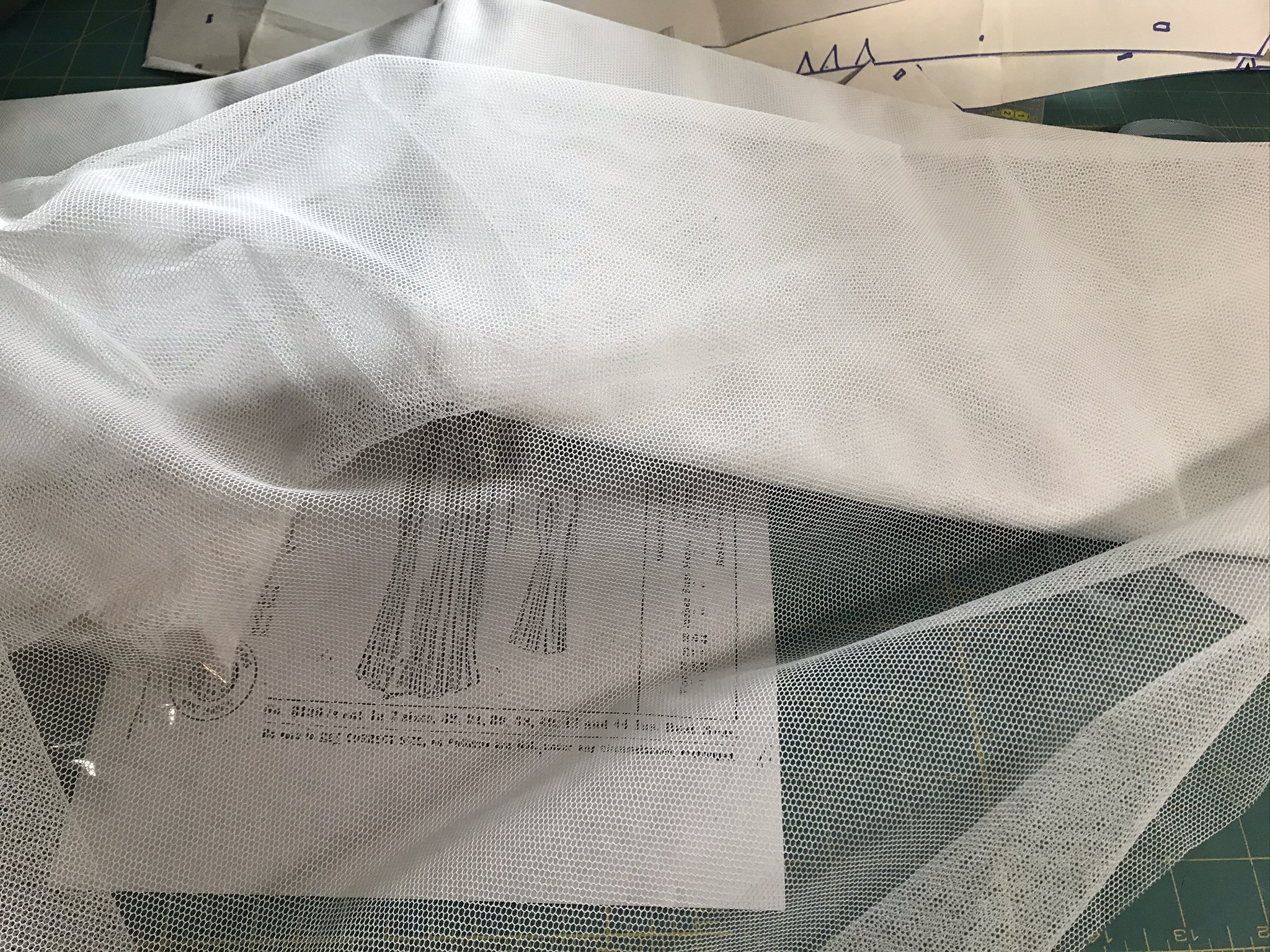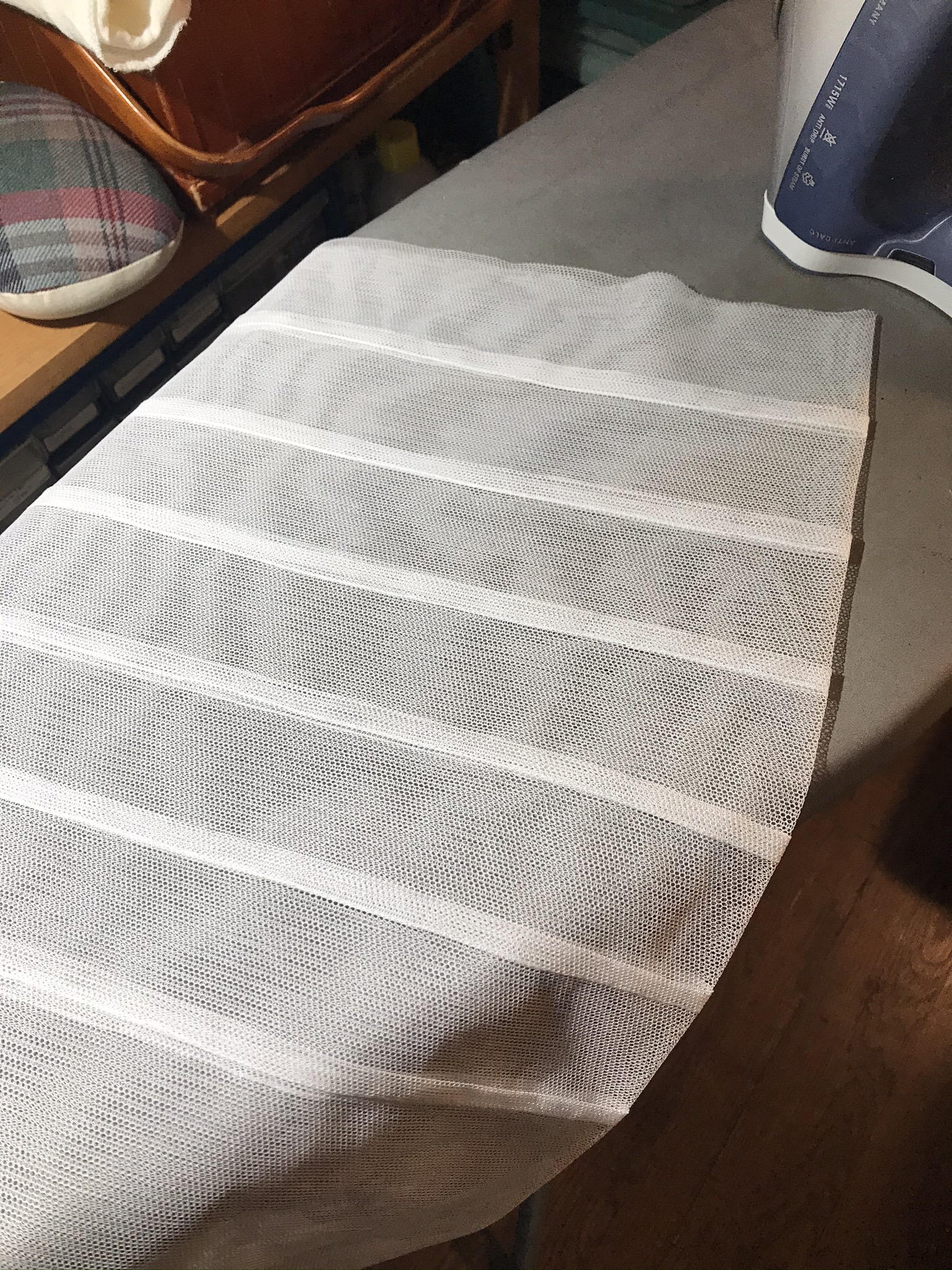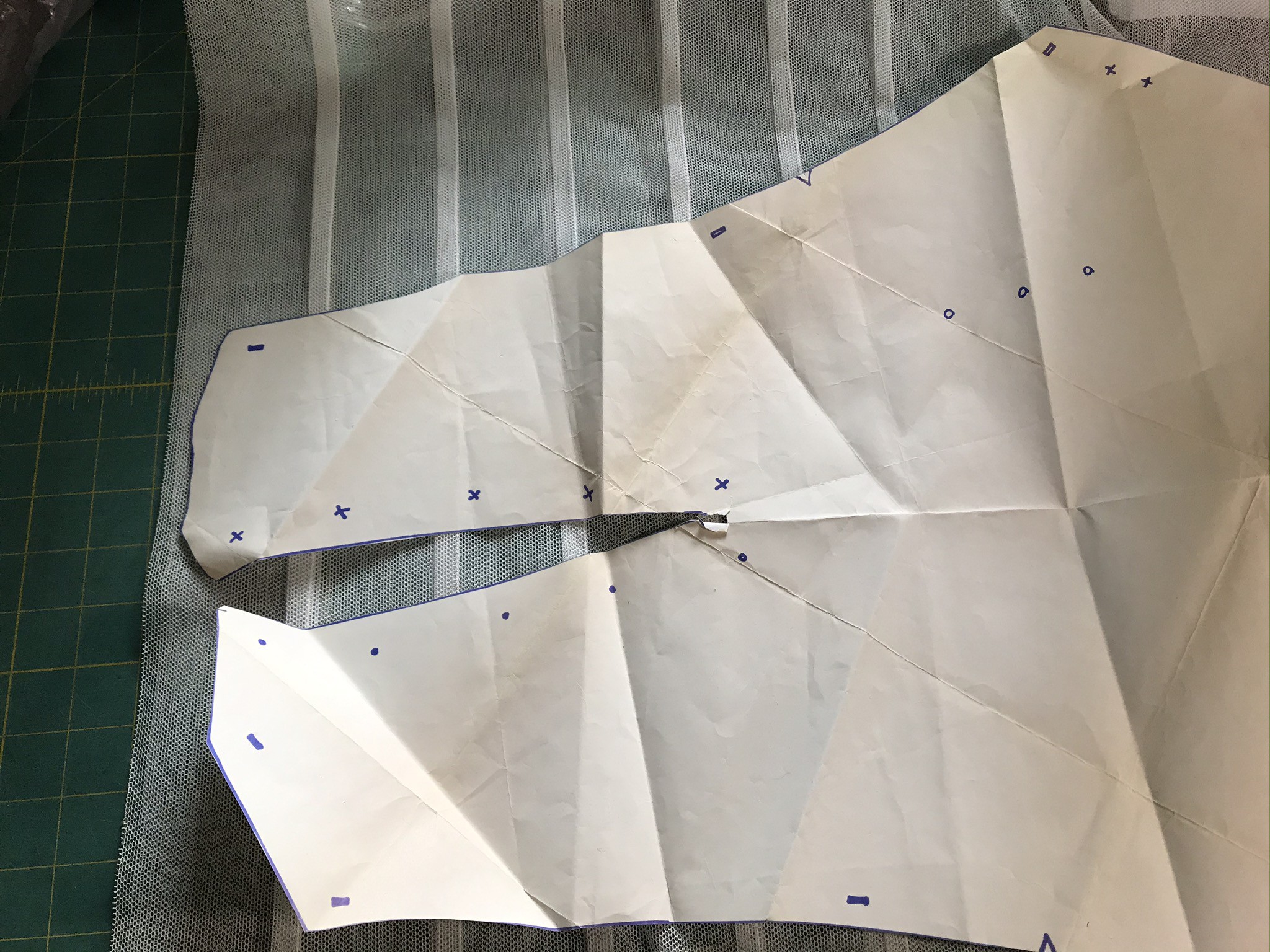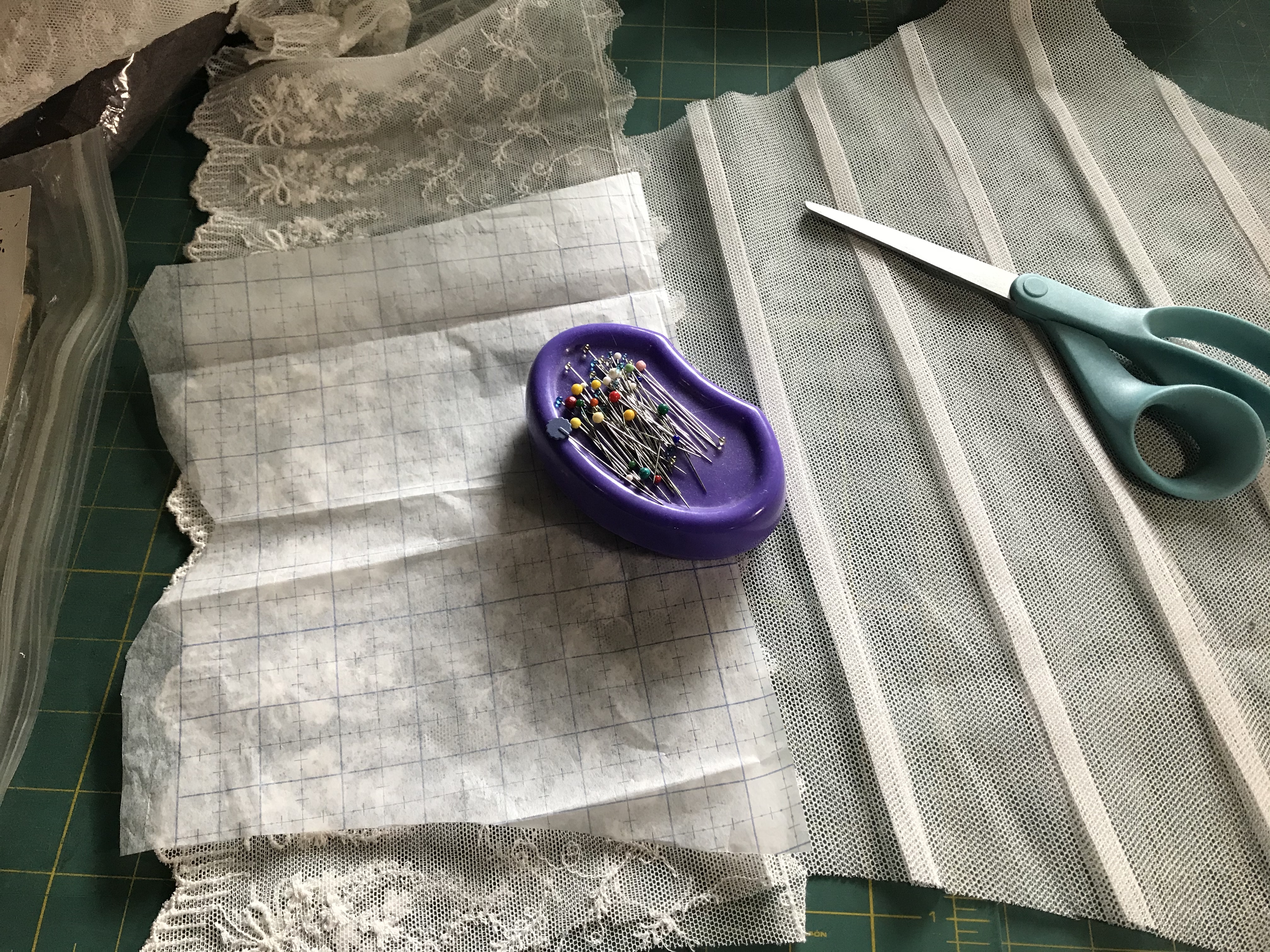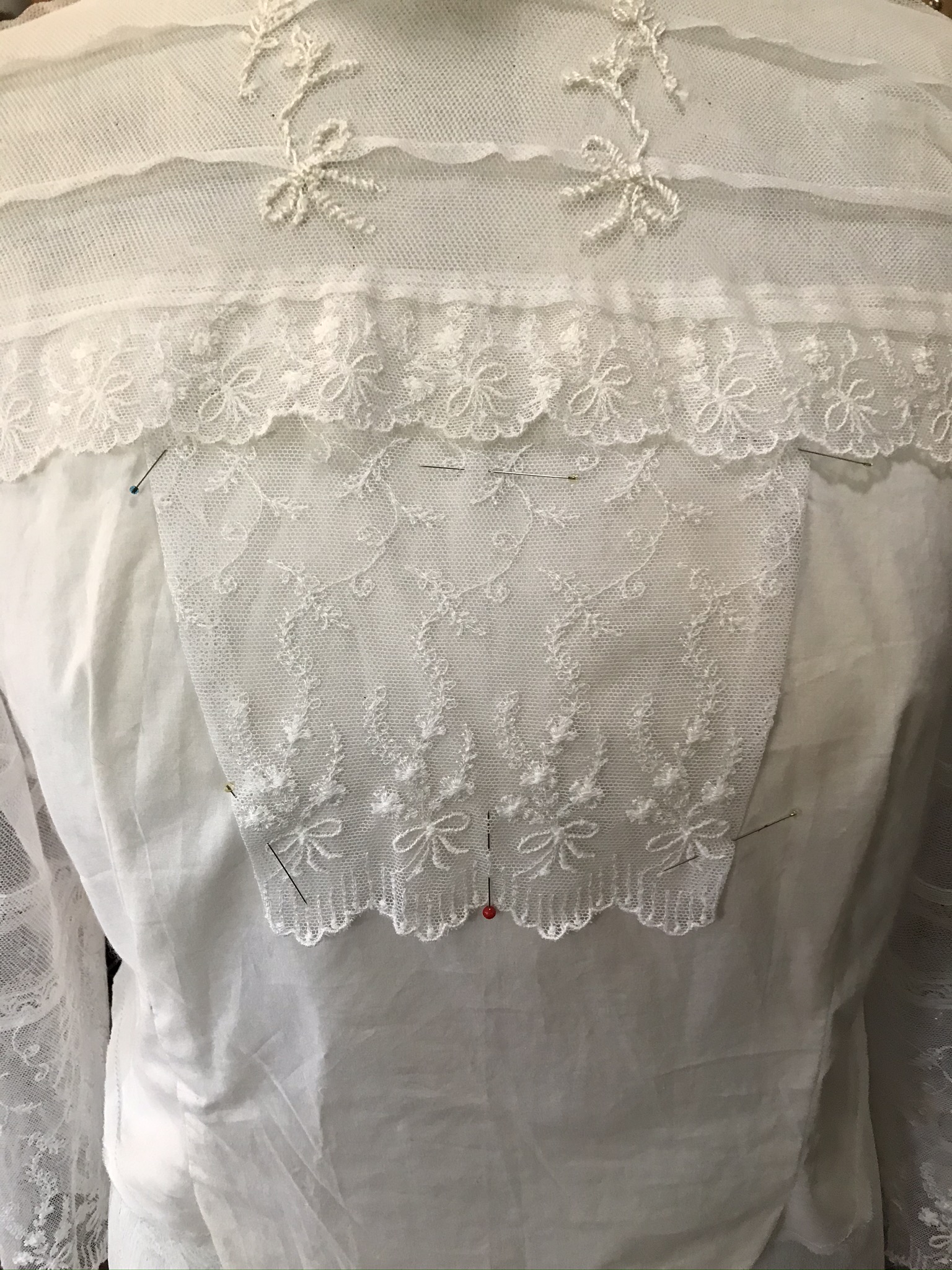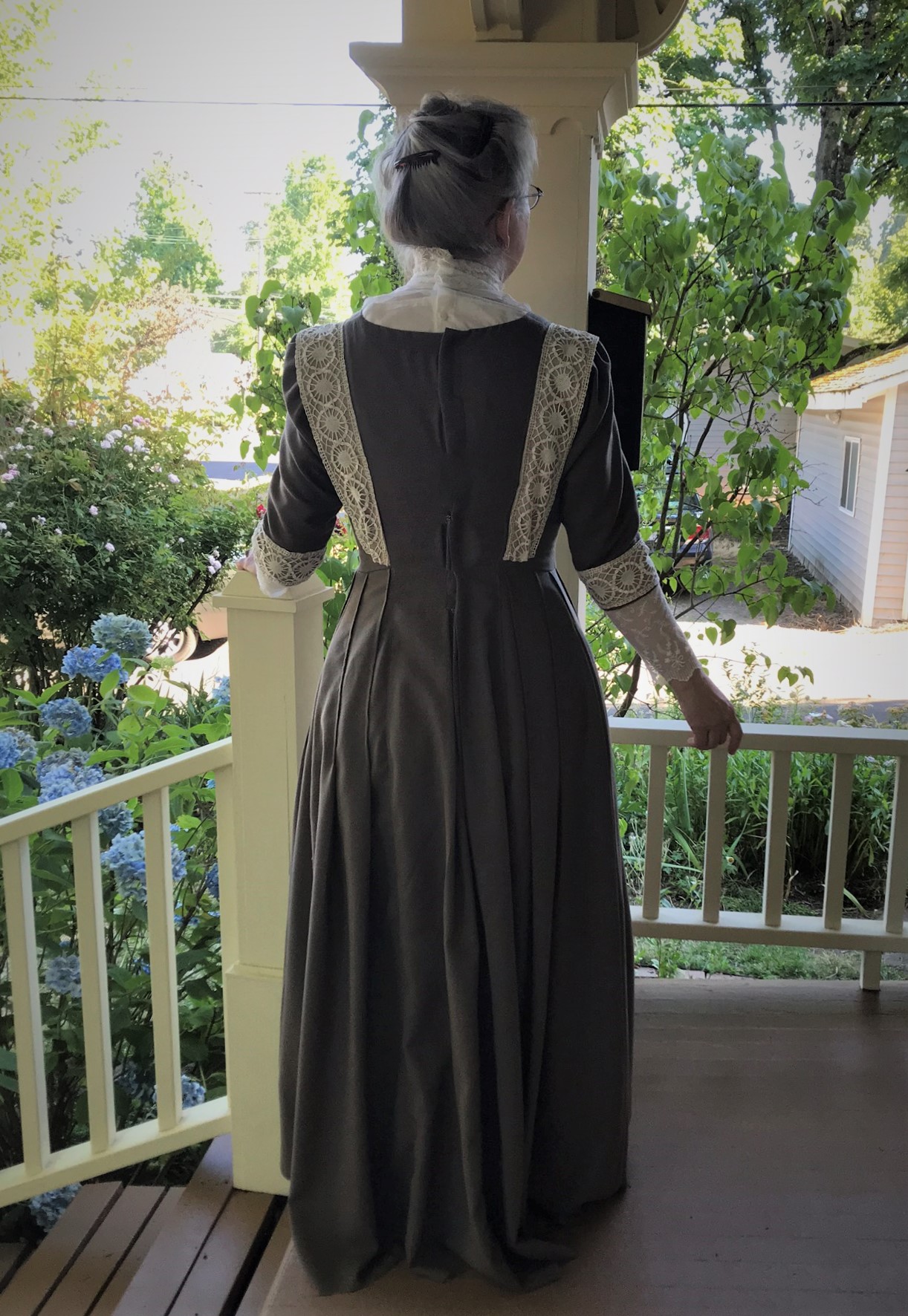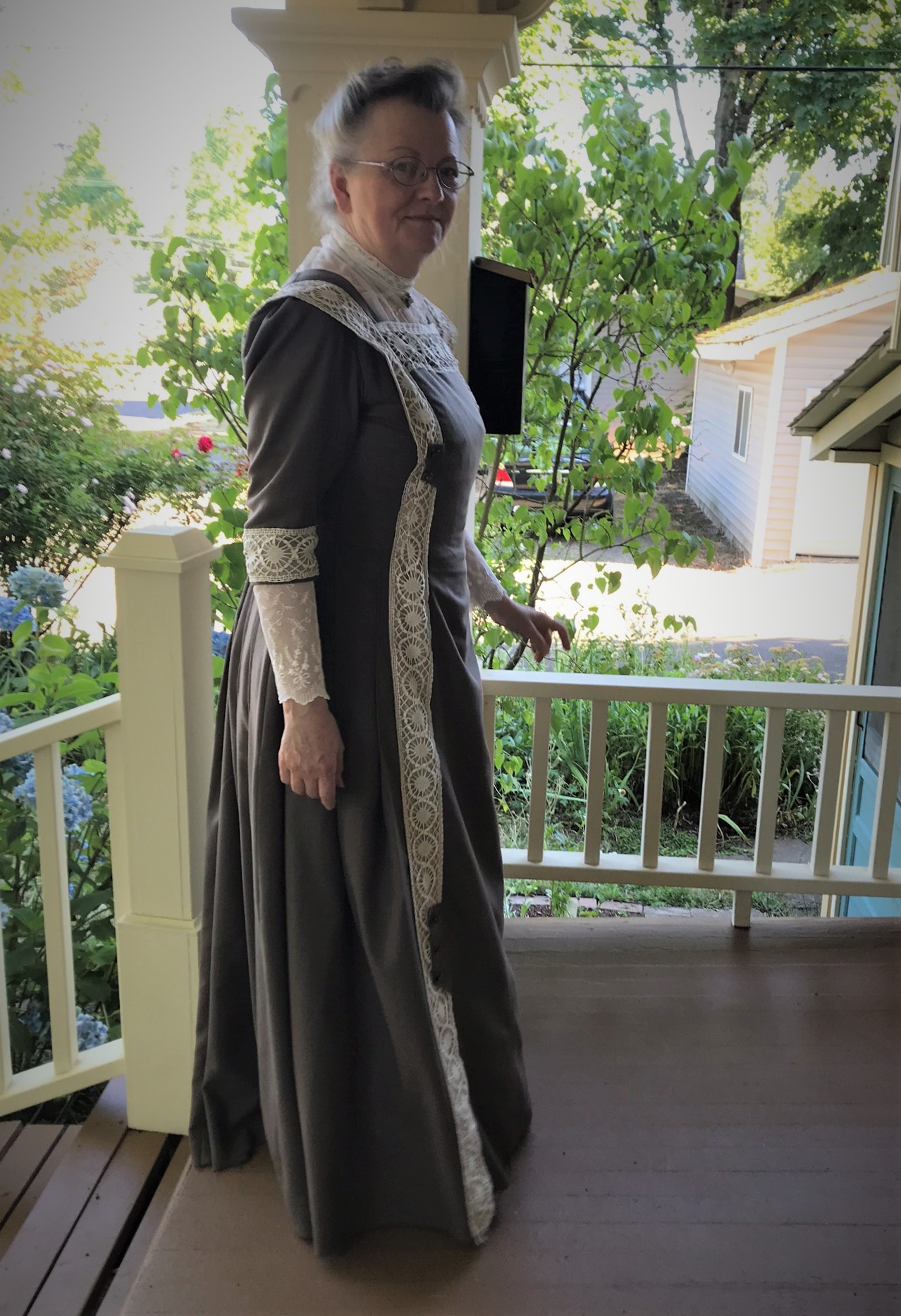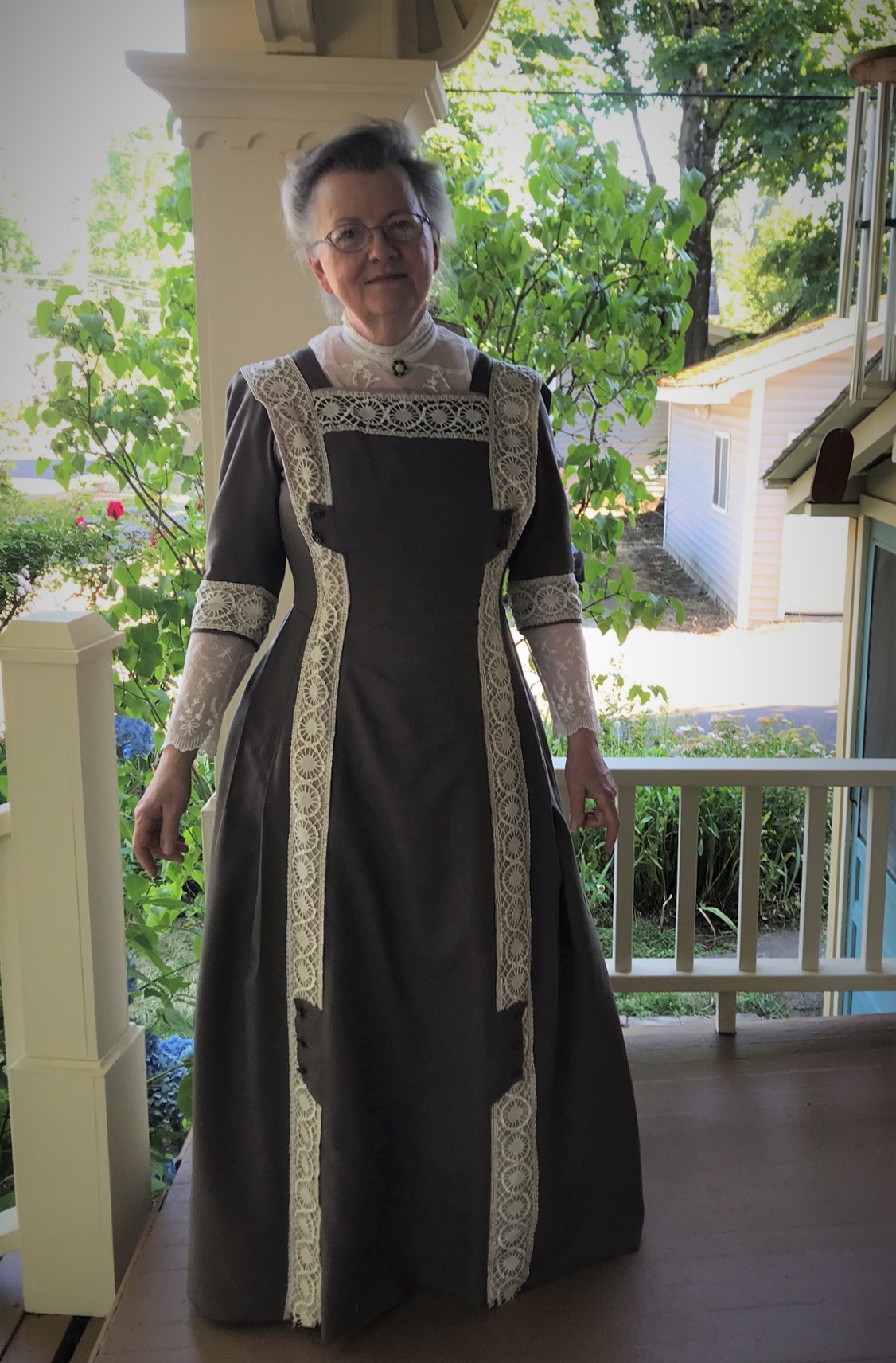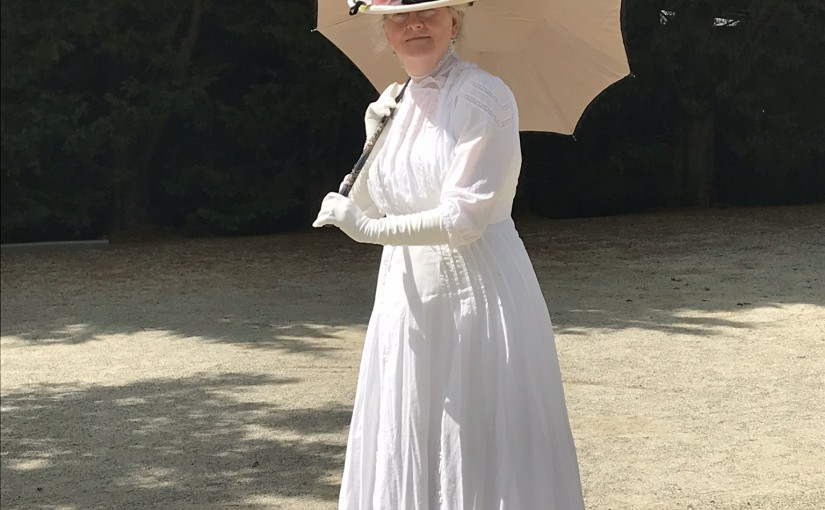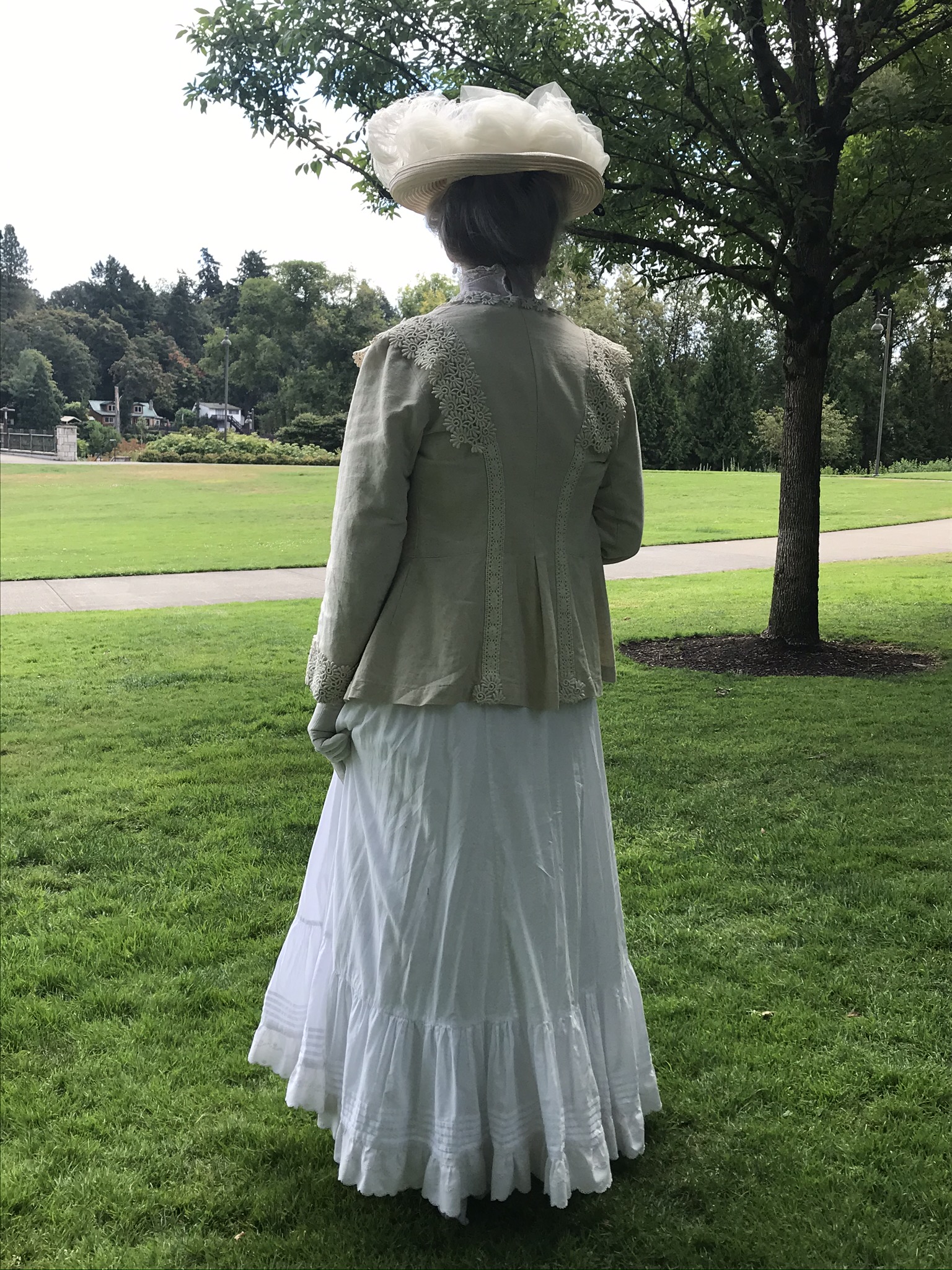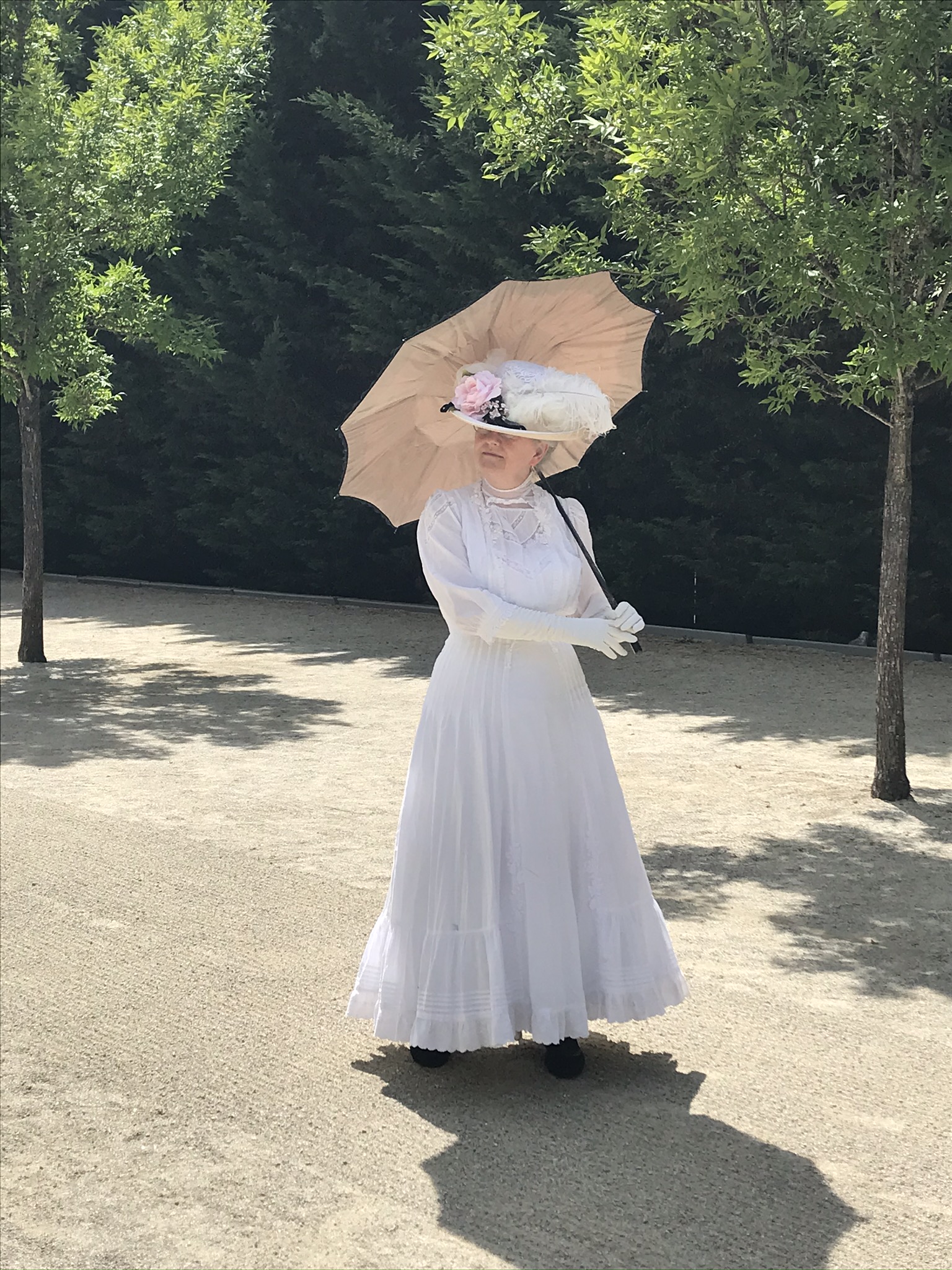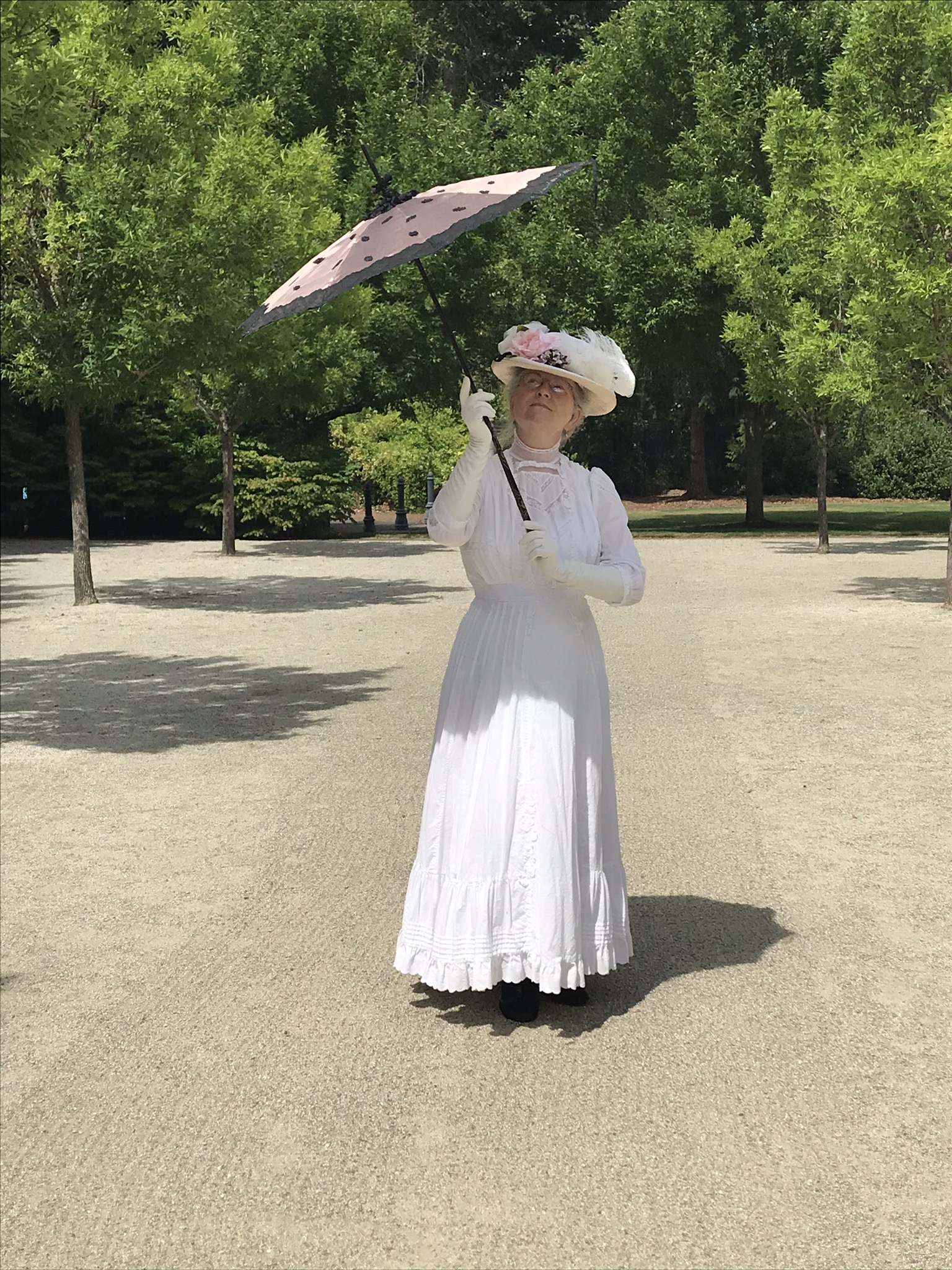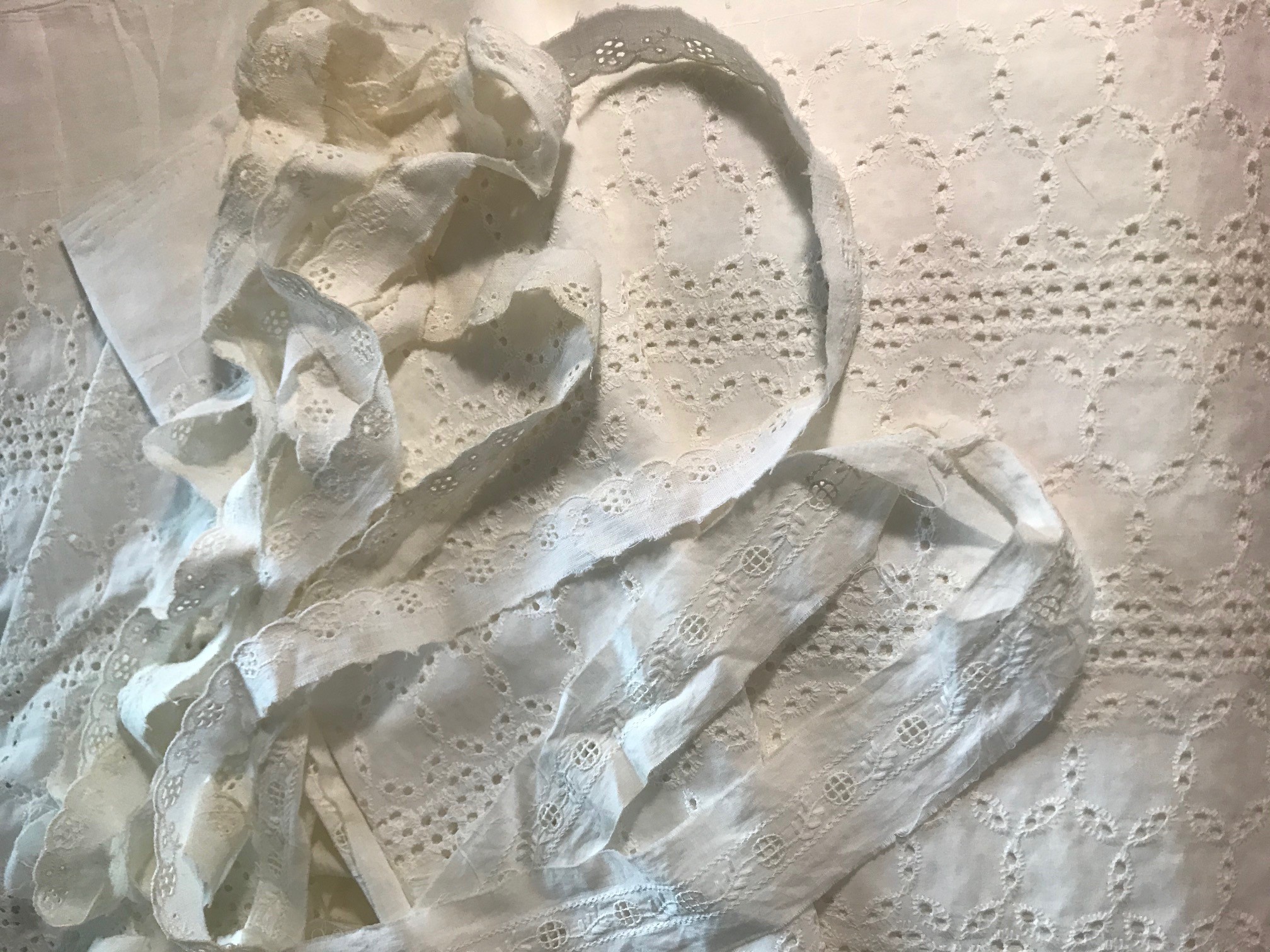Our fictional character, Mrs. Maggie Lynde of Hillsboro, Oregon, wanted a new summer gown before Saturday. She planned to dress in style to meet her friends for shopping and ice cream.
Since I am Maggie Lynde’s alter ego, and I live in the 21st century, not 1909, I have a few more choices than she did. I have a machine powered by steady, reliable electricity instead of the treadle machine that Maggie would have used. I put my serger to work, finishing seams, where Maggie might have hand whipped them or else left them raw. And finally, I have a husband who tolerates my tendency to spend an entire Friday in my studio, where Maggie would have been responsible for preparing all the meals, doing all the dishes, and otherwise keeping house, in addition to her impromptu dressmaking project. It might have taken her all week to compete the summer dress, while I was able to start on Thursday night and wear it on Saturday morning!
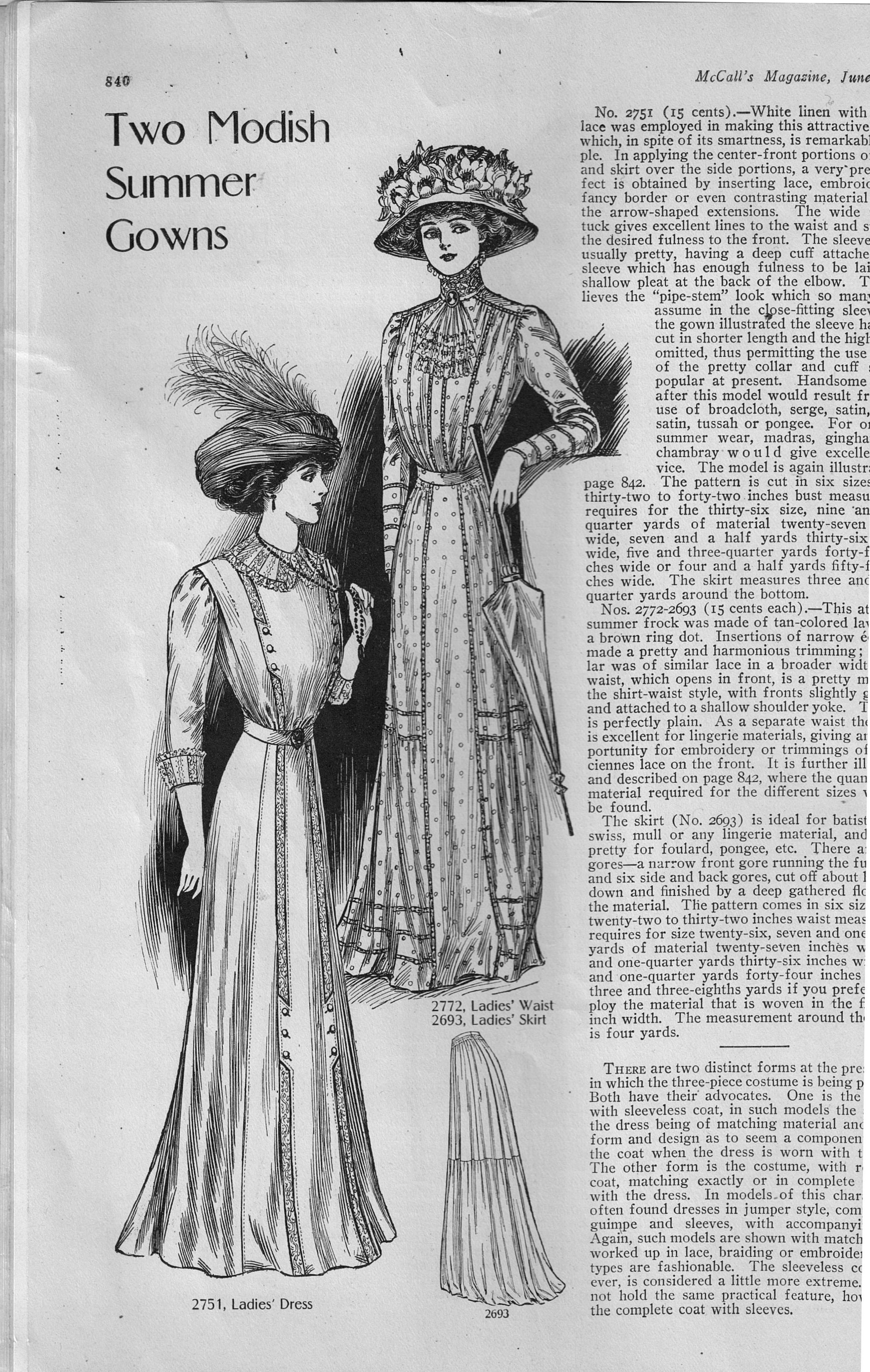
Patterning the Skirt
The McCall’s skirt was a seven-gore model, which would provide a smooth, graceful fit in the printed lawn. But my fabric is an embroidered eyelet, which has more texture, so all those fitted seams might not show to the same effect. Plus, I was in a hurry, and my fabric is very wide (over 50”, which was probably not available for Maggie Lynde.) At any rate, I made the decision to use five gores instead of seven. I have made so many five-gored skirts and petticoats over the years that I didn’t need to use a paper pattern. I did, however, get out my tape measure, some scratch paper, and a pencil! I wanted to be sure that my skirt would be long enough, and the body of the skirt full enough (but not unfashionably so!) to copy the silhouette of the original design.
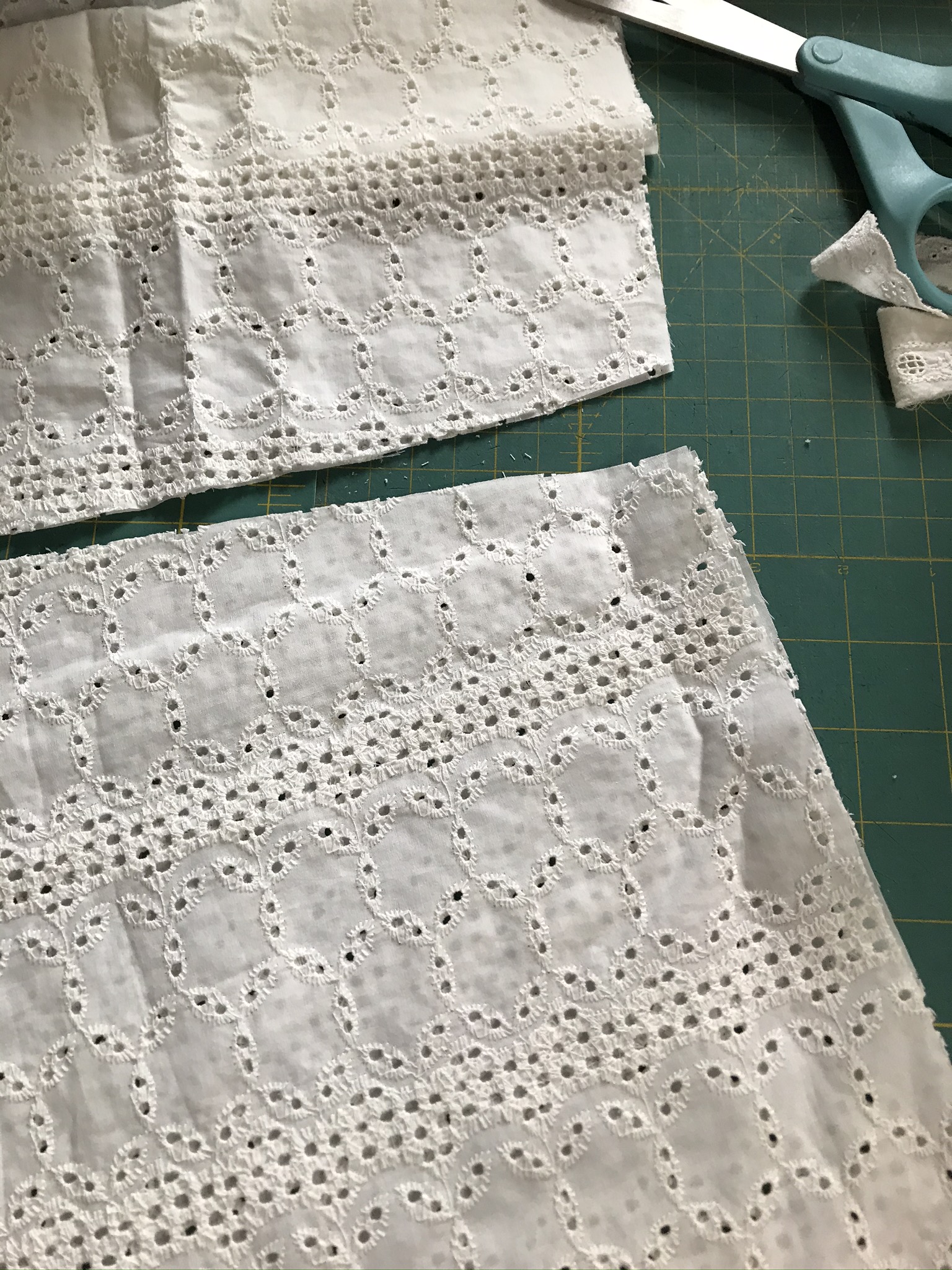
I had some coordinating (antique) insertion, but not enough to copy all the design details from McCall’s. I decided to use the insertion primarily on my vertical seams, and to allow the embroidered stripes from the fabric to serve as the remaining bands. The detail on the insertion is ½”, and there was a generous seam allowance, so I reduced my seam allowance on those skirt sections by ¼” on each panel.
Patterning the Bodice
In 1909, McCall’s sold bodice and skirt patterns separately. The bodice was advertised as being suitable for a waist or the bodice of this dress, and the description didn’t mention a lining. This made me confident in choosing a waist pattern for this bodice. The closest commercial pattern I had on hand was the elegant Past Patterns number 406. The PP design called for more tucks than I needed, and it didn’t allow for the decorative vertical seams. That was easily remedied when I folded those tucks out of the paper pattern before cutting and created the central section of horizontal bands.
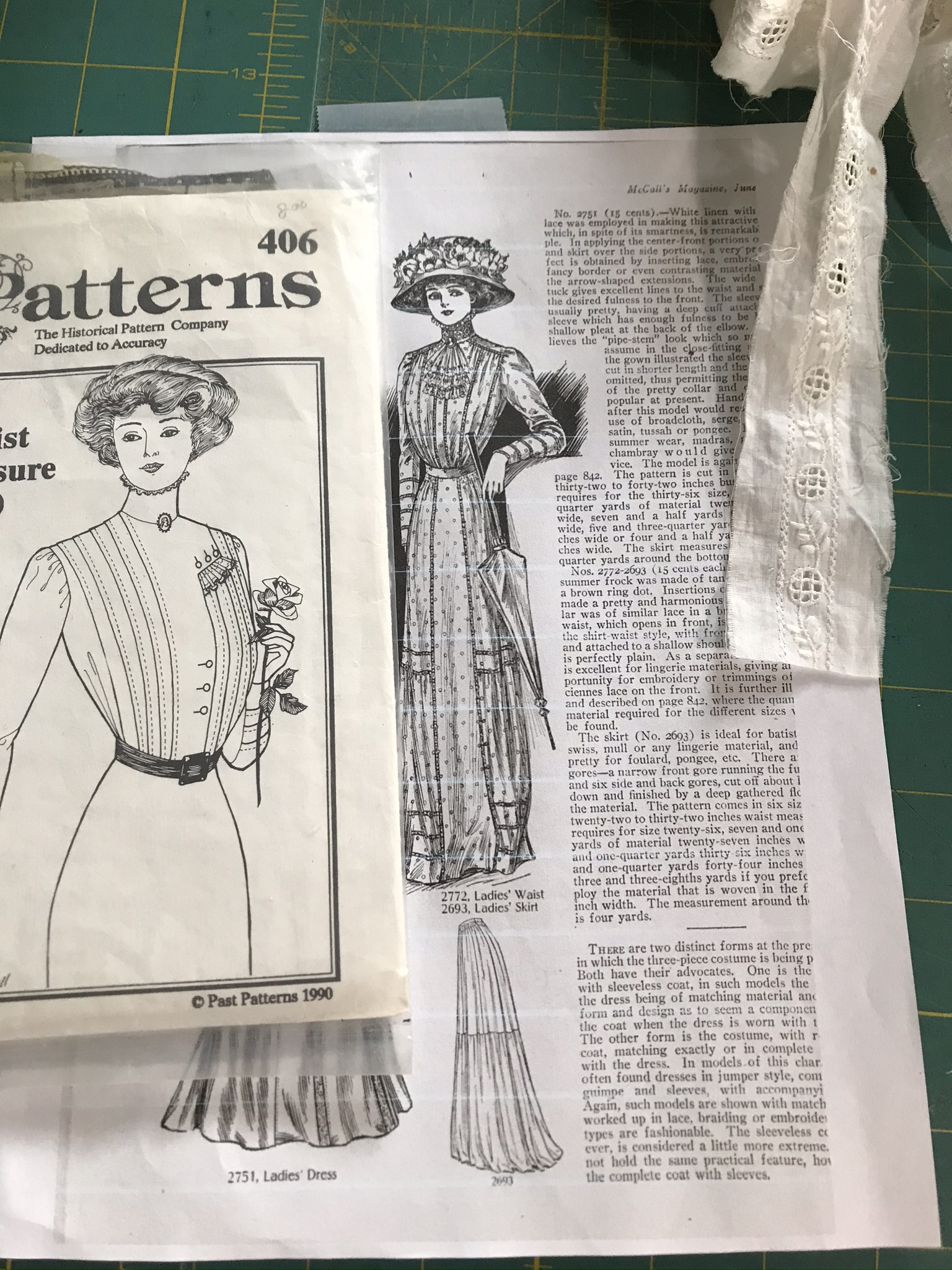

I took my time in laying out this pattern! I double checked my measurements and seam allowances before cutting. In fact, for several areas I used my marking pen to be sure of my center points. I shortened the height at the shoulder seam because I was copying the yoke detail from the original design.
At the center front line, I did quite a bit of measuring and double-checking, to be sure that I would have enough fabric to turn under. I decided to create a buttonhole placket so I would have a smooth line at the center front; I cut that piece from the edge of my fashion fabric, where there was no embroidery.
Once I had my main bodice pieces cut, but before I removed the paper pattern pieces, I made sure to mark the tucks and the center front seam.
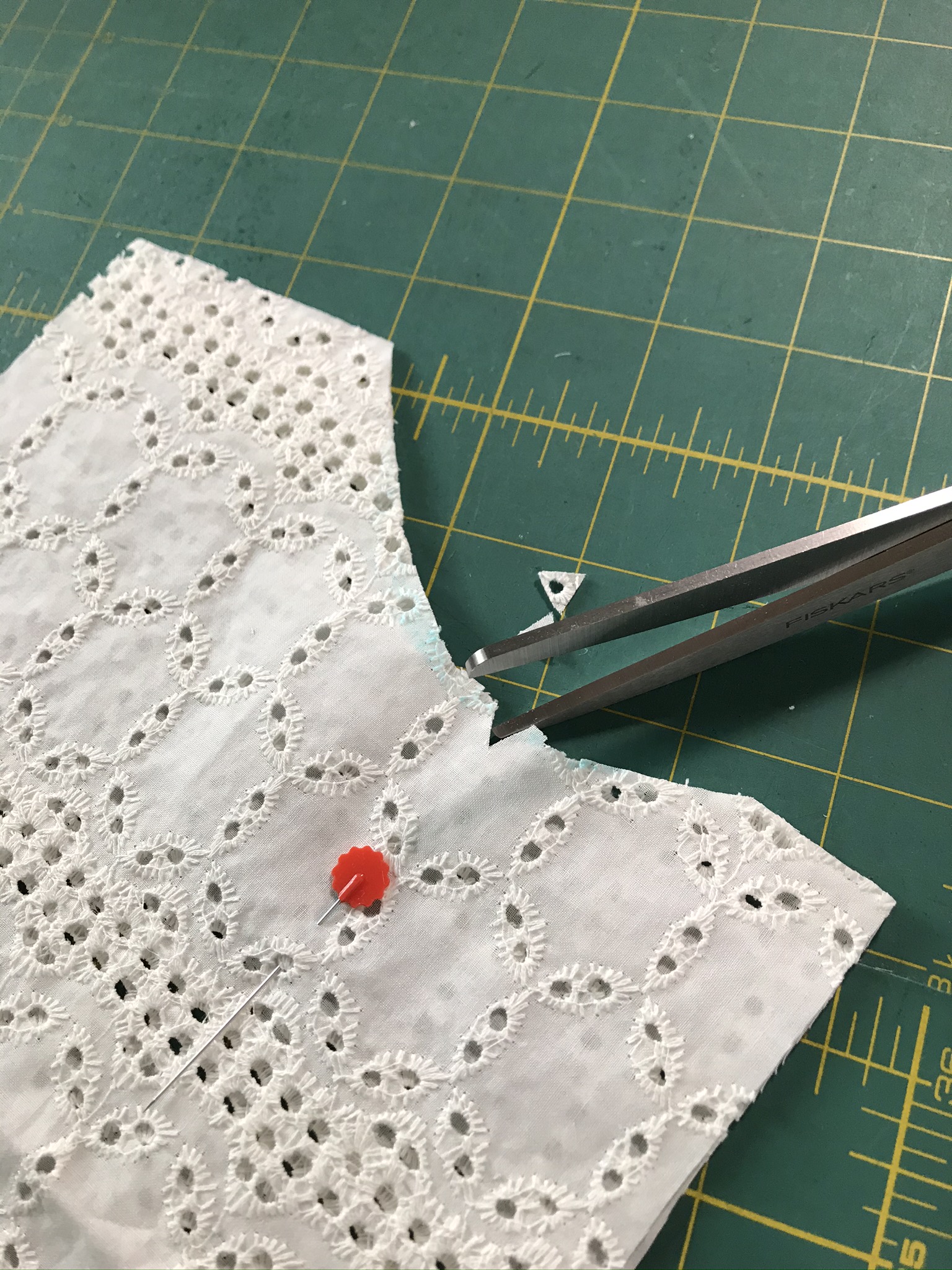
I had cut out the entire gown in one evening. I folded everything carefully and set it aside for the next day. I was ready to sew!
Making the dress
The first step on a gown like this is the fussy little details. I needed to sew the tucks in place before I could attach the sections. Here’s a picture of how I prepared the back section for those long, stylish tucks. The tops and bottom were marked in advance; the top of each tuck has a small snip in the seam allowance, while the bottoms were marked with my purple pen. The fabric was folded, right sides together, and then I pressed the entire length of each the tucks. After pressing the first side, I flipped the fabric section and pressed the other side for a perfect match. Then I was able to sew a ½” wide tuck on each side.
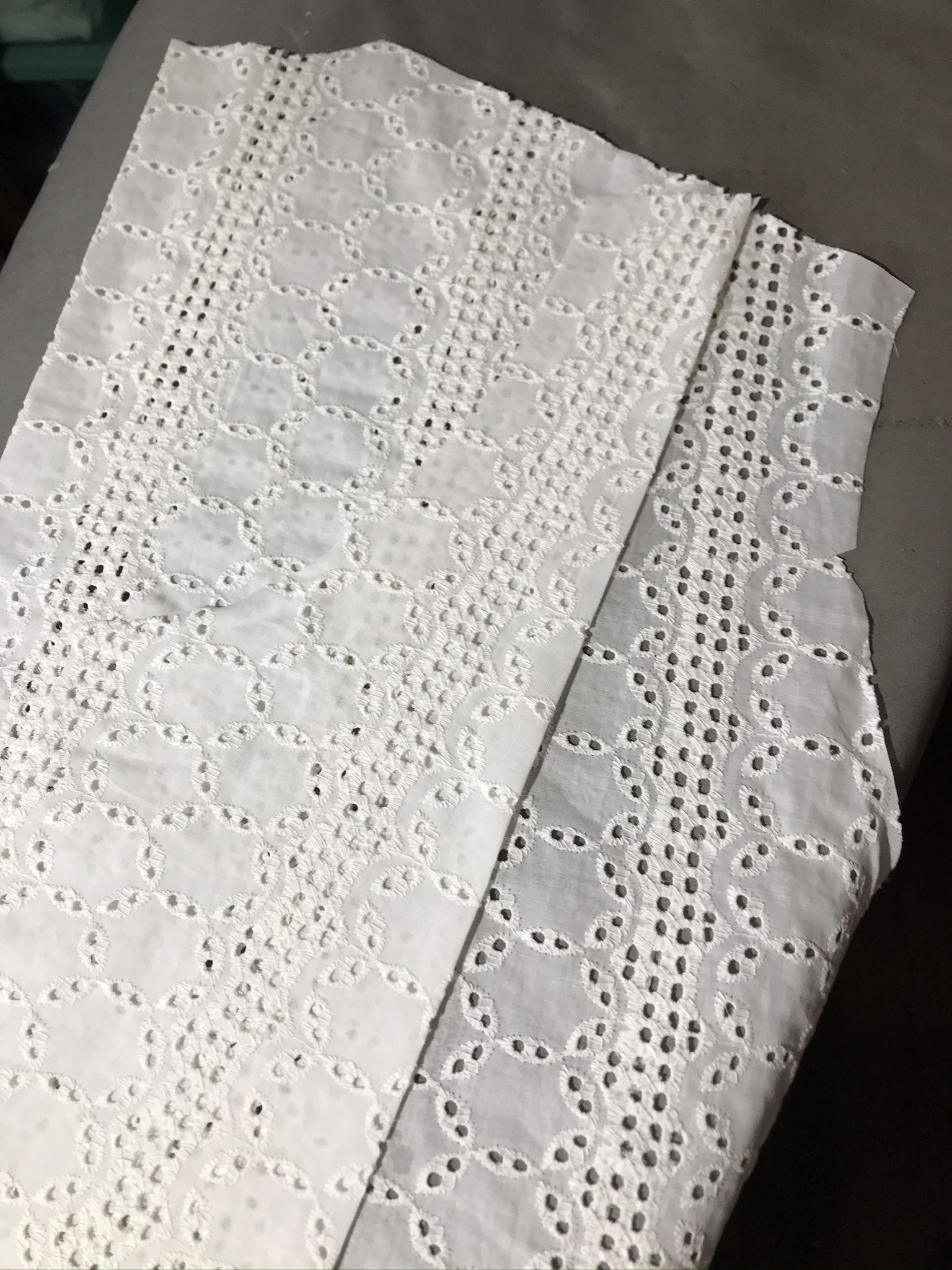
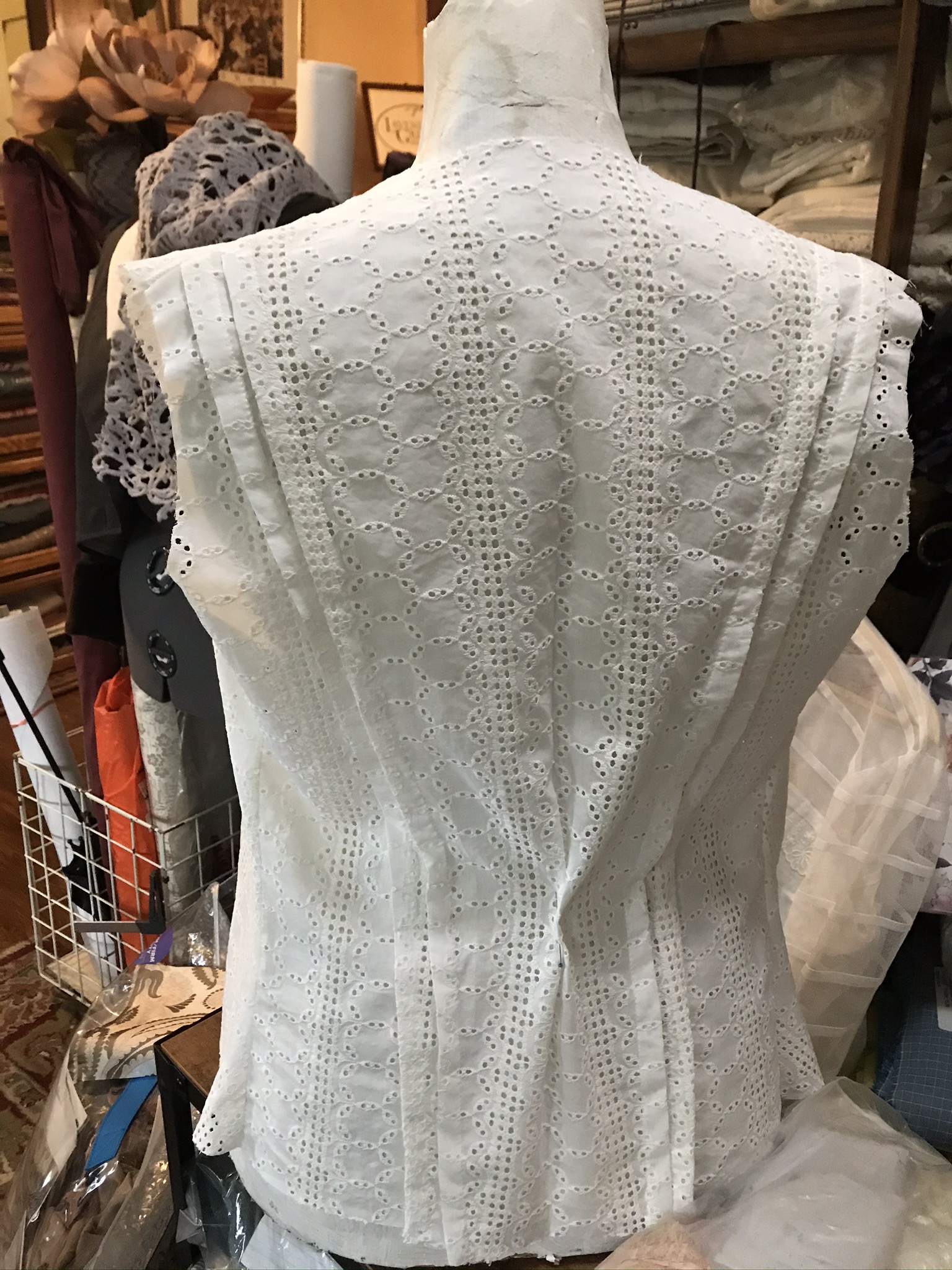
For the bodice front, I started by attaching the insertion along that vertical seam, first on one edge and then the other. I always work with the insertion on top, so I can be sure I am sewing close to the design. Once I had the insertion sewn into the seam, I pressed the seams with the insertion opened out.
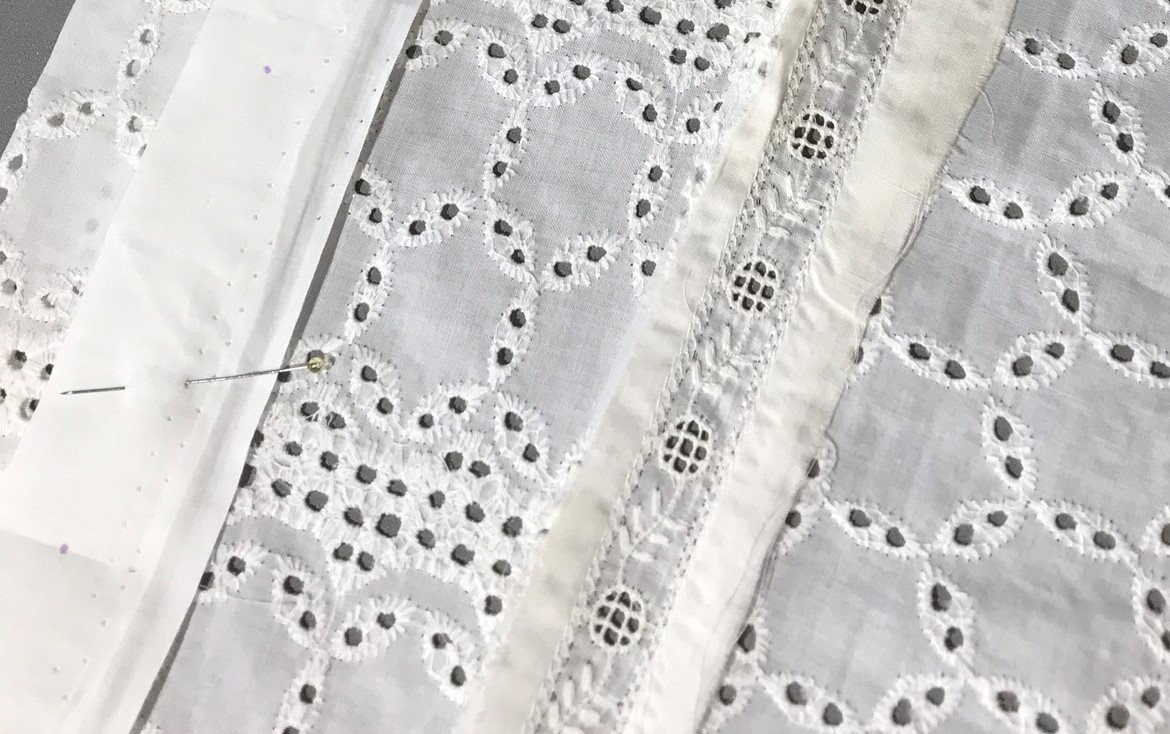
Here is where I took advantage of owning a serger. I let the machine trim the excess fabric and wrap the raw edges. This was so much faster than what our fictional lady would have done! She would trim by hand and then whip stitch those edge, or perhaps even roll the raw edges under and fell them down.
I made the front placket section by pressing the long, smooth fabric together (with cotton organdy, prewashed, inside for interfacing) and then making my buttonholes. After that it was simple to position the buttonhole placket and stitch it down.
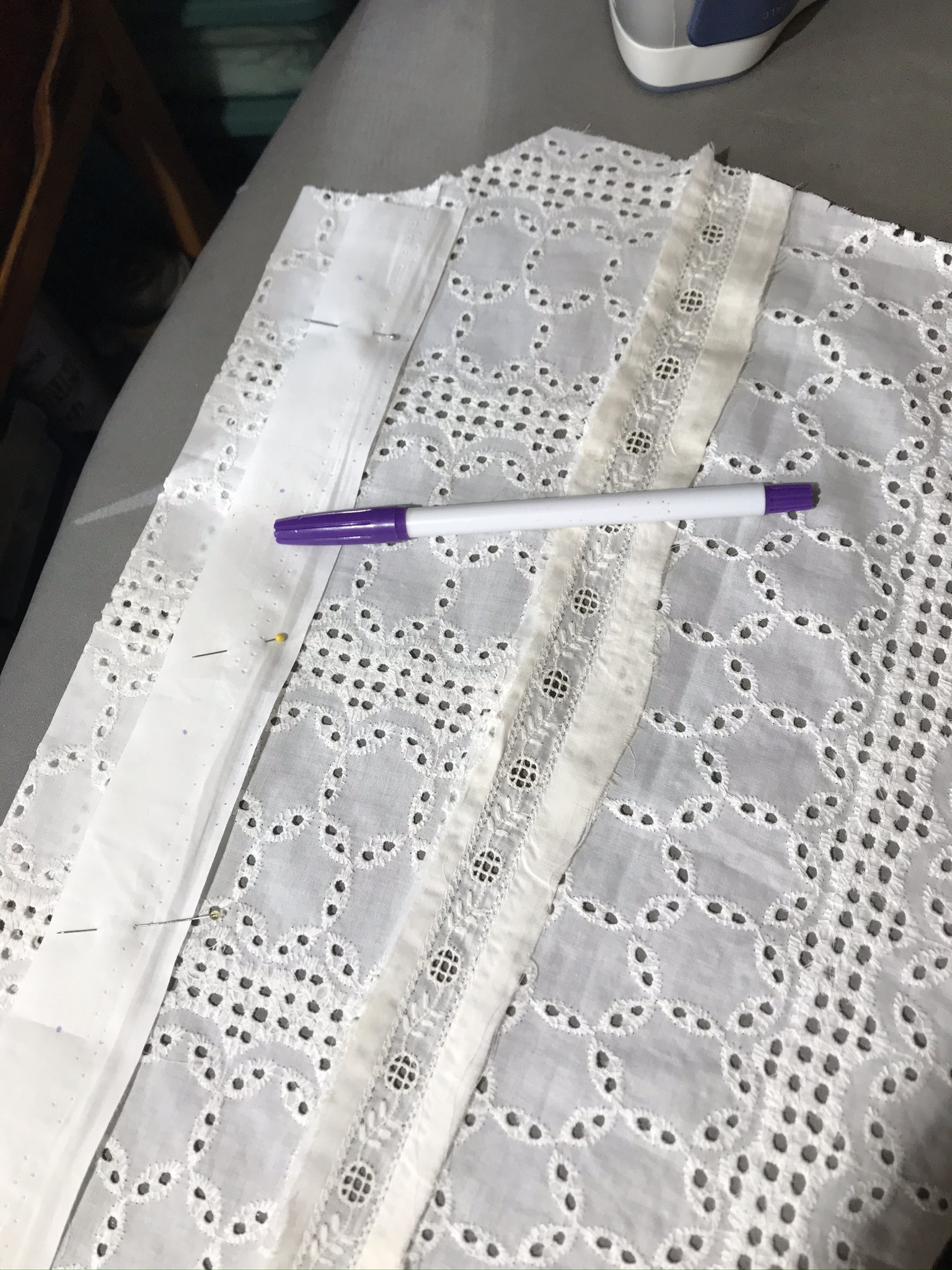
I followed a similar process for the skirt: I sewed the insertion in place first, then pressed those sections and serged them for a clean finish. Once I had the four main gores assembled, I added the band of eyelet along the lower edge. (I did take a few very tiny tucks at the top edge of that band so that it would continue the flared lines of the skirt. Otherwise there might have been a “drop-off” at that area!) Before I added the front panel, I sewed the insertion along its outer edge. Finally, the skirt was mostly assembled, and I was able to create my center back closure. I took advantage of a very wide seam allowance (the part of the fabric that was plain) and turned it back to create the underlap for my placket. Then I was able to finish the two edges (one an extension and one turned back to the center back line). I sewed the center back seam up to that point and topstitched the placket into position across the bottom of the opening.
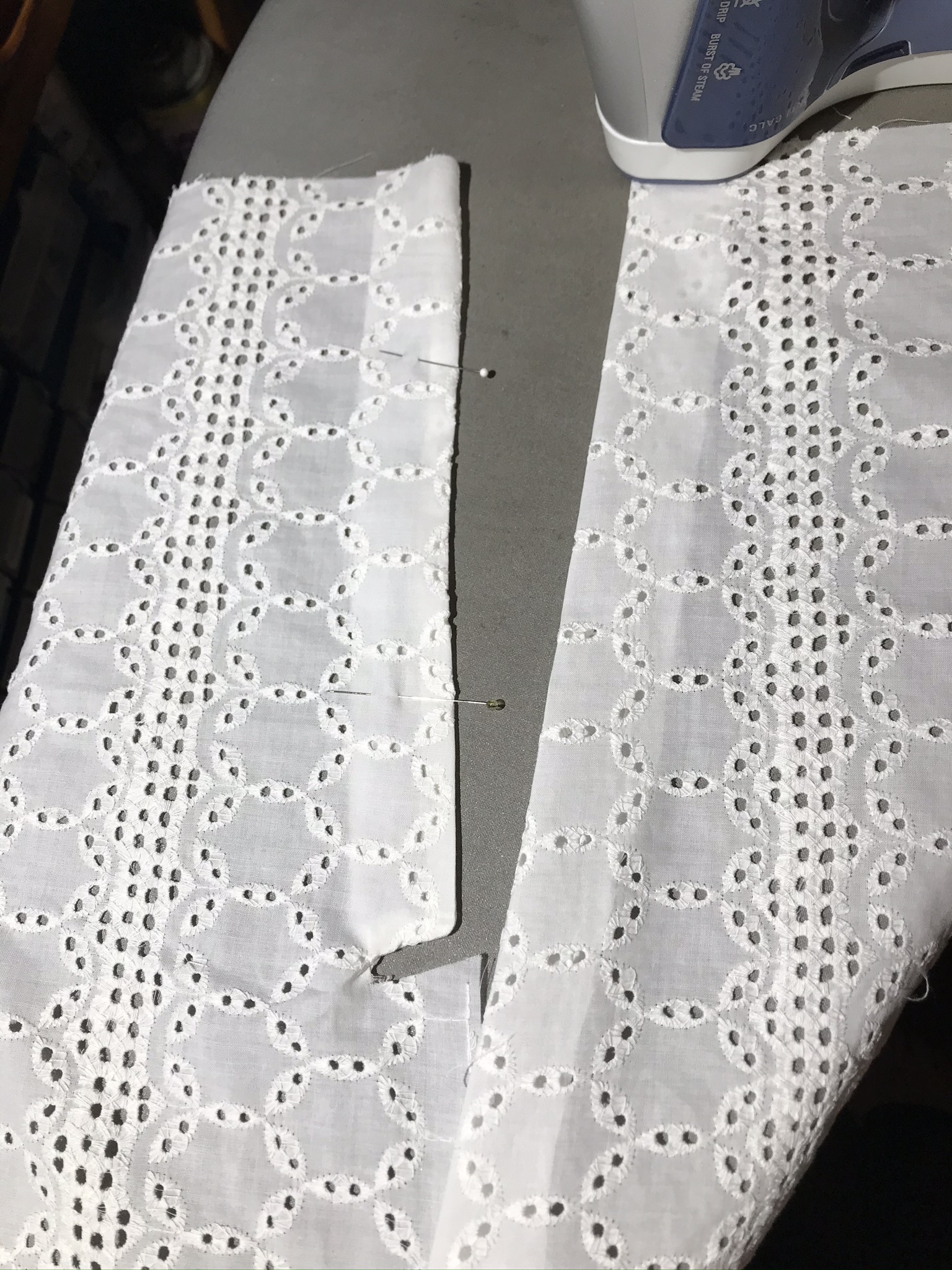
Details
There were still a few details to finish before I could wear the gown! I used a bit of beige silk, cut on the bias, to bind the neck edge. This was a typical method of finishing in 1909.
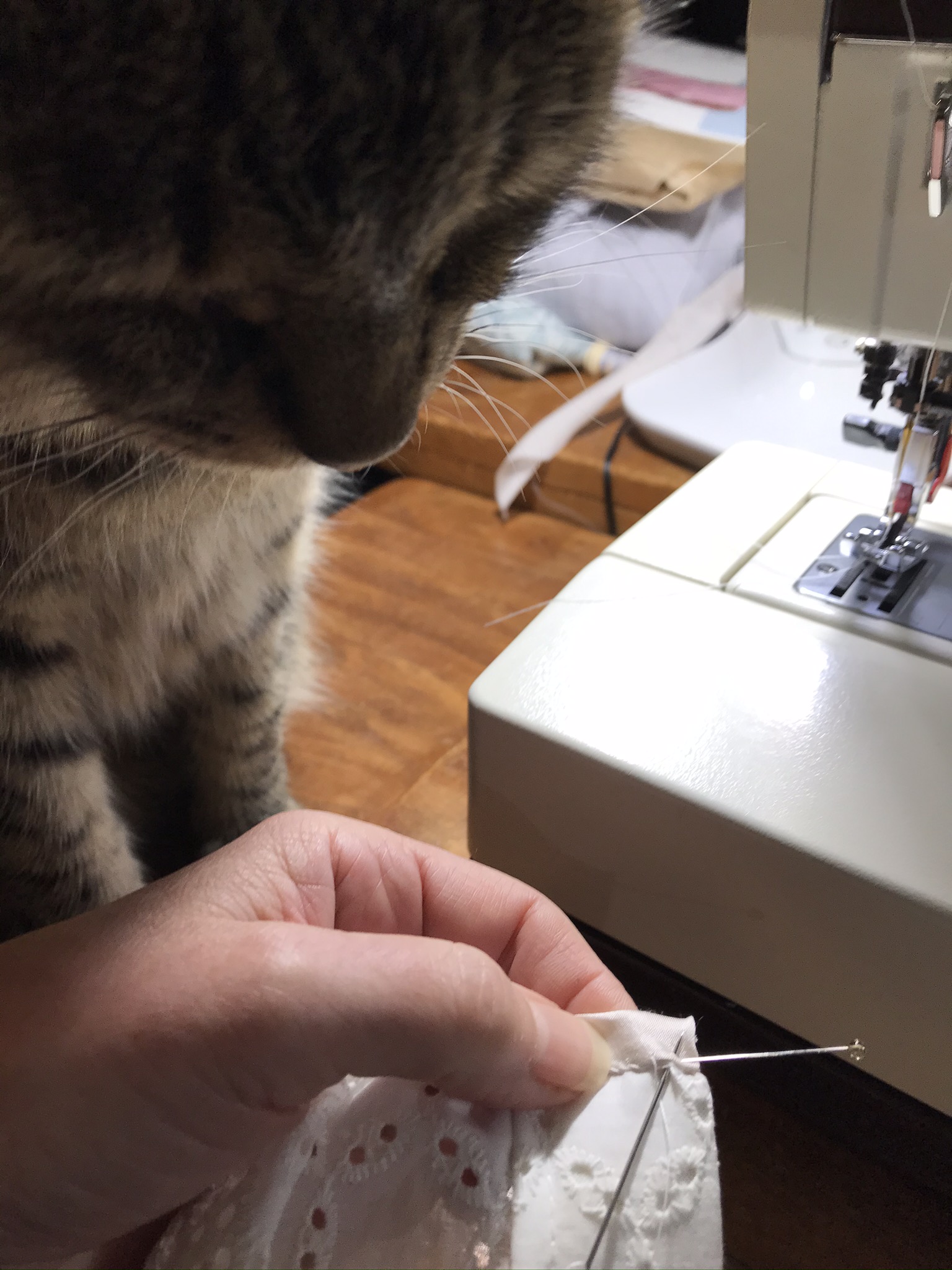
I made the collar from the fashion fabric, lined with the beige silk and interlined with a piece of tulle. I created small channels inside the silk where I inserted modern, clear collar stays. (It’s so unfashionable when your collar won’t stay up!)
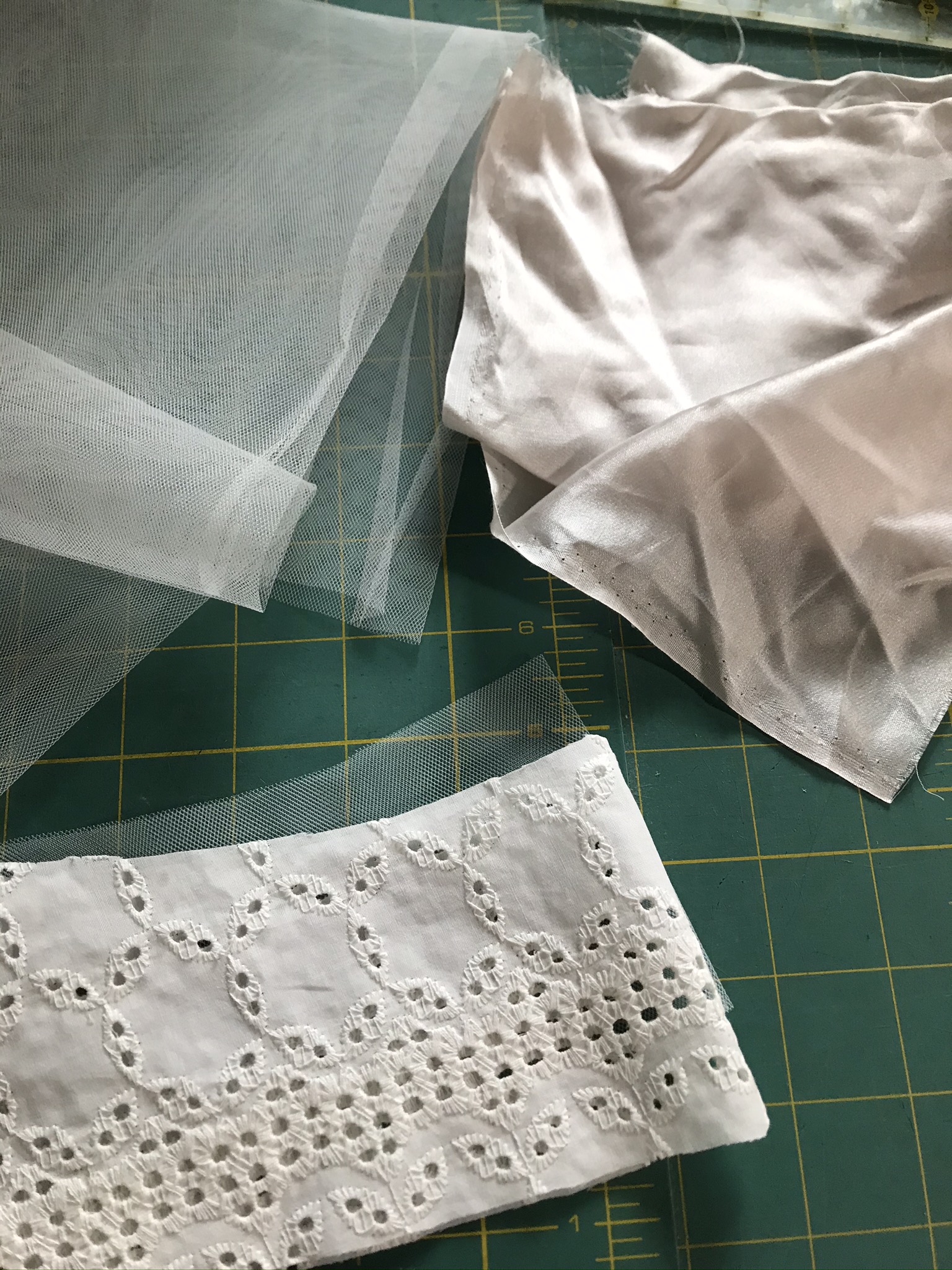
I attached the collar to the bodice with hand stitches along the inside, with the closure at the center back.
I saved the last few bits of sewing for Saturday morning. When I got dressed, I went ahead and put on my Edwardian underpinnings, in preparation for the new gown. Finally, after attaching the waistband, sewing on the buttons, and a few other details, the gown was ready!
Wearing the new gown
I had a marvelous, oversized Edwardian hat that I made two years ago. (This is a wonderful thing about making a period wardrobe; your clothing won’t go out of style!) I had trimmed it in a soft green silk that would go with most of my clothing, and I added a wreath of pink flowers with leaves in a similar green. The flowers can be removed later, if I decide to change my color scheme or use ostrich feathers instead.
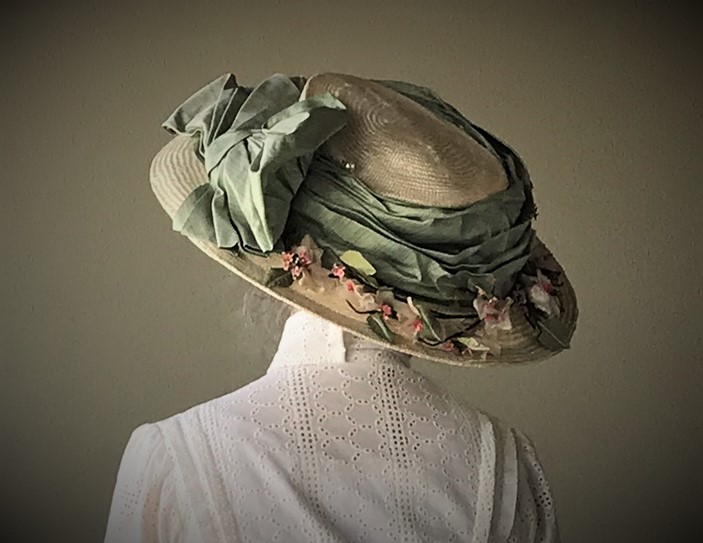
Because there was green in my hat, I chose green silk for a quick fabric sash. I used a vintage white mother of pearl buckle from my “stash”, and I whipped it up quickly on Saturday morning. Fortunately, I already had some green gloves to match and even a small antique fan in a soft green color, a gift from a friend. I added an antique lace neck trim. I chose modern beige shoes with a low heel and beige stockings to match. All in all, I felt quite stylish!
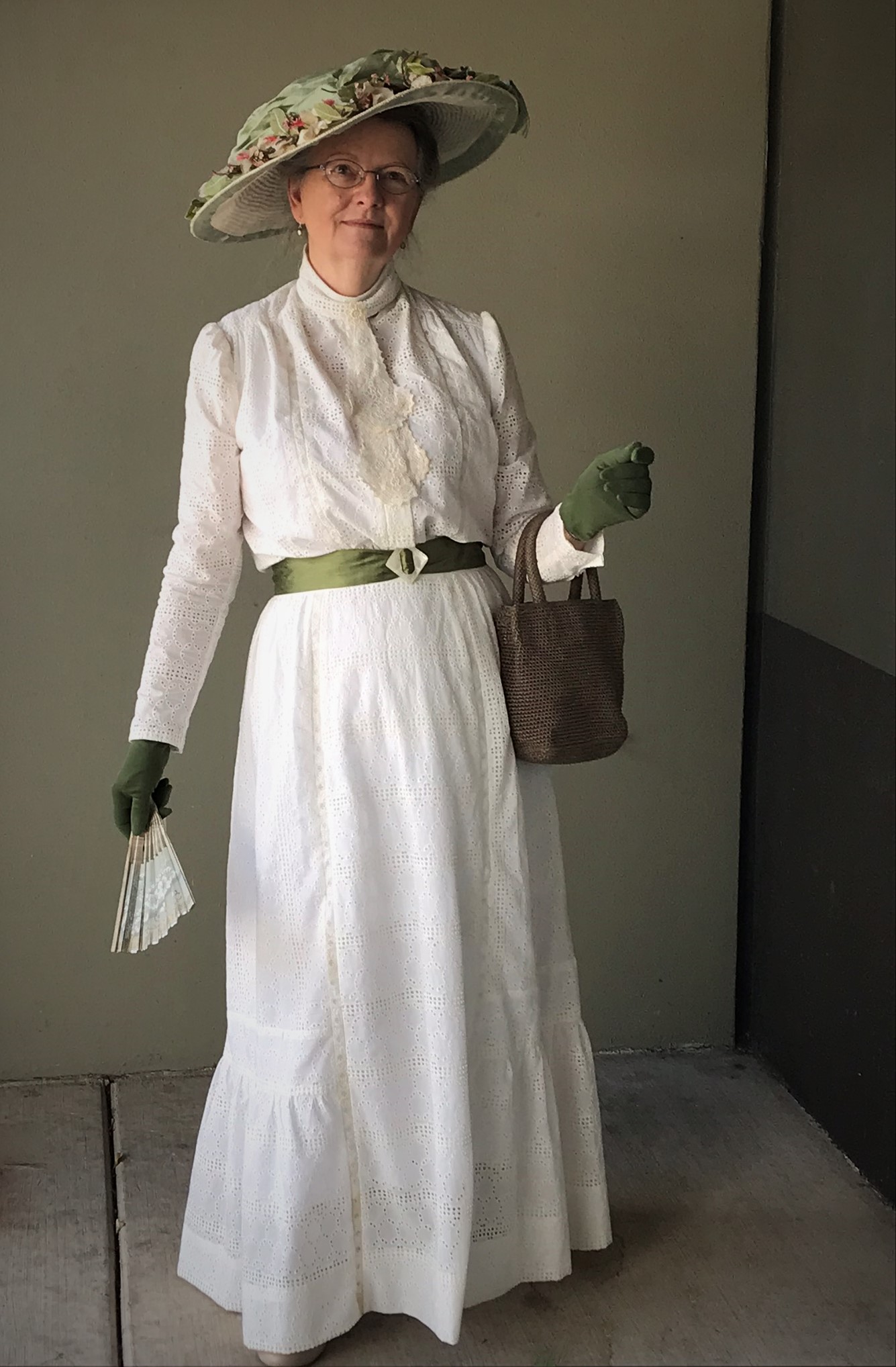
The big day
The weather was beautiful; the antique store was spacious and friendly, with everyone wearing masks and staying somewhat distant. (There IS a pandemic, after all.) But shopping was a joy, and I found several treasures to bring home. 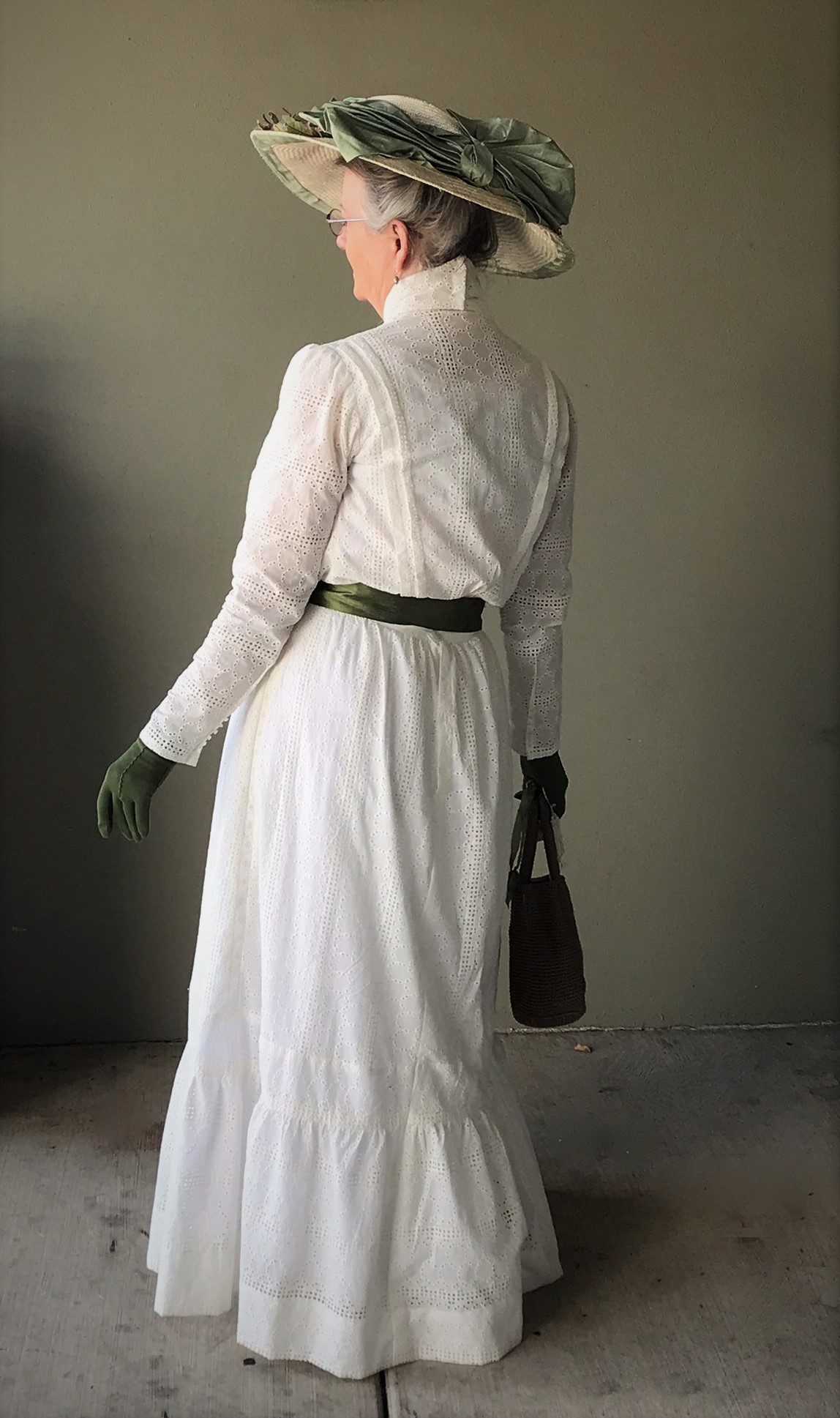
My dear friend Lisa took photos of me in my new ensemble. Our Mrs. Maggie Lynde would have been proud to appear before her friends in such a stylish 1909 gown!
